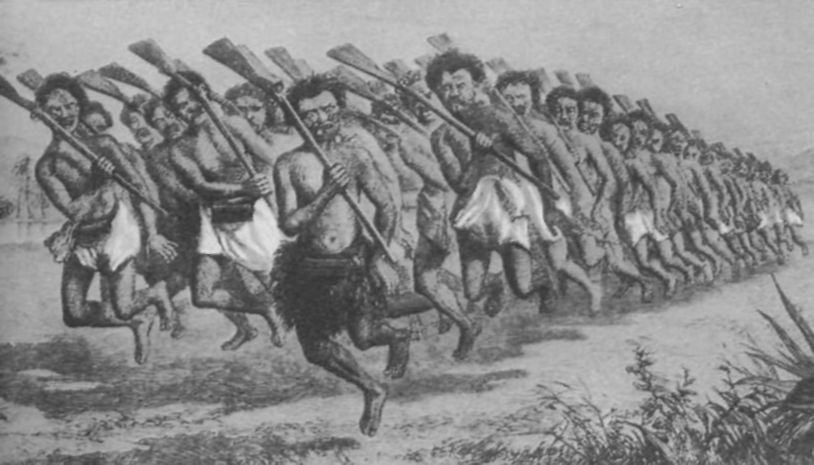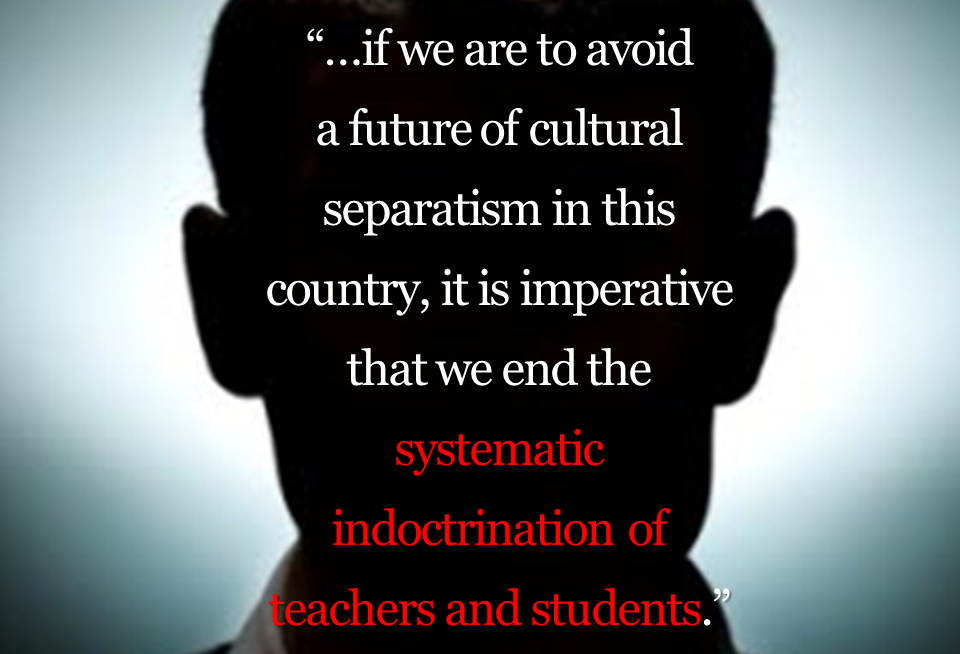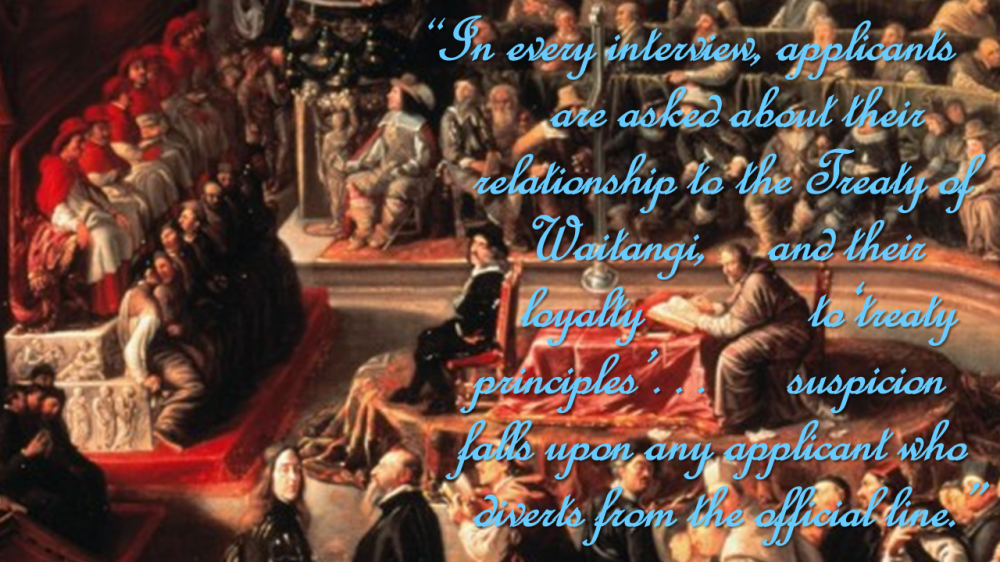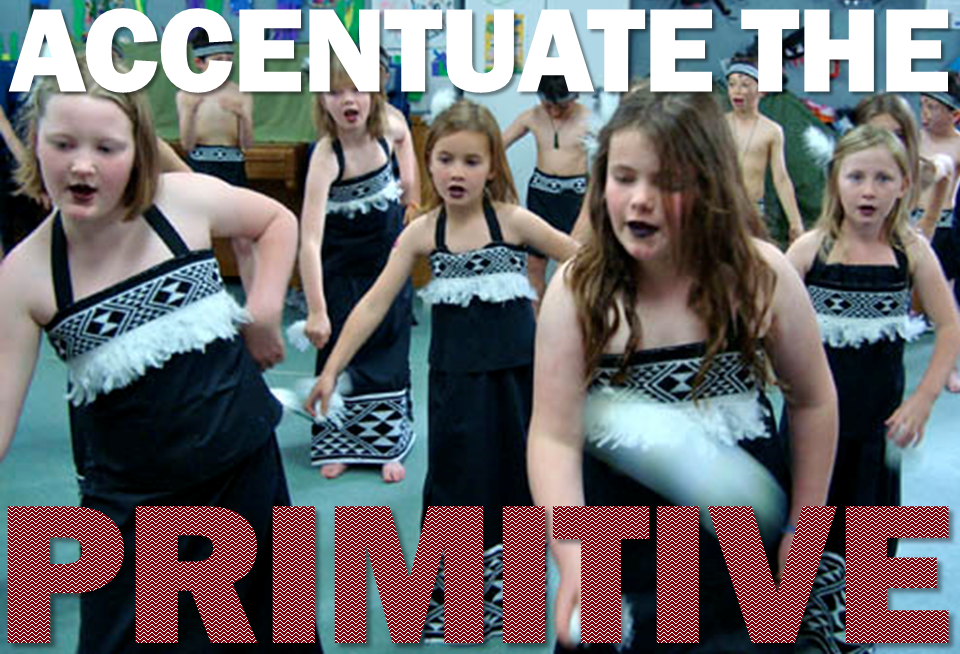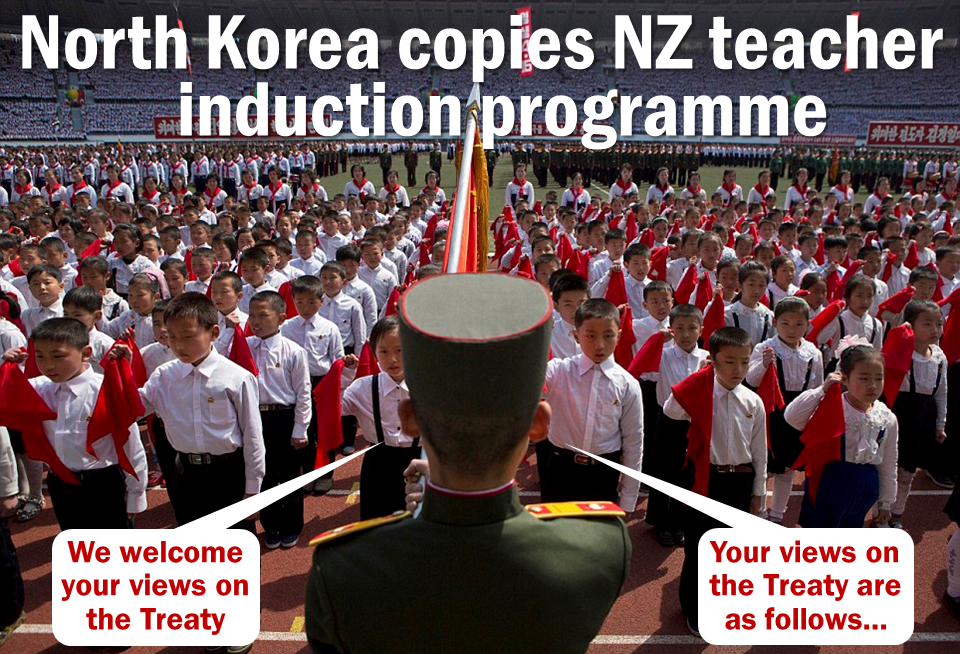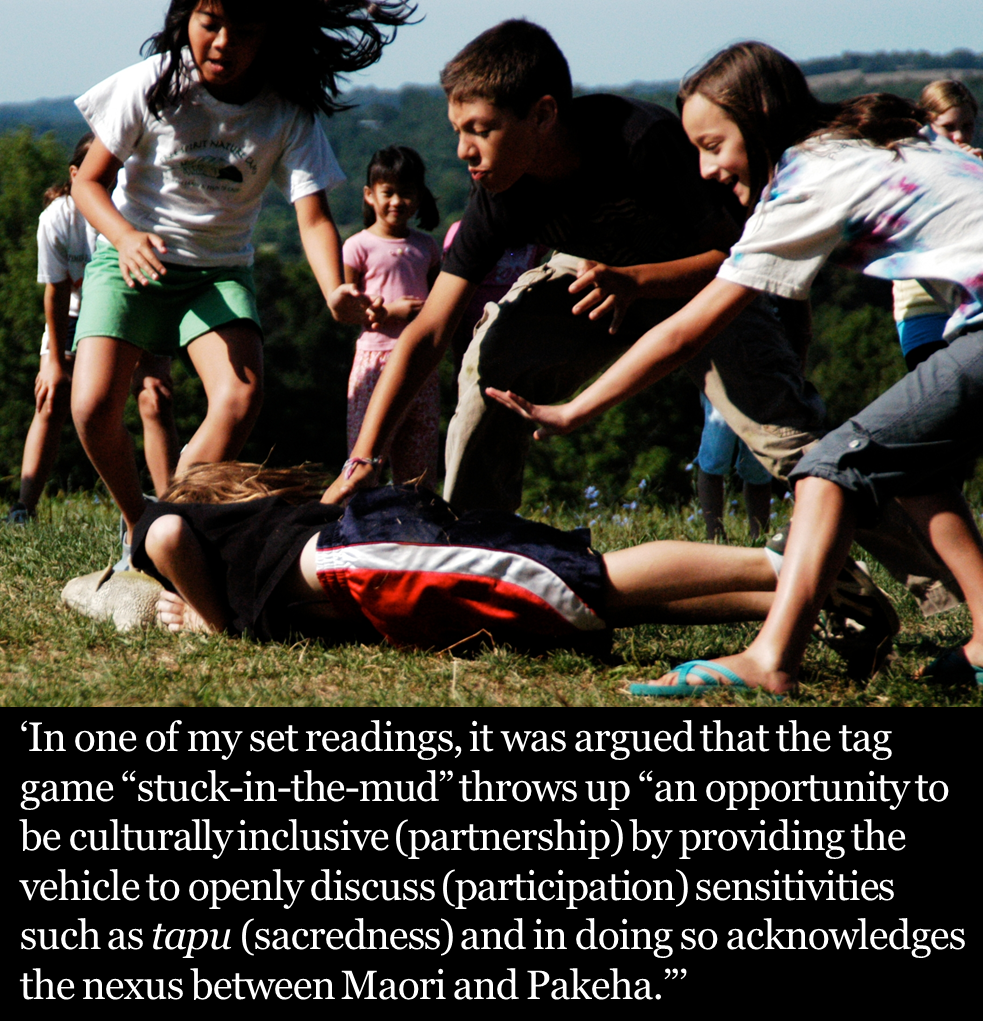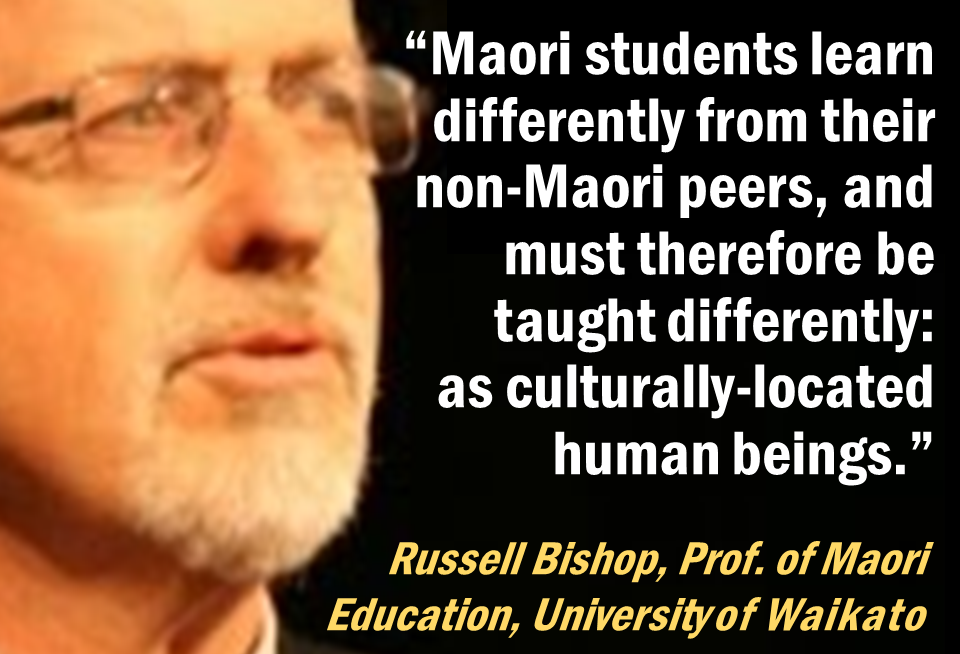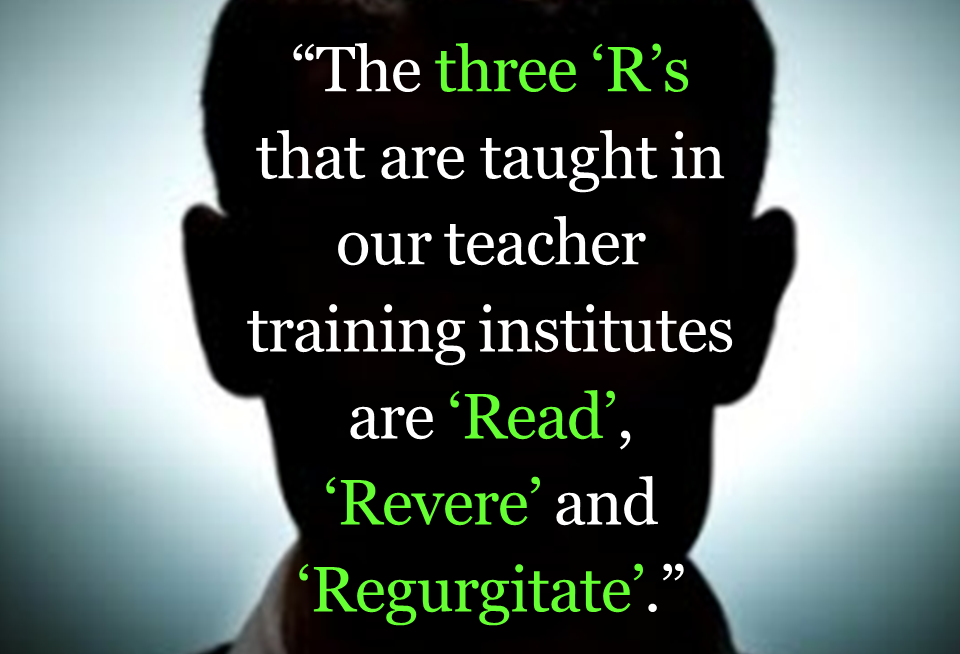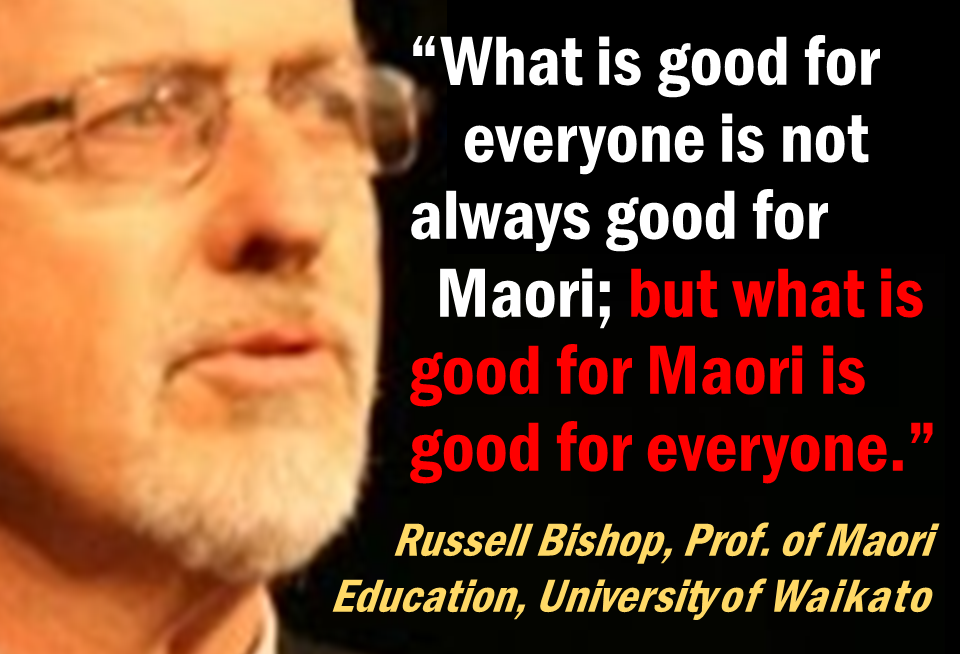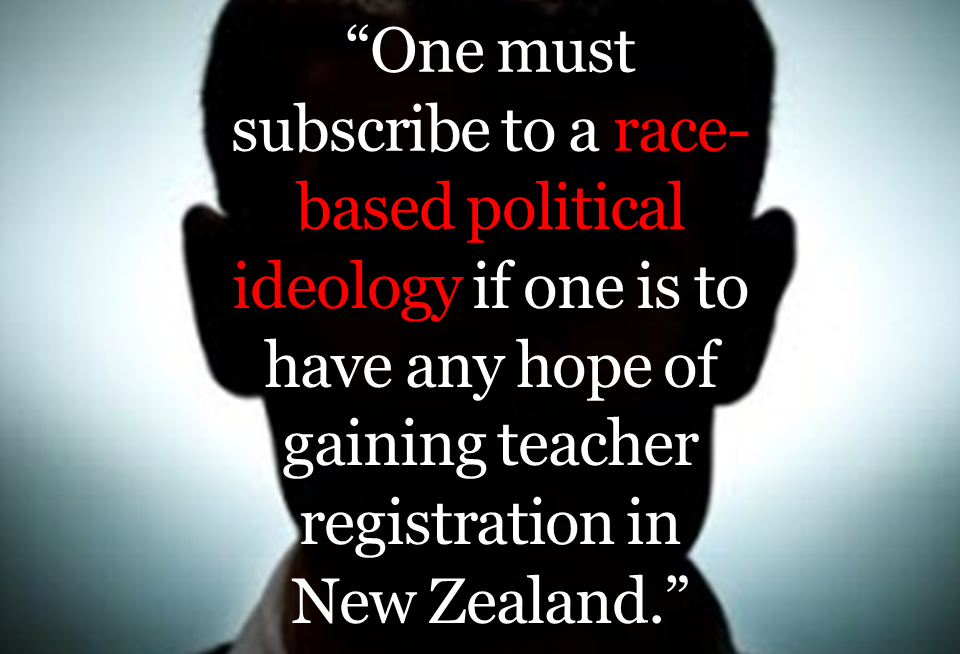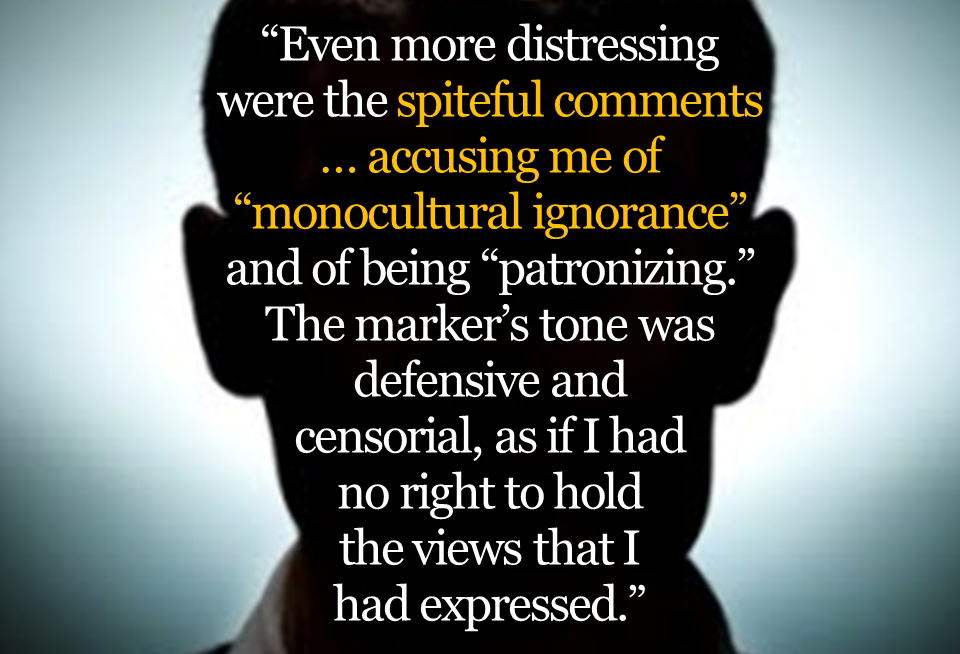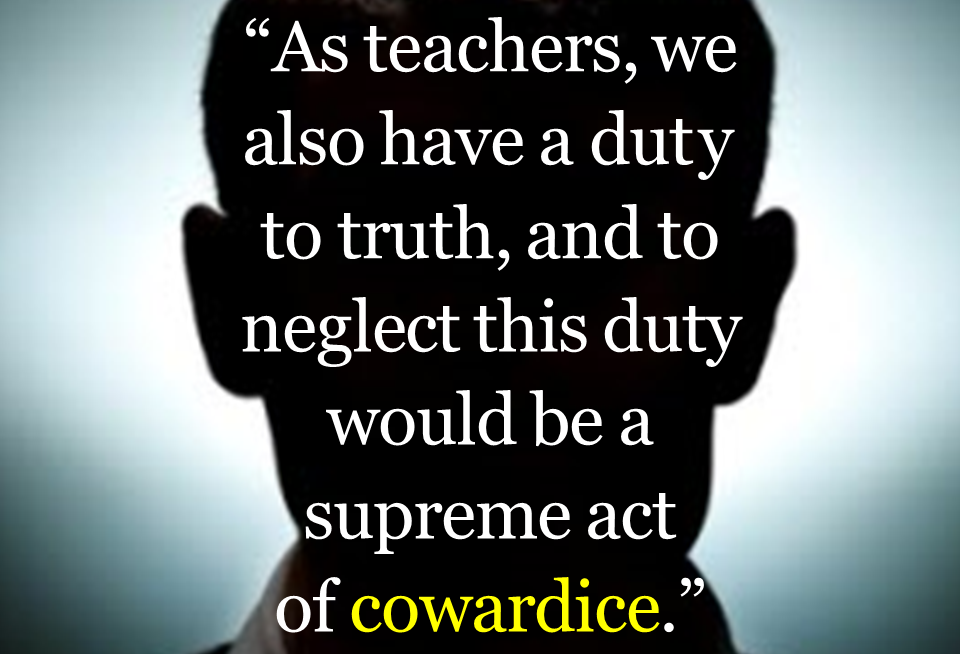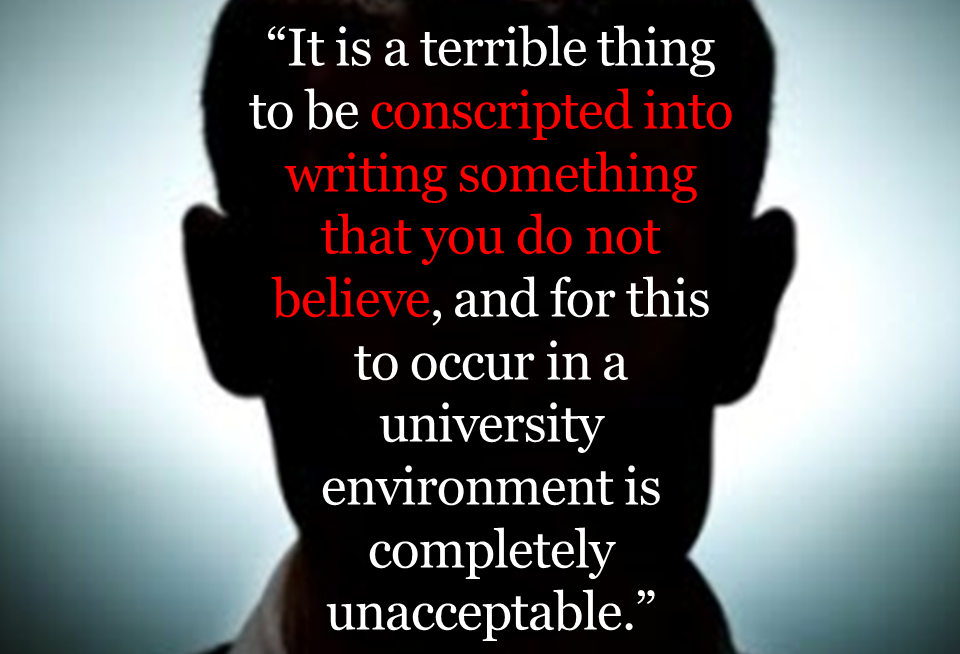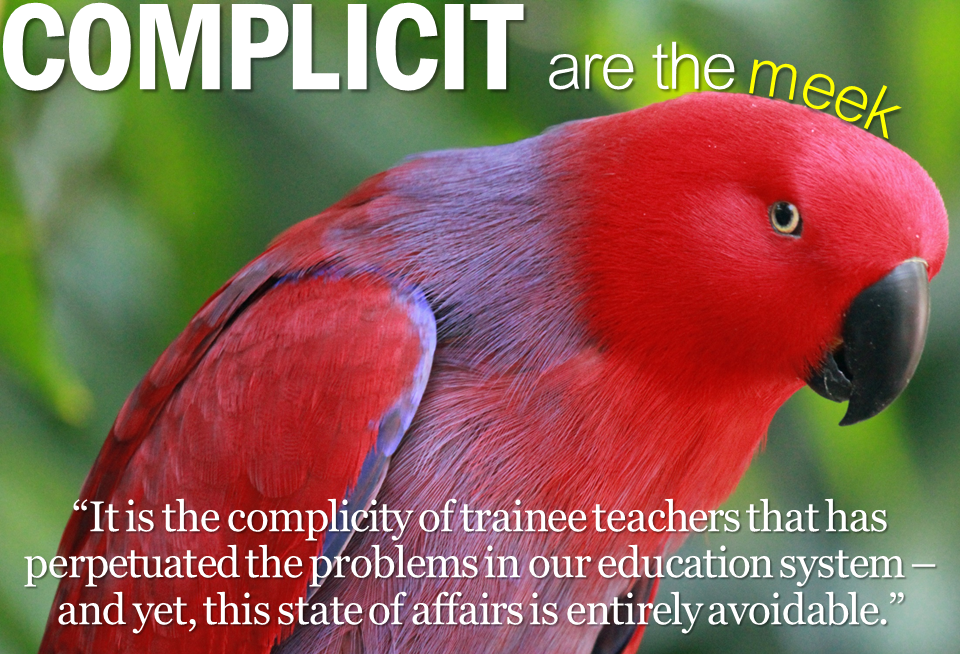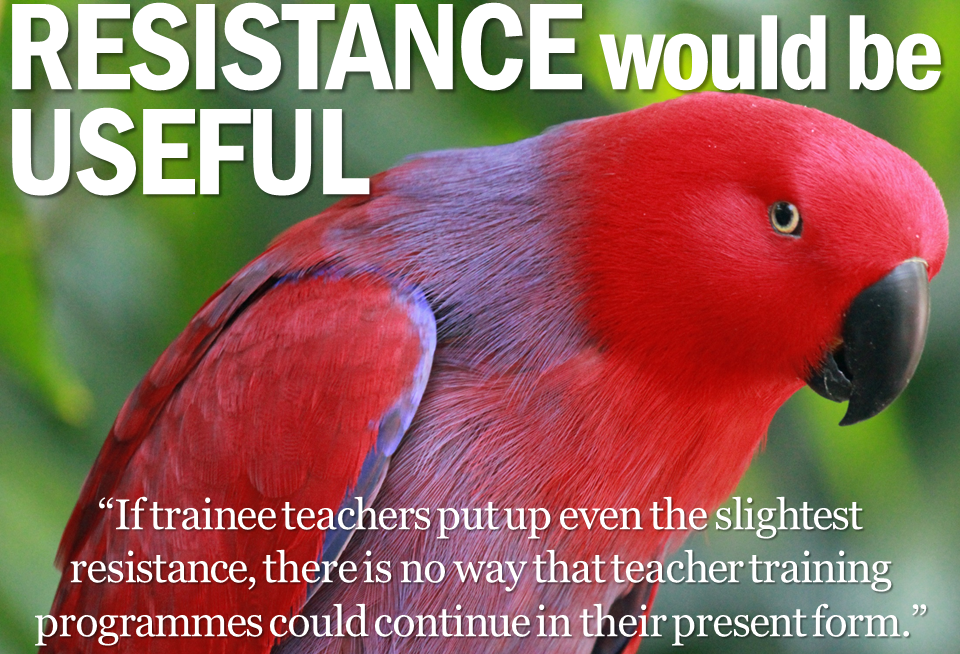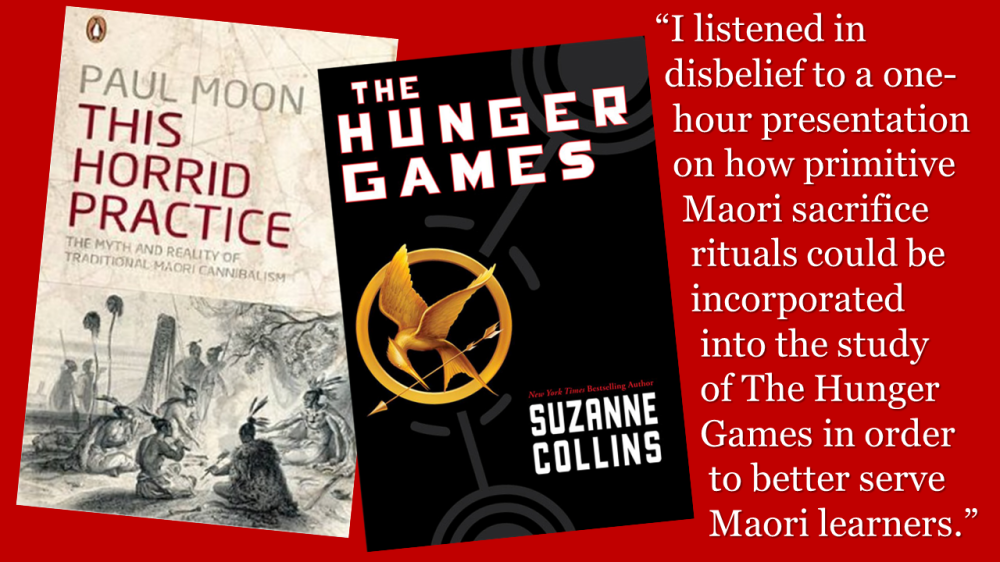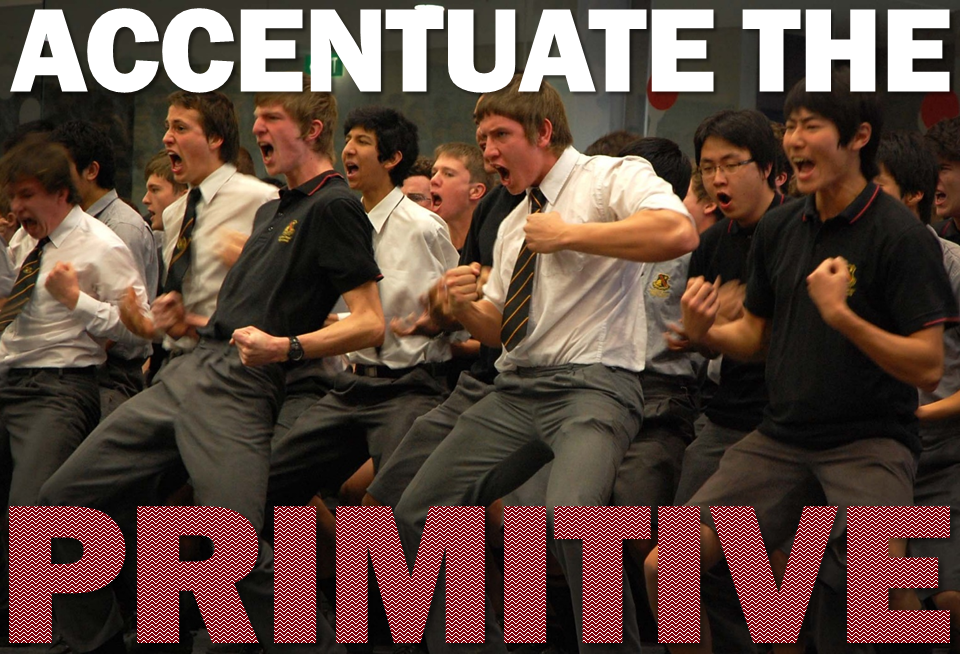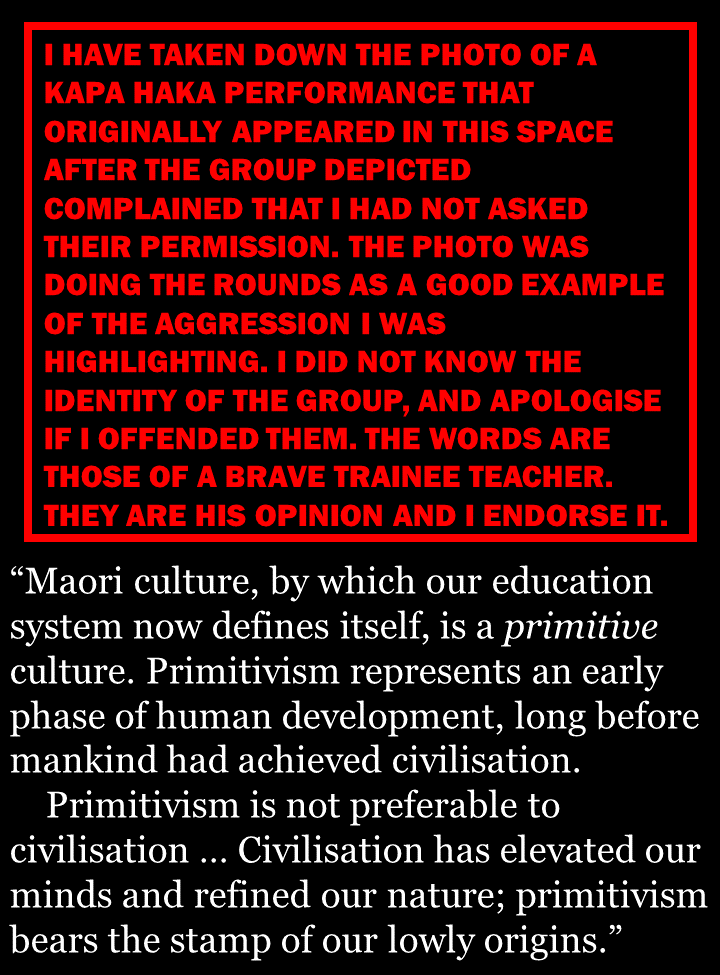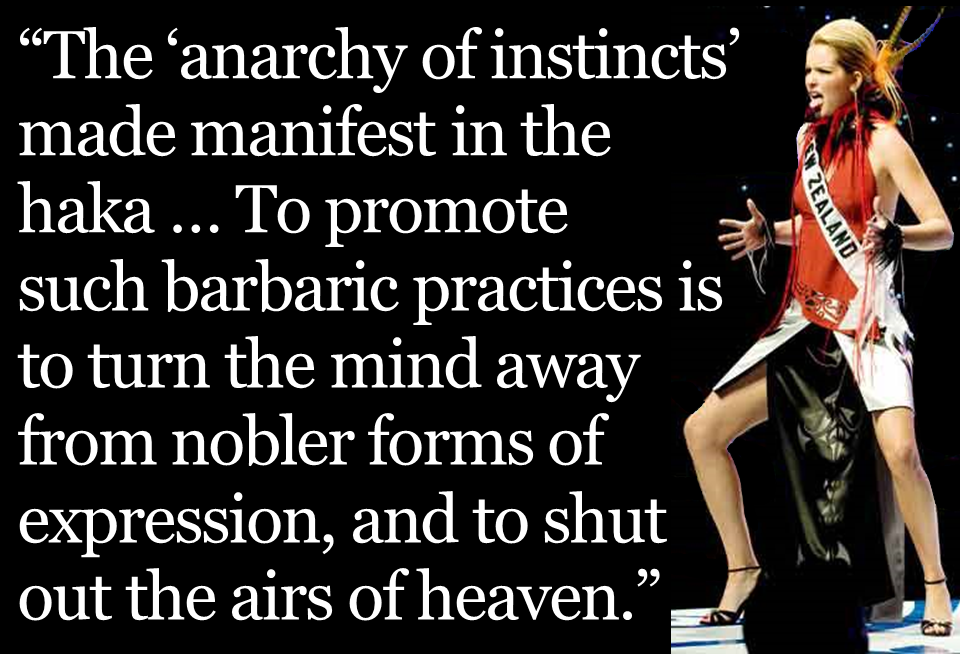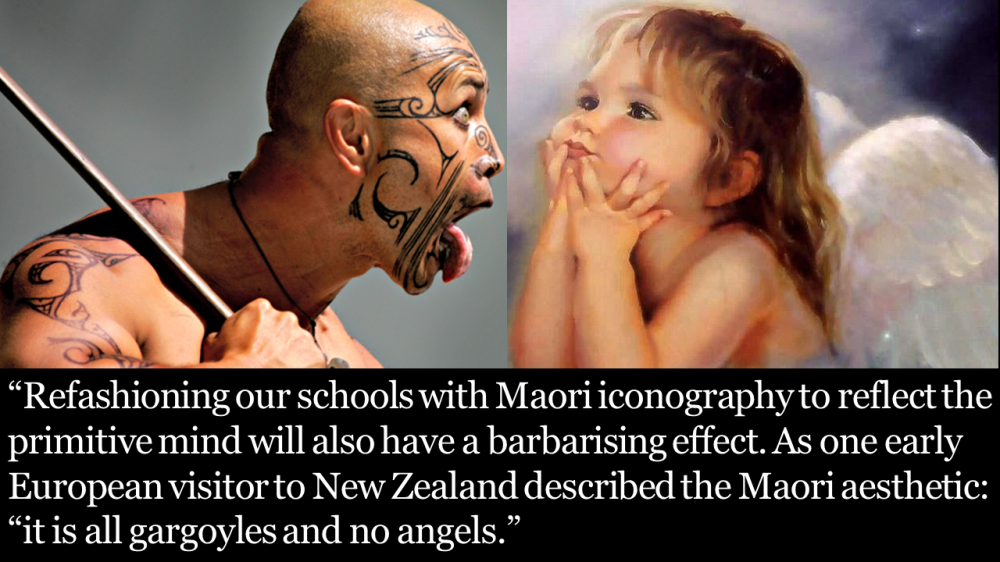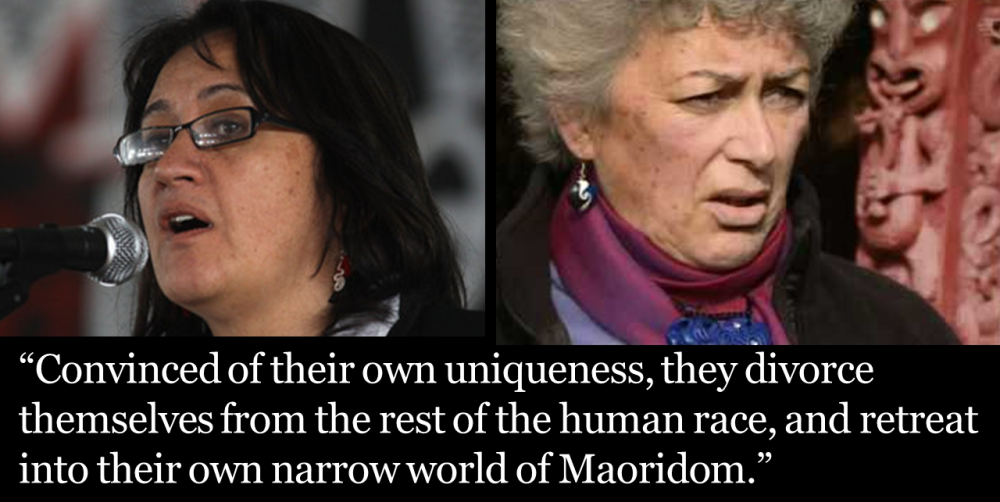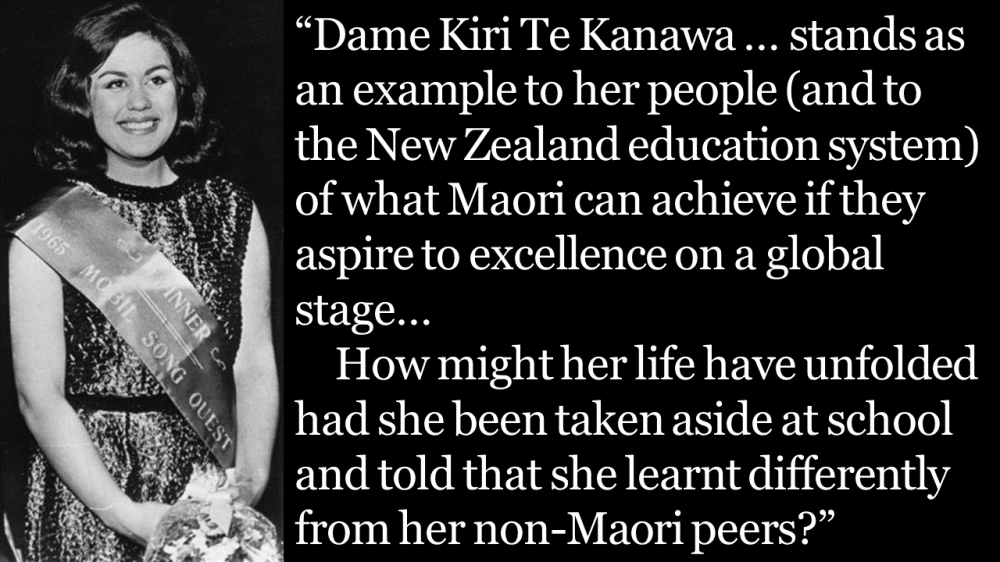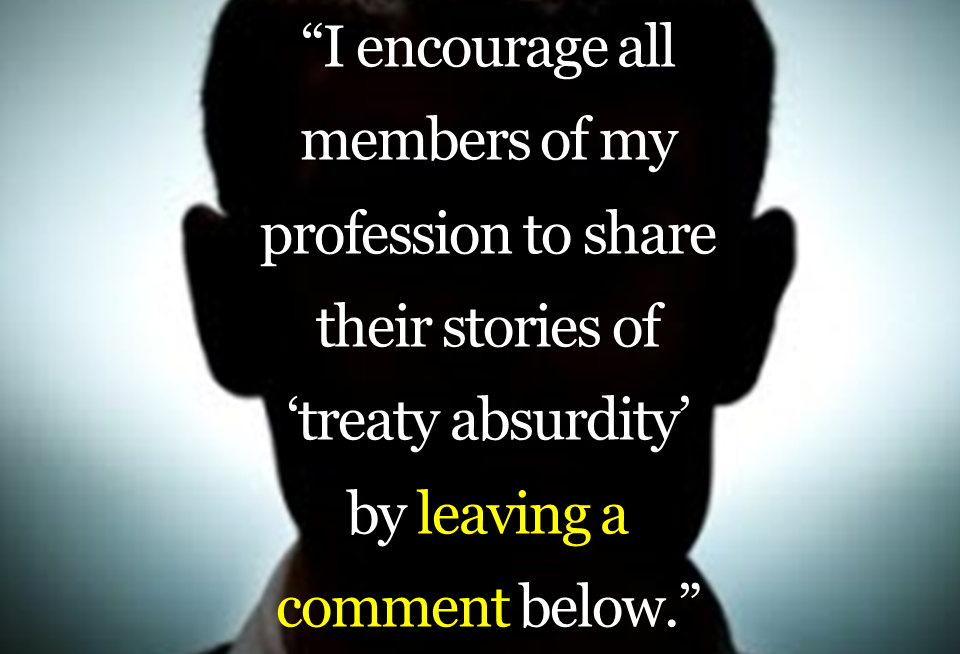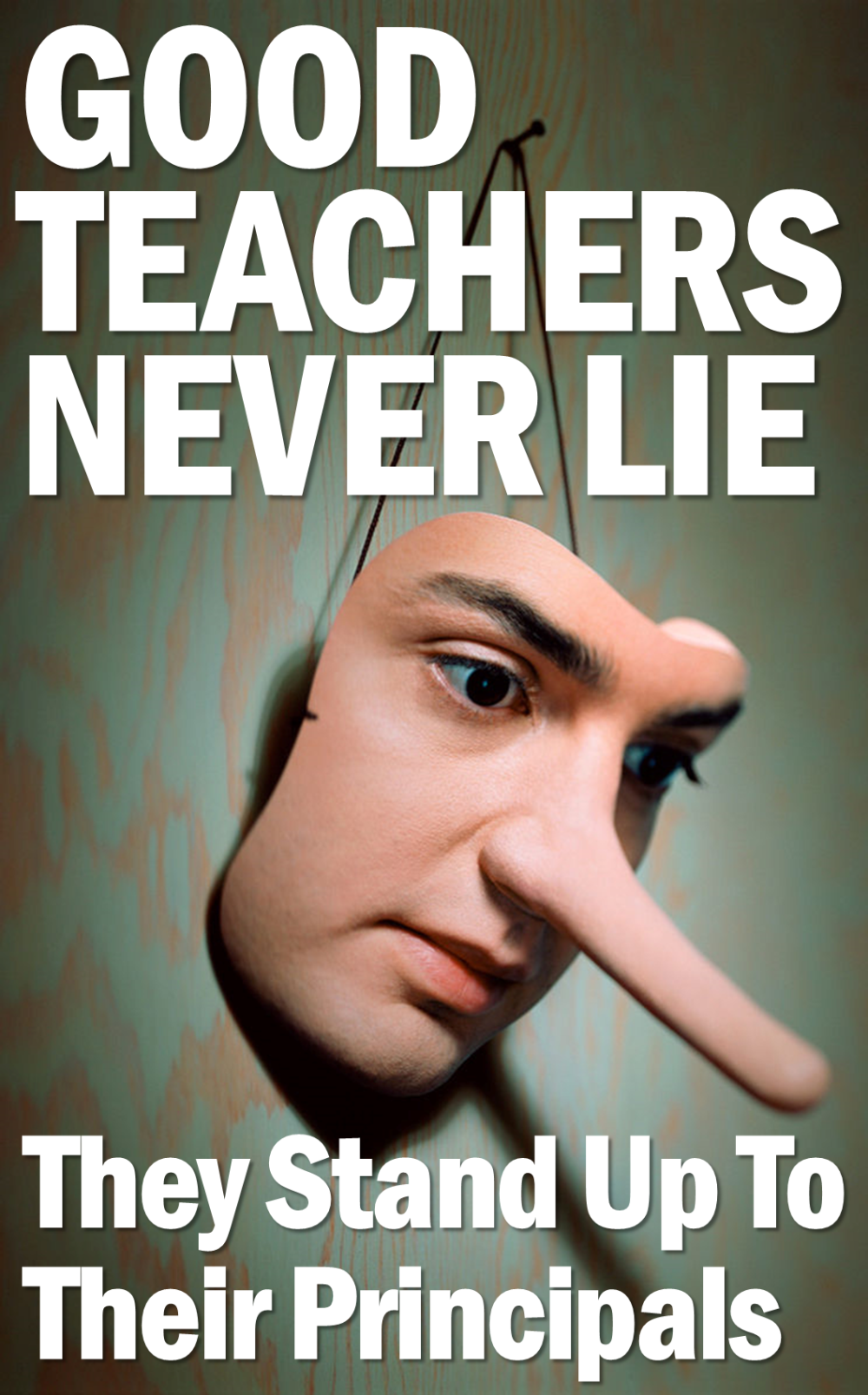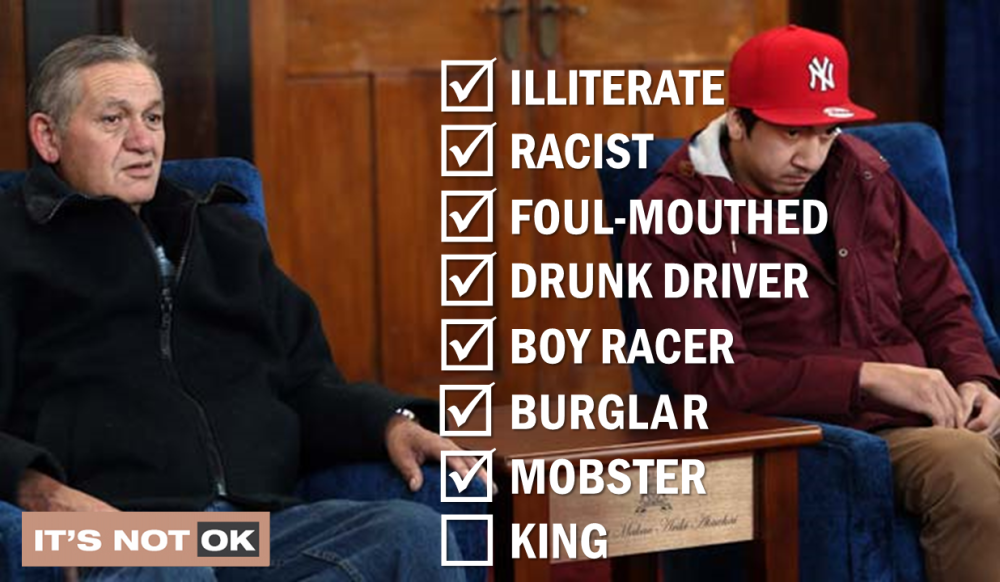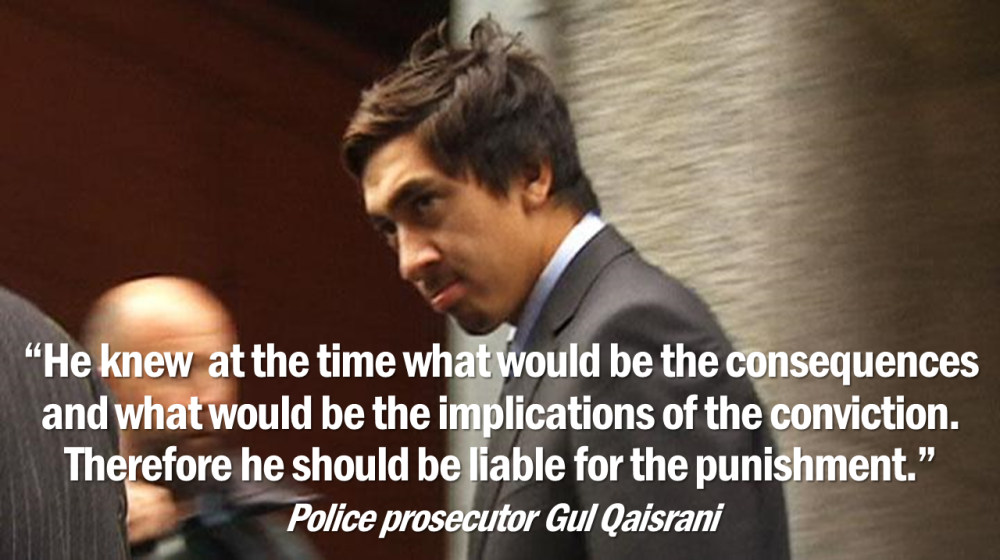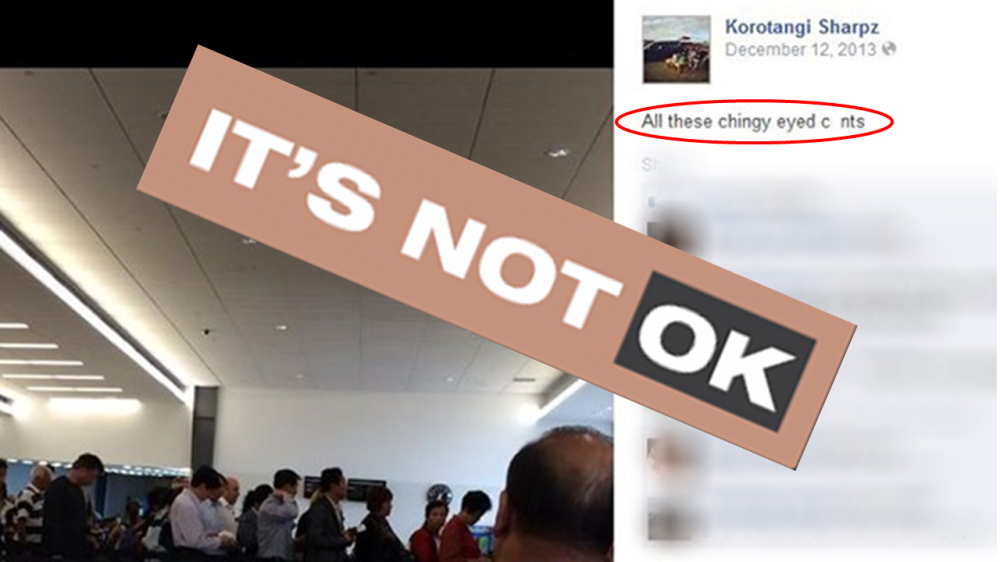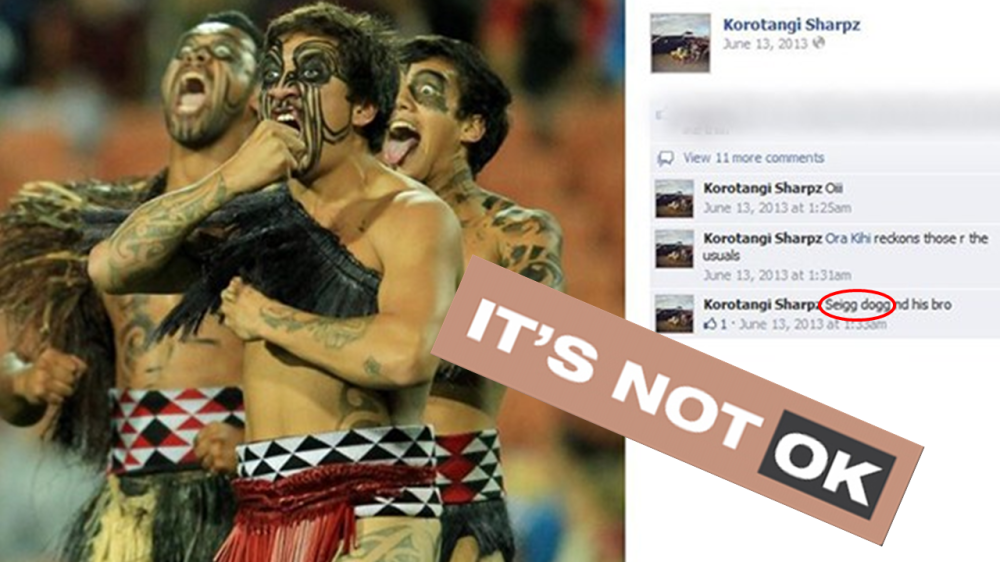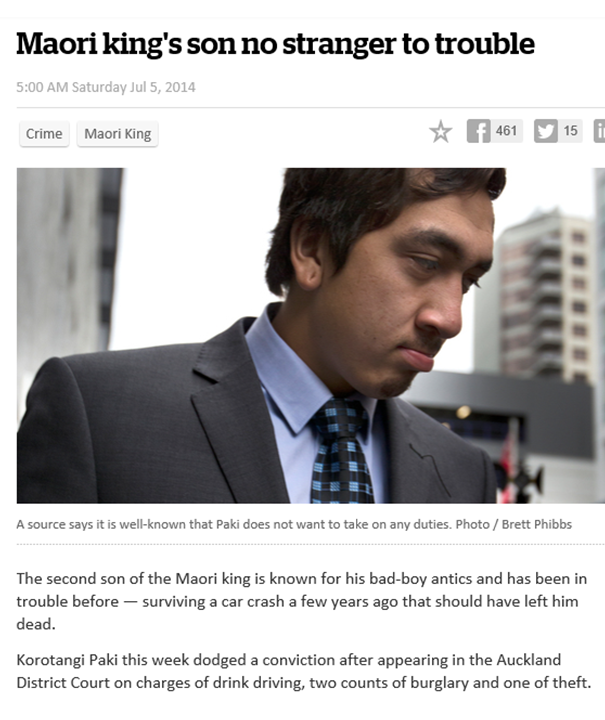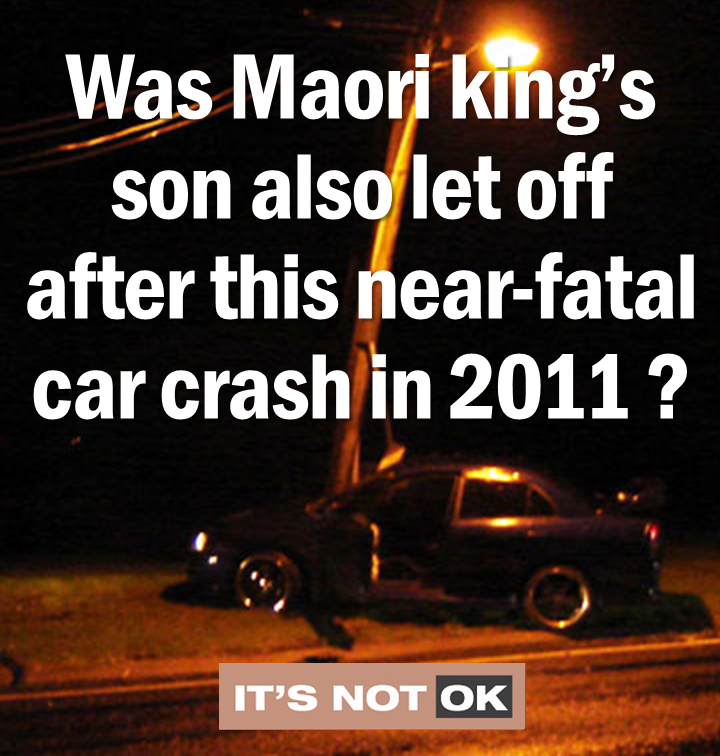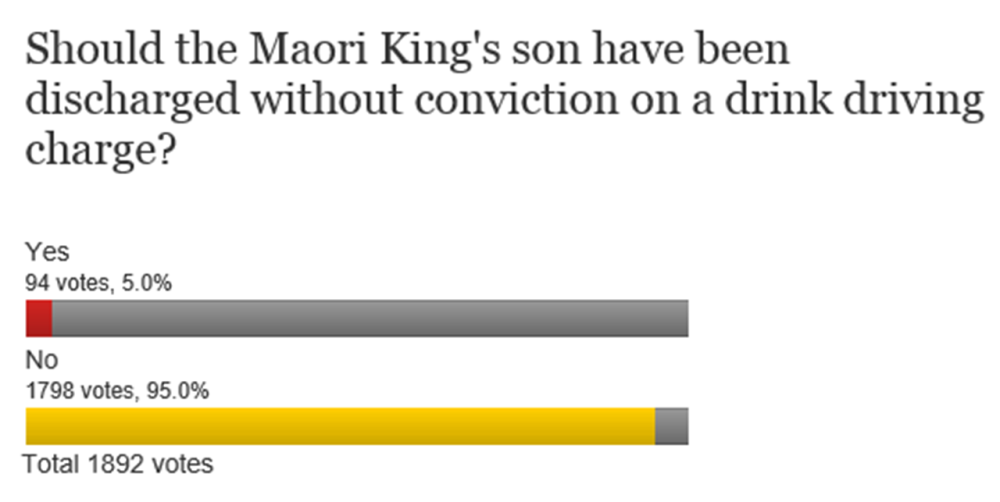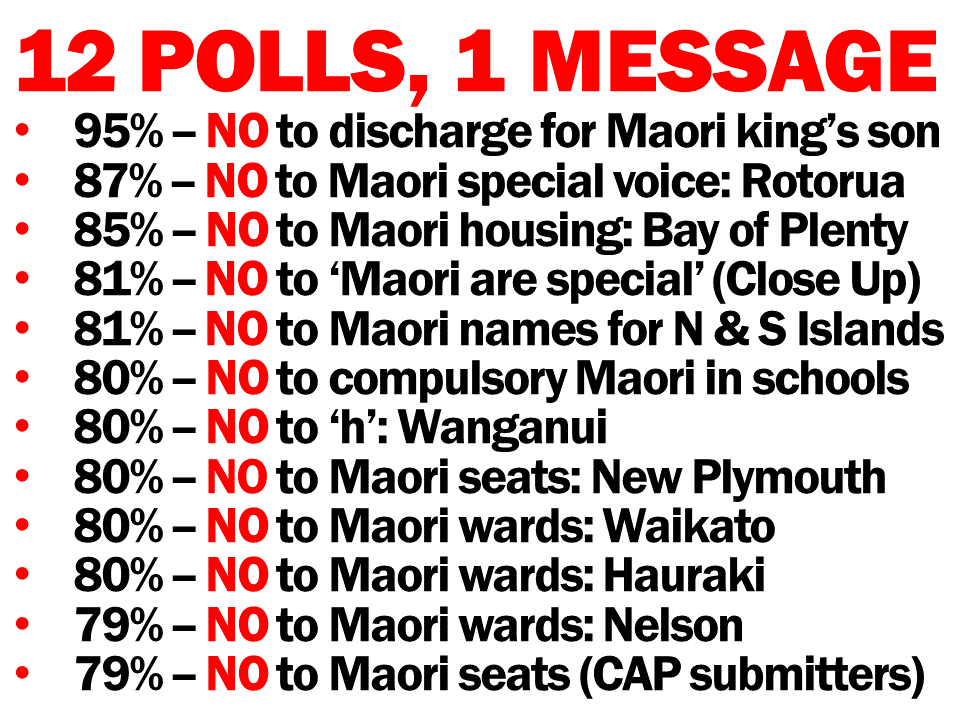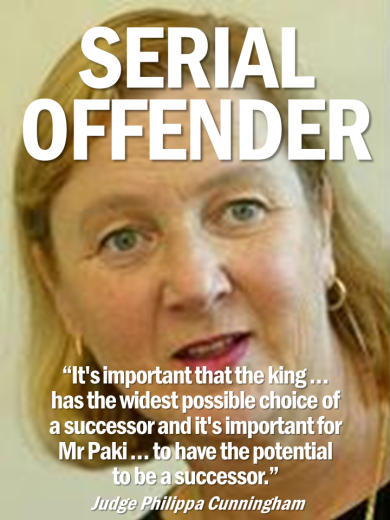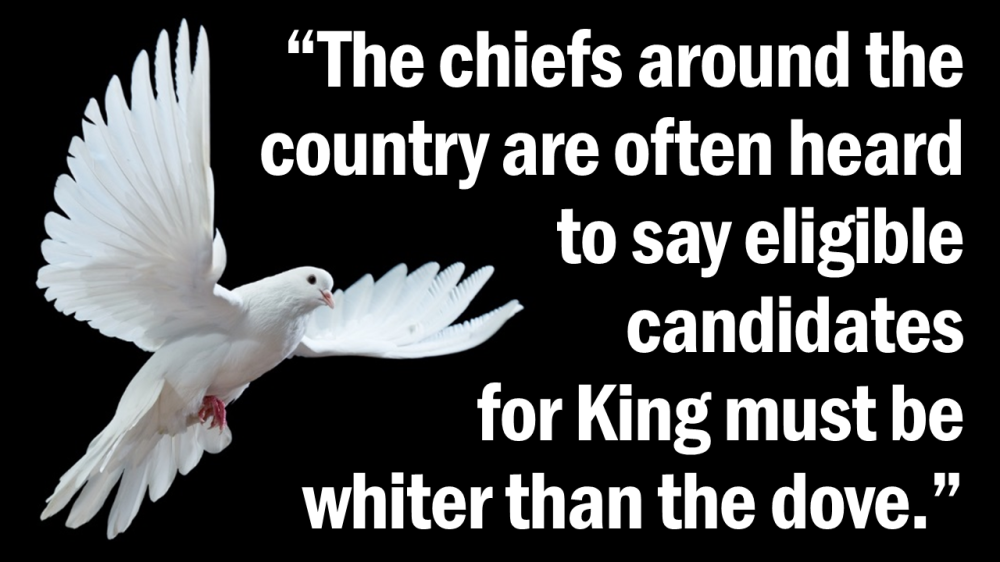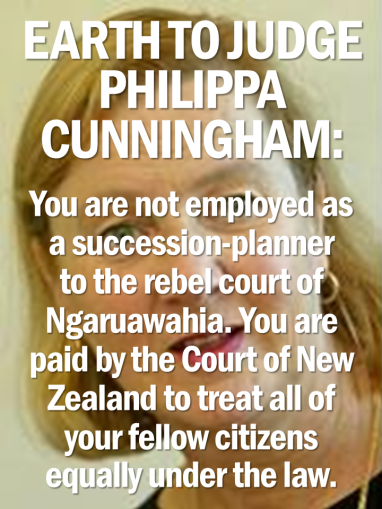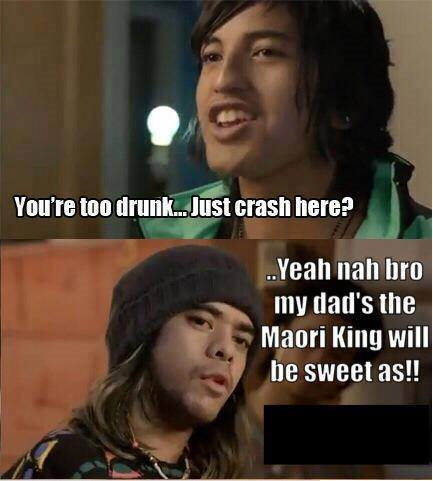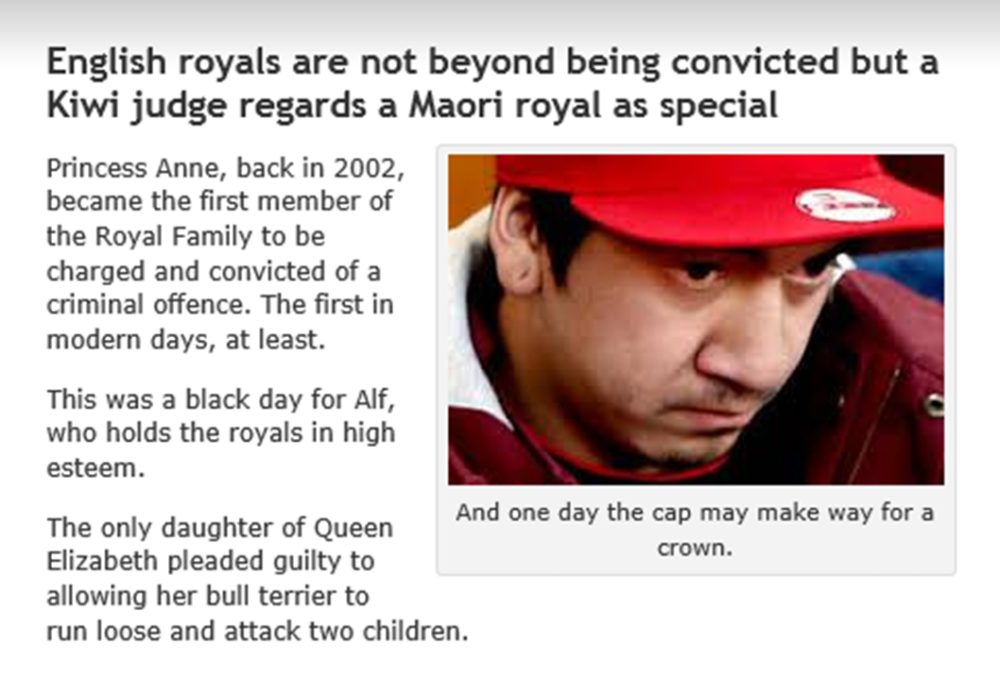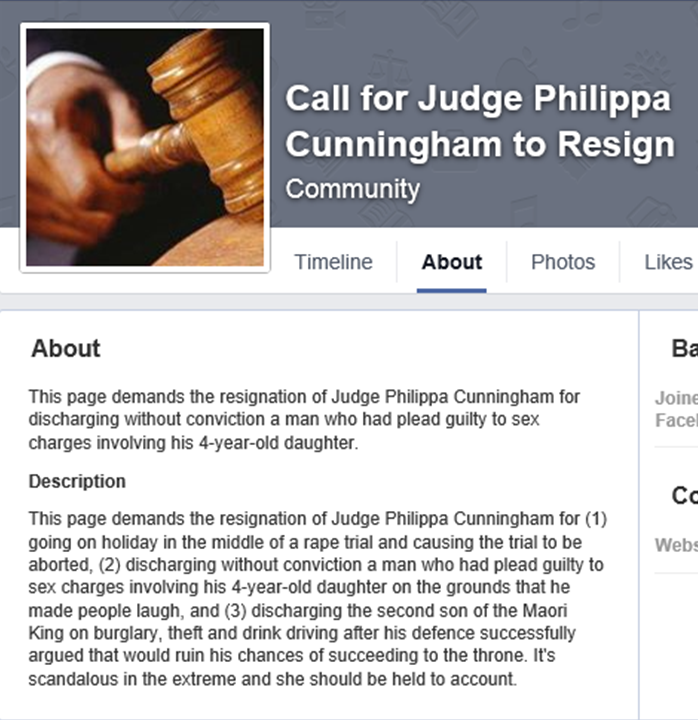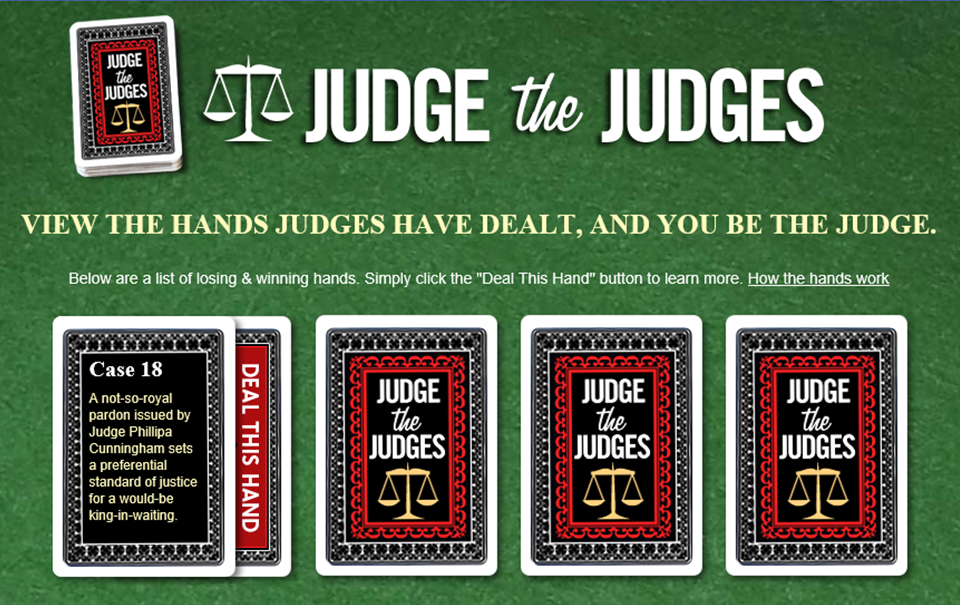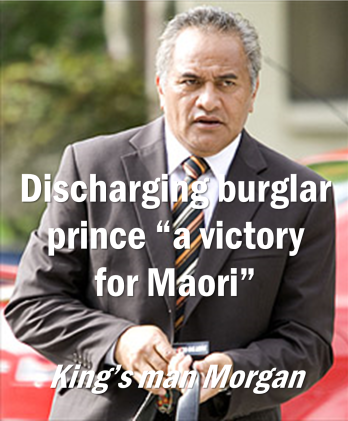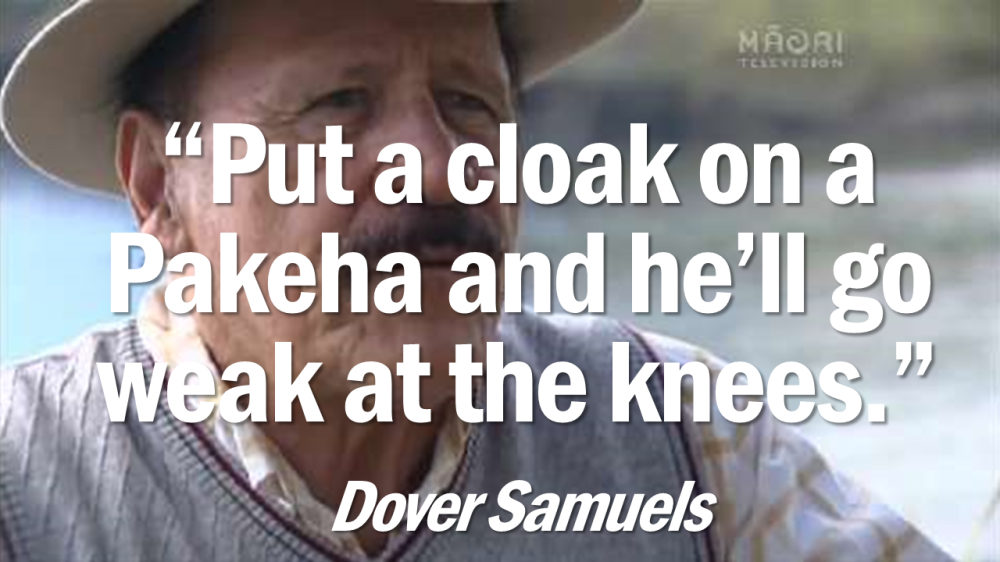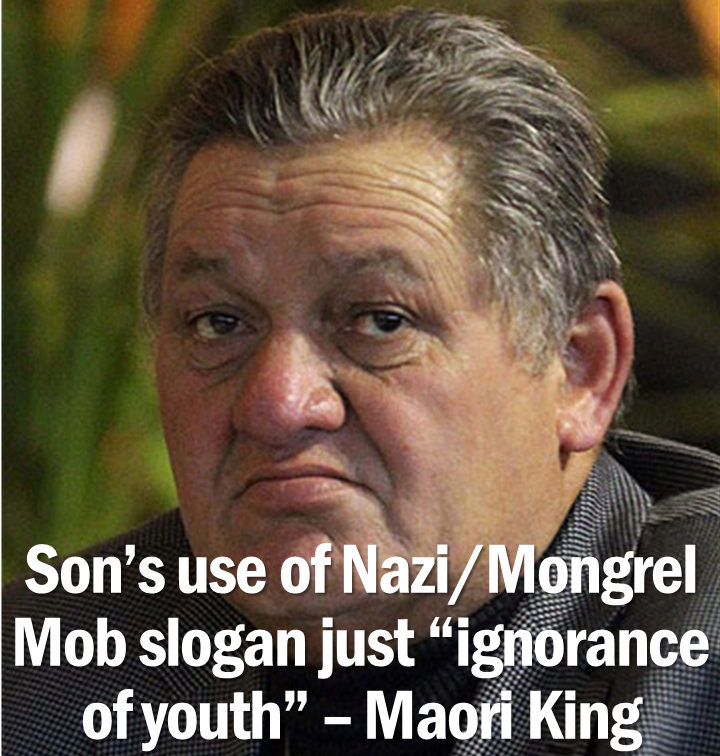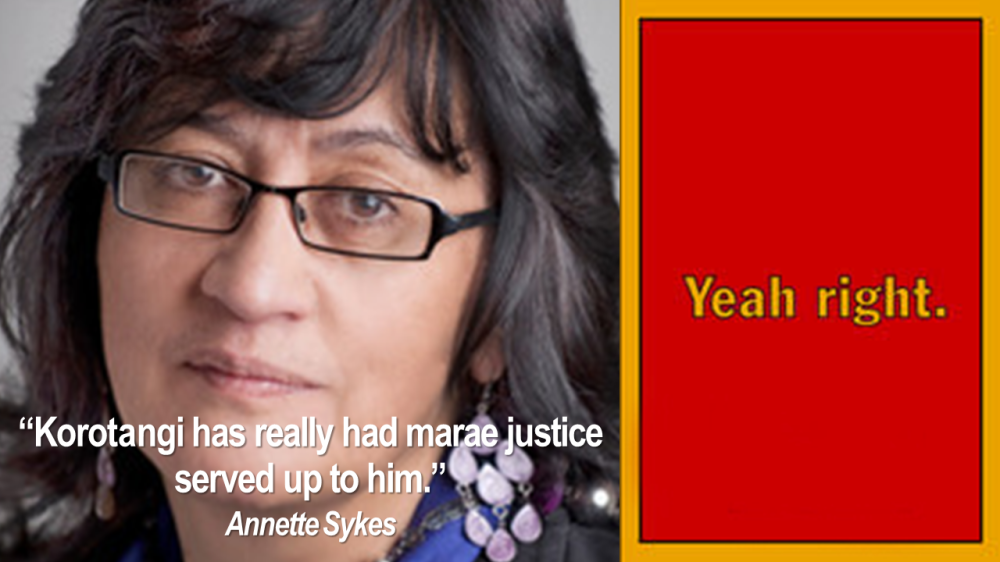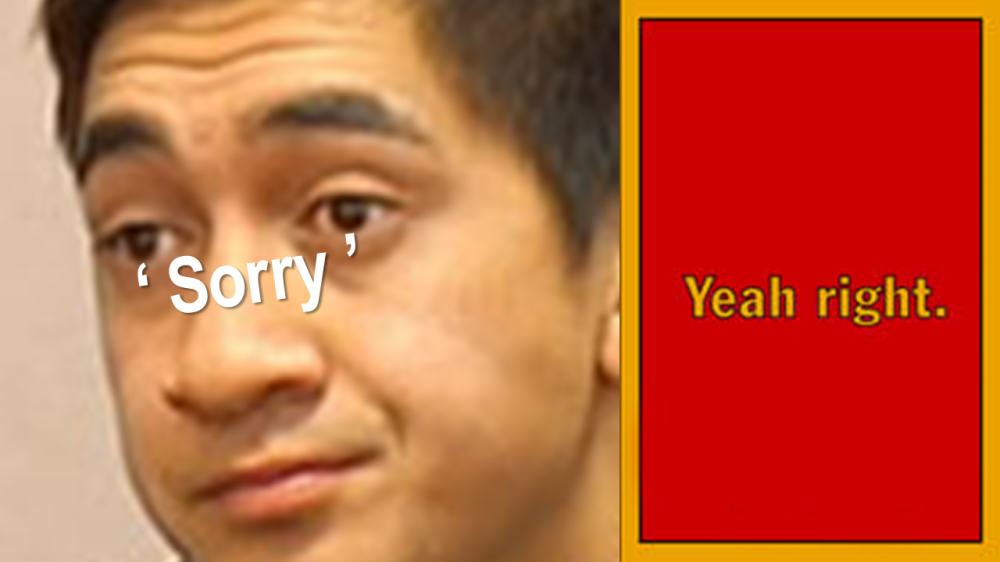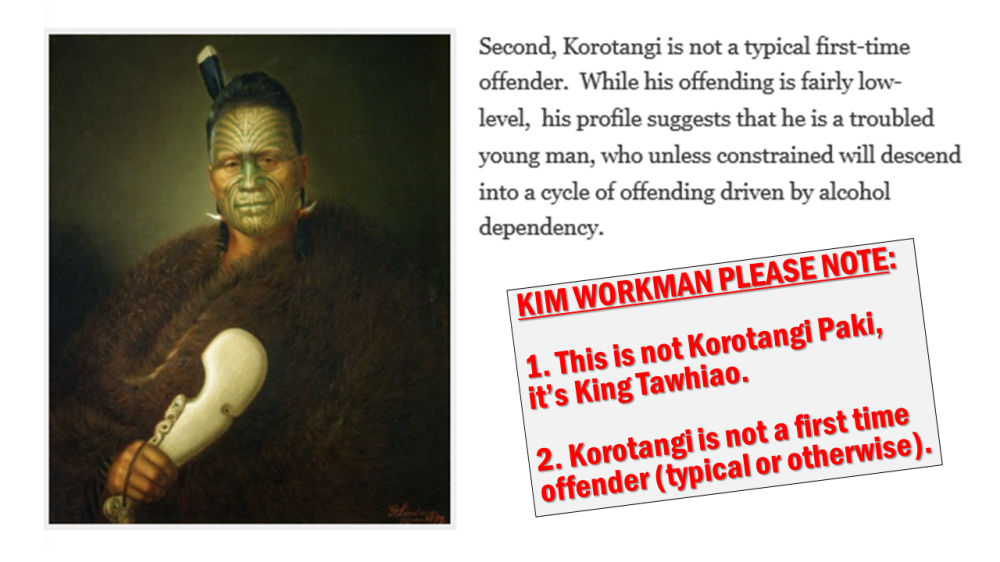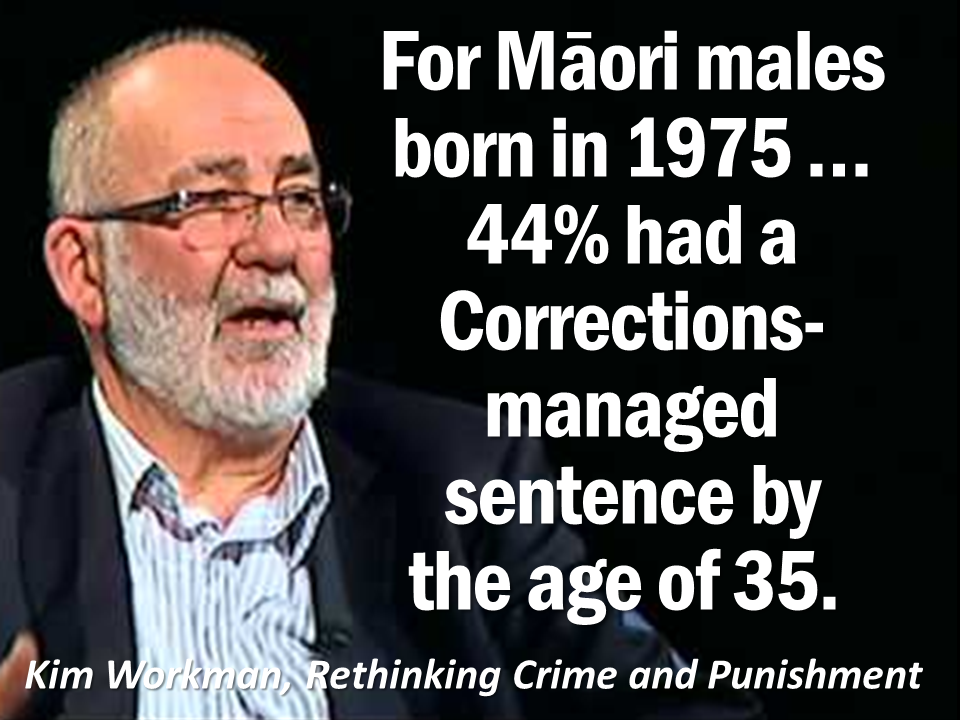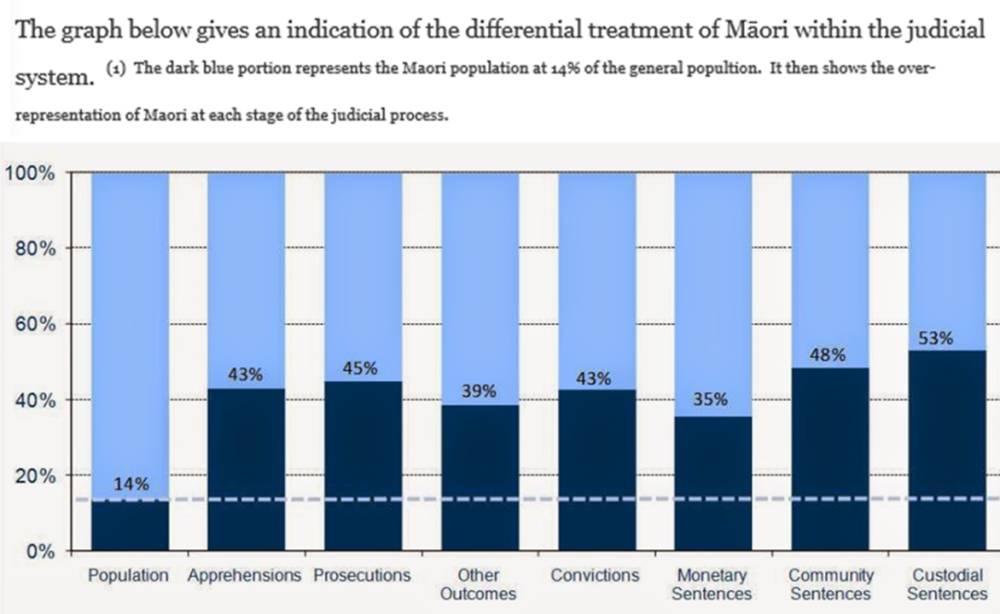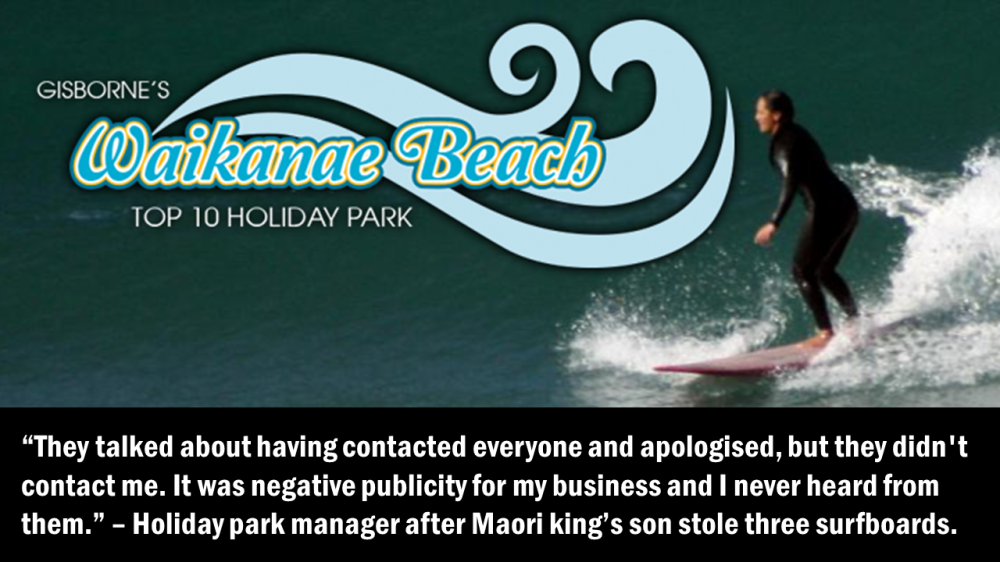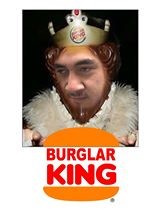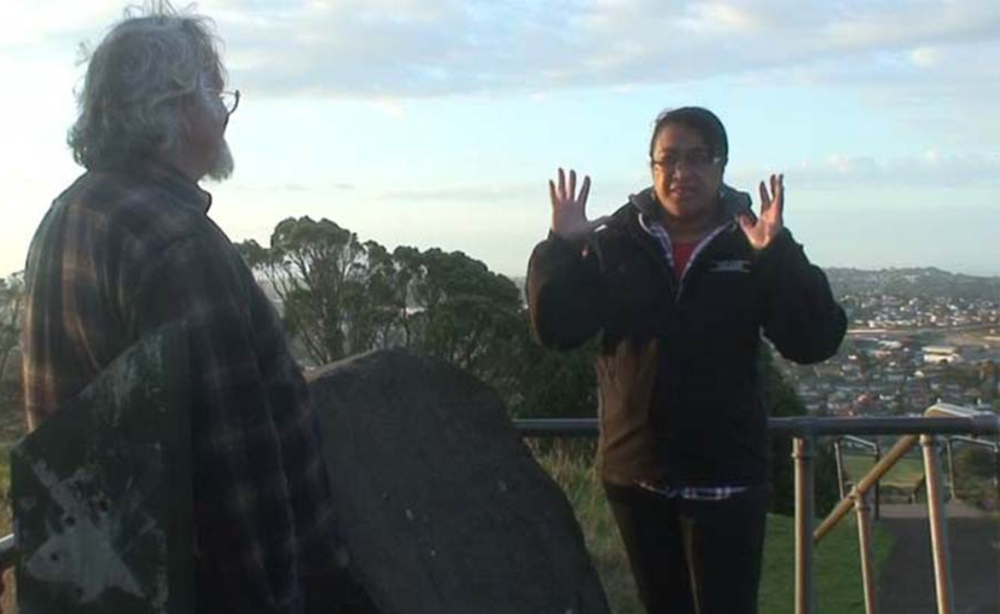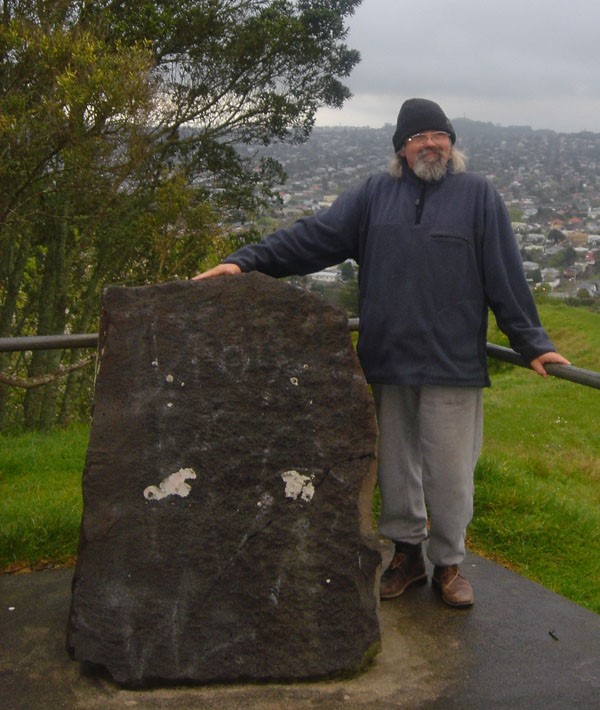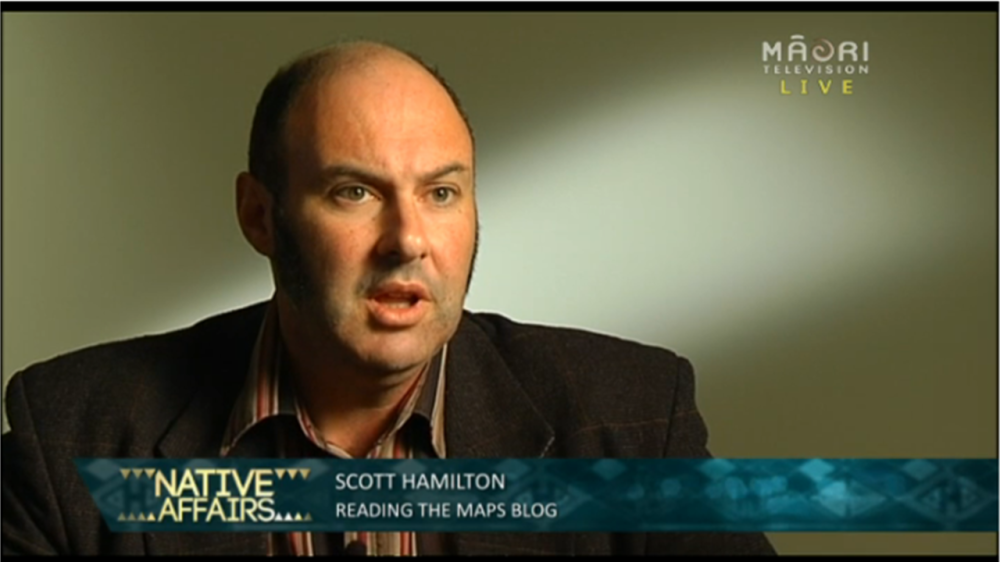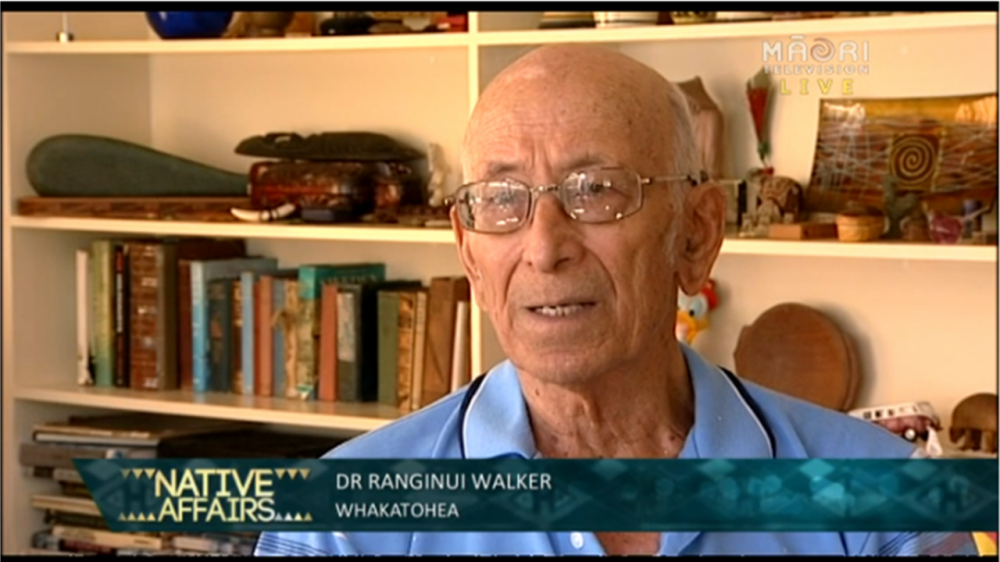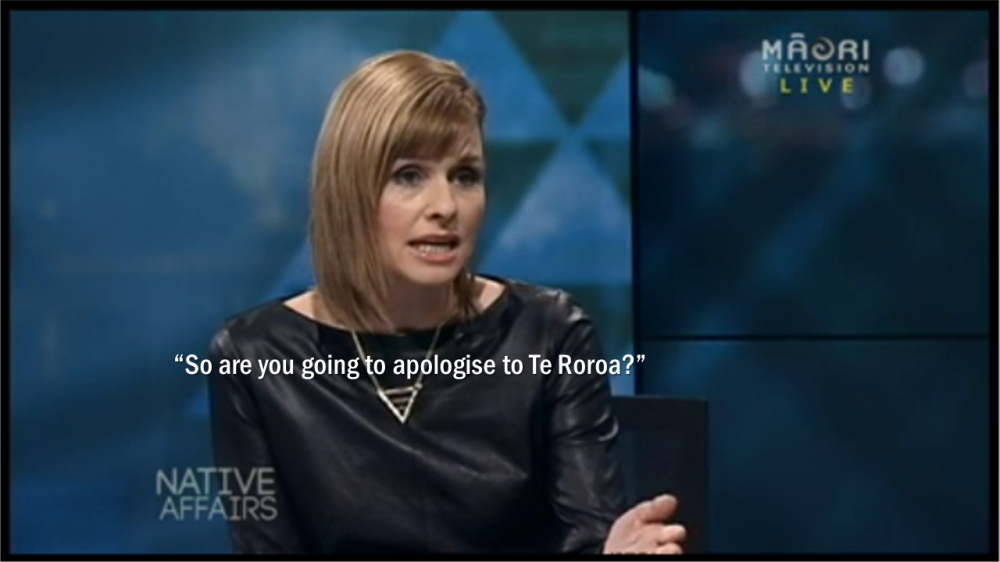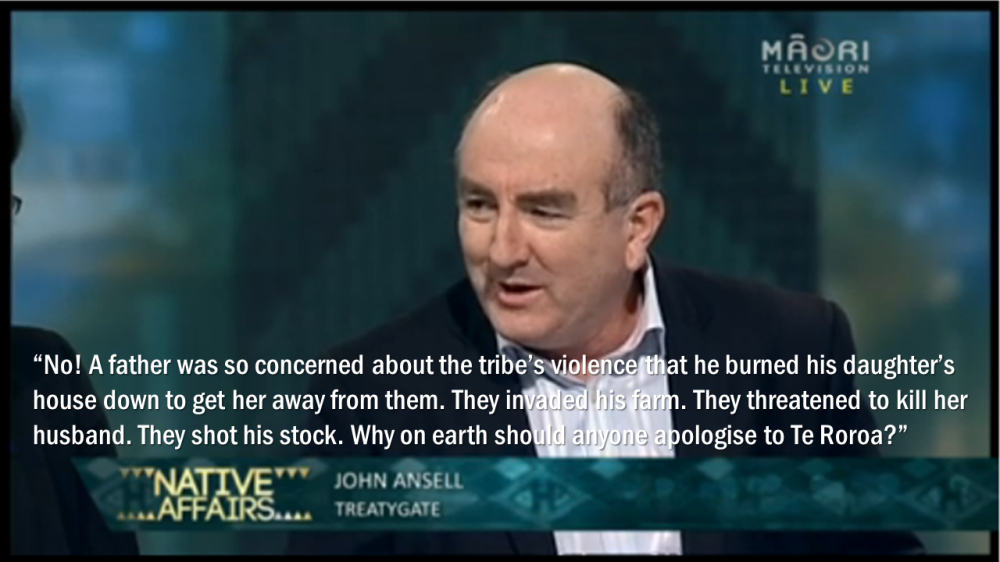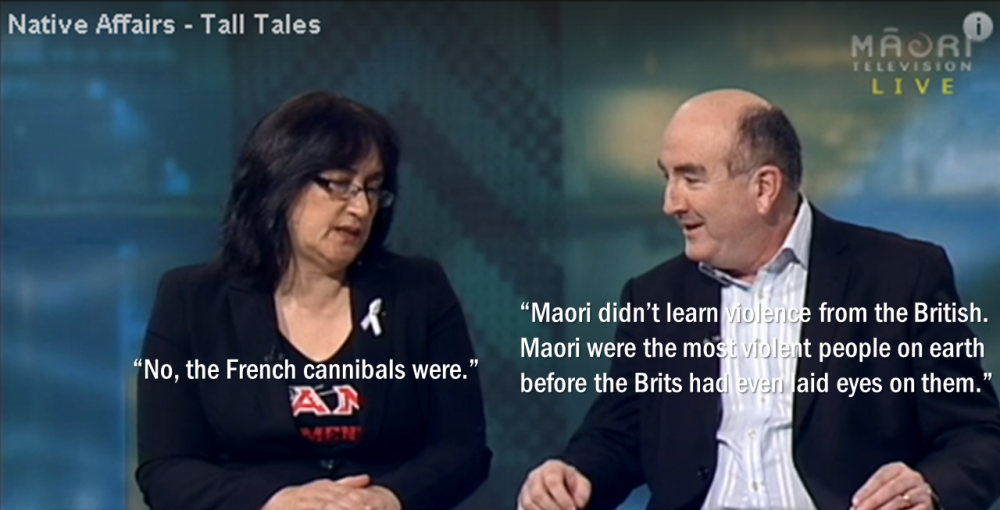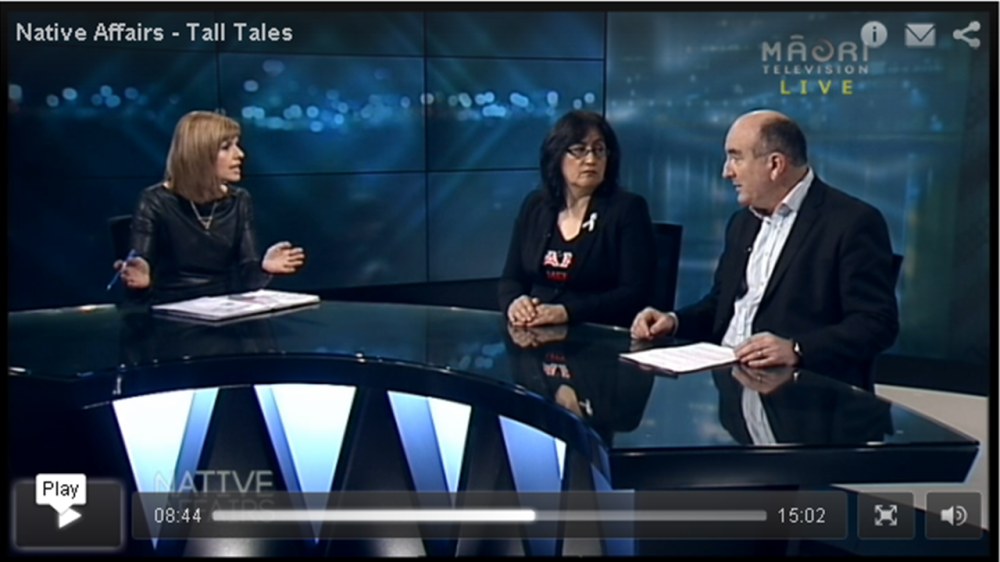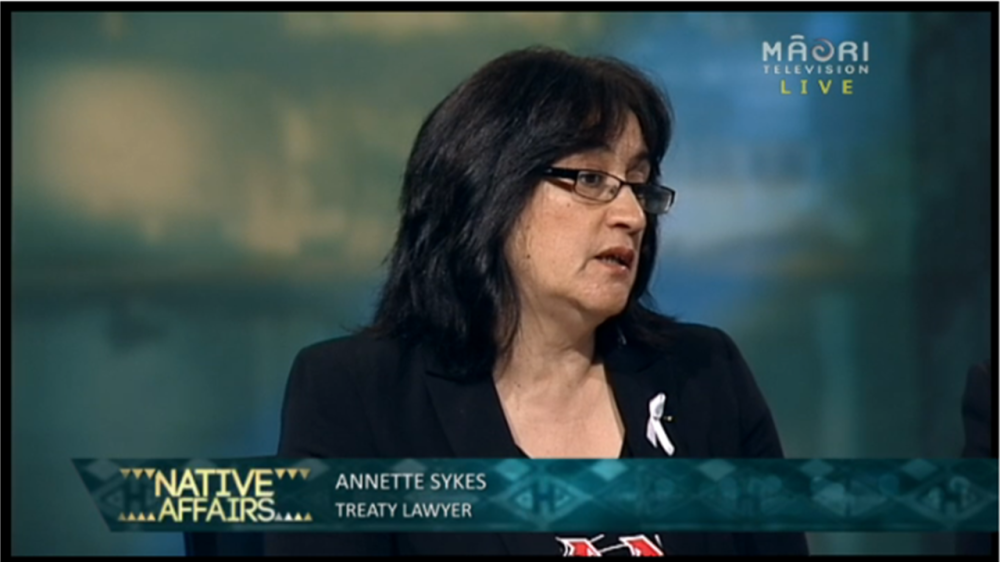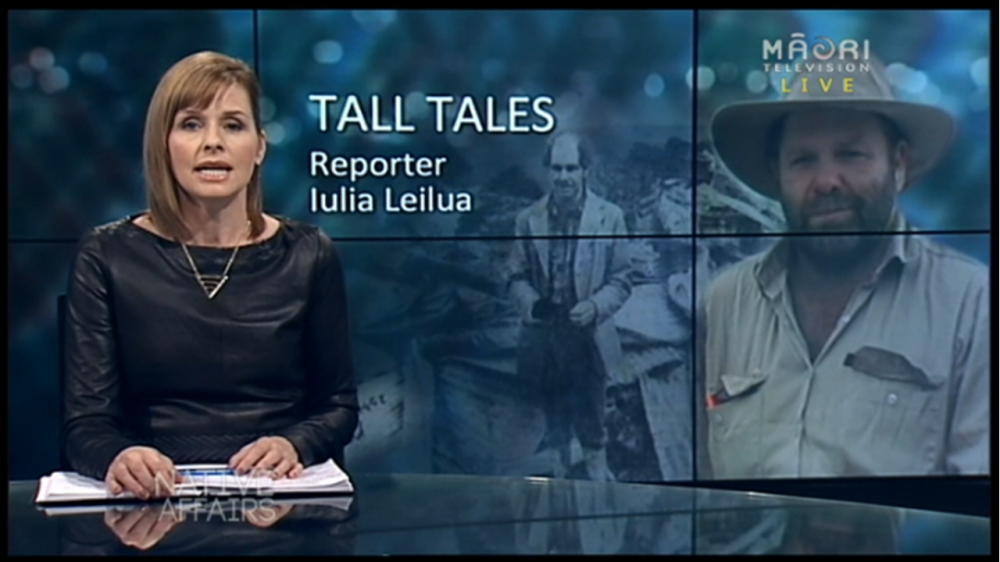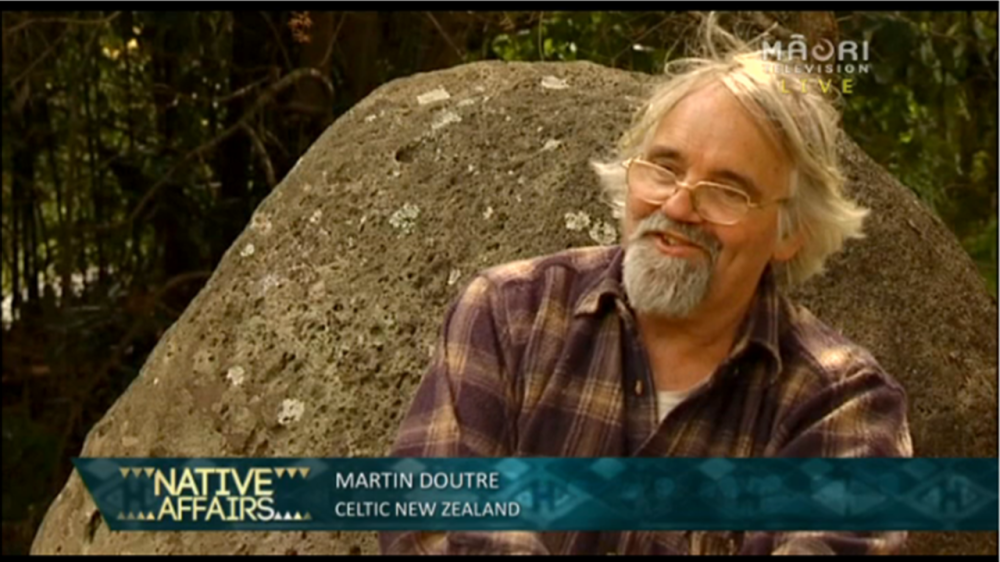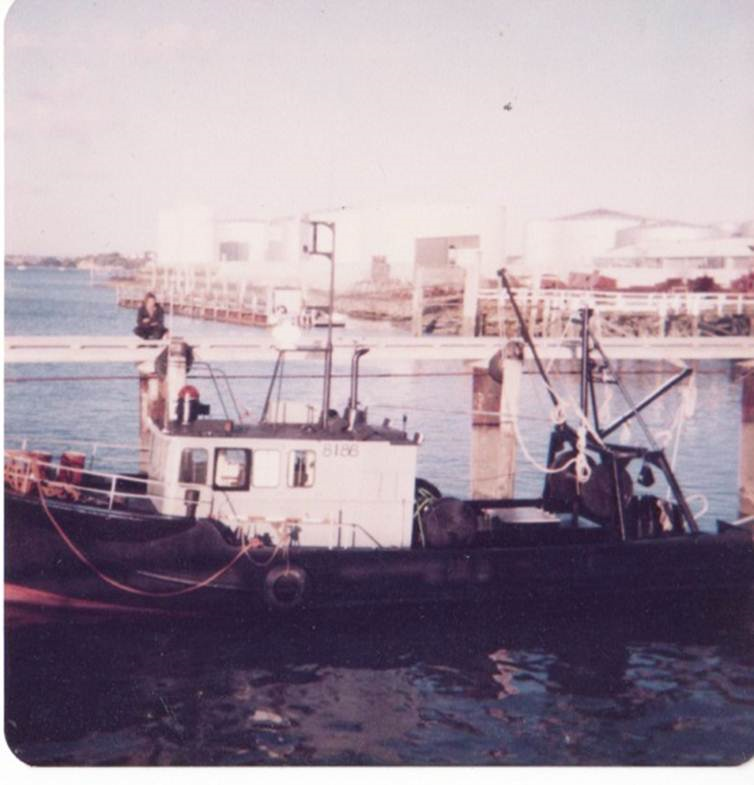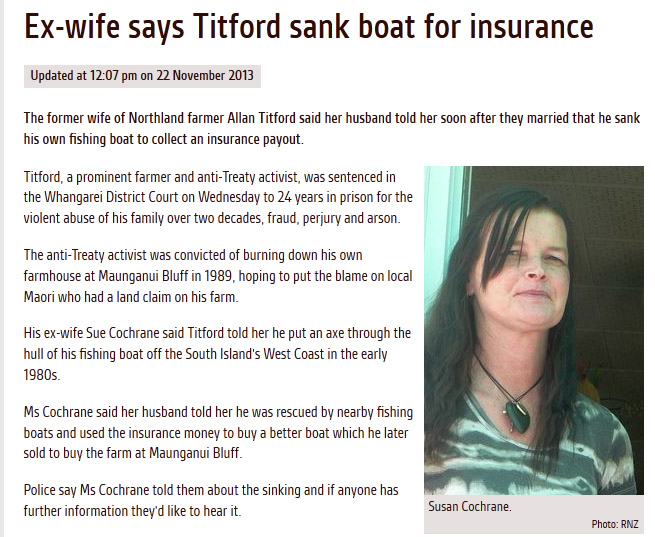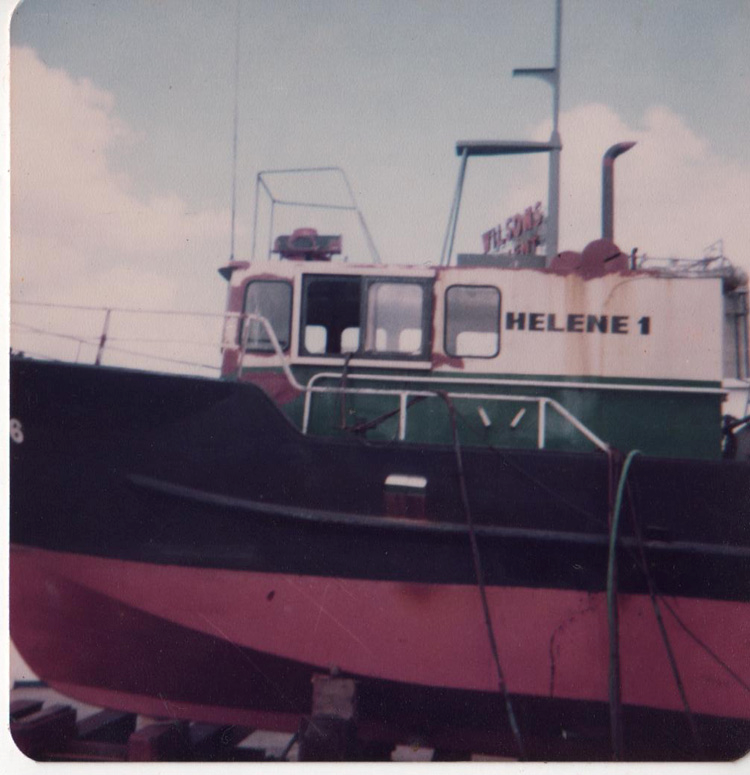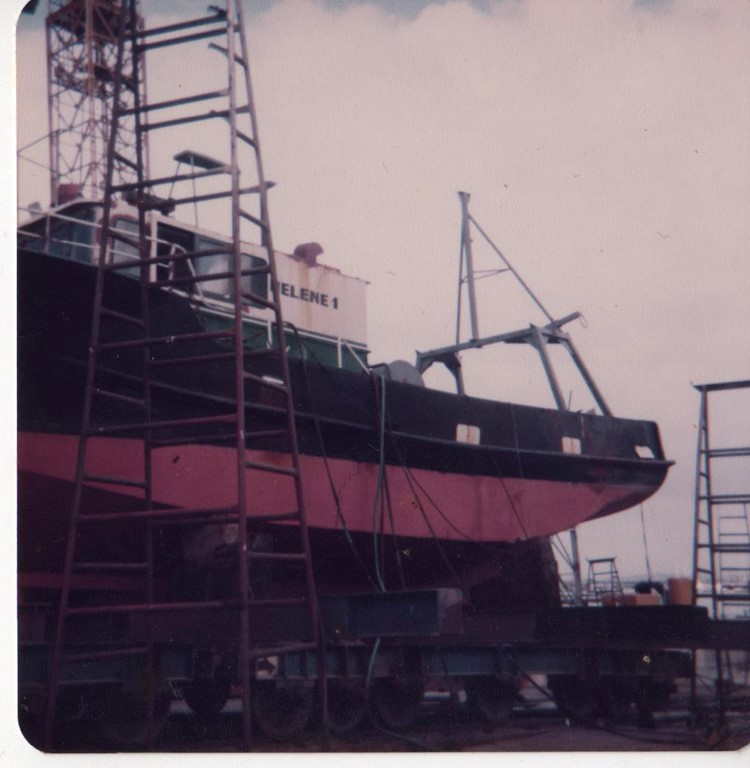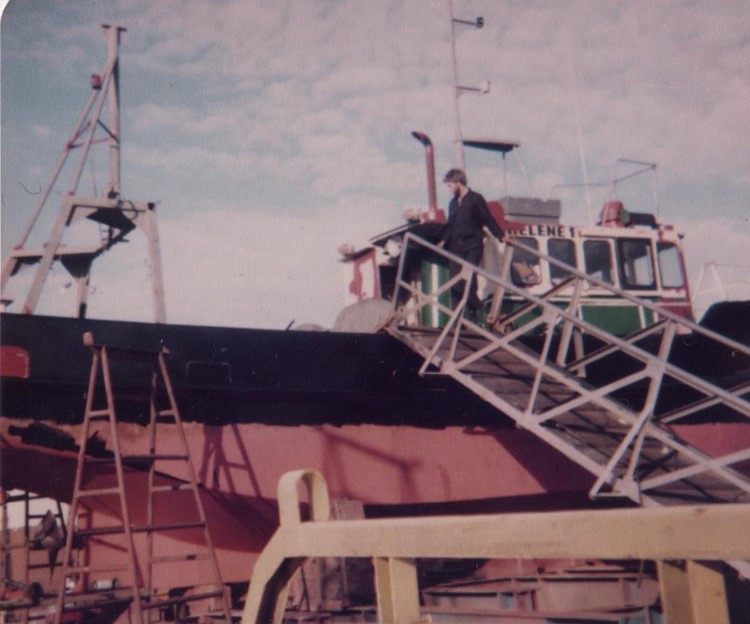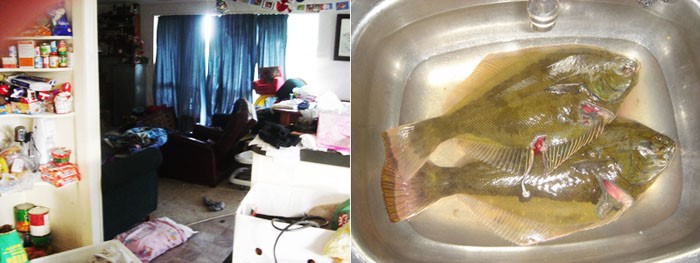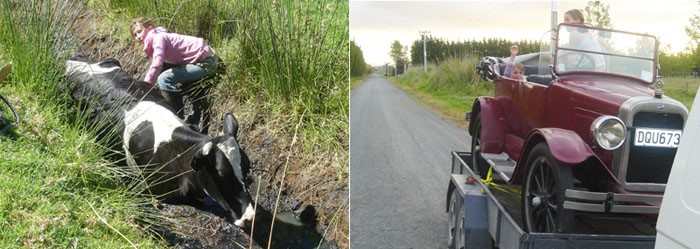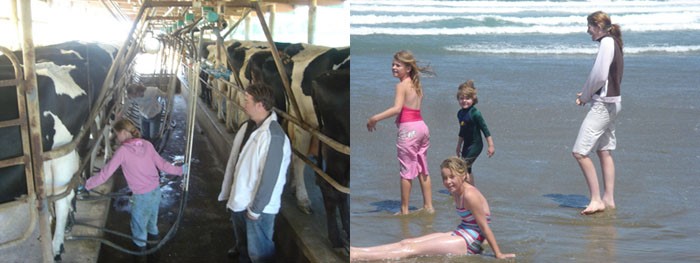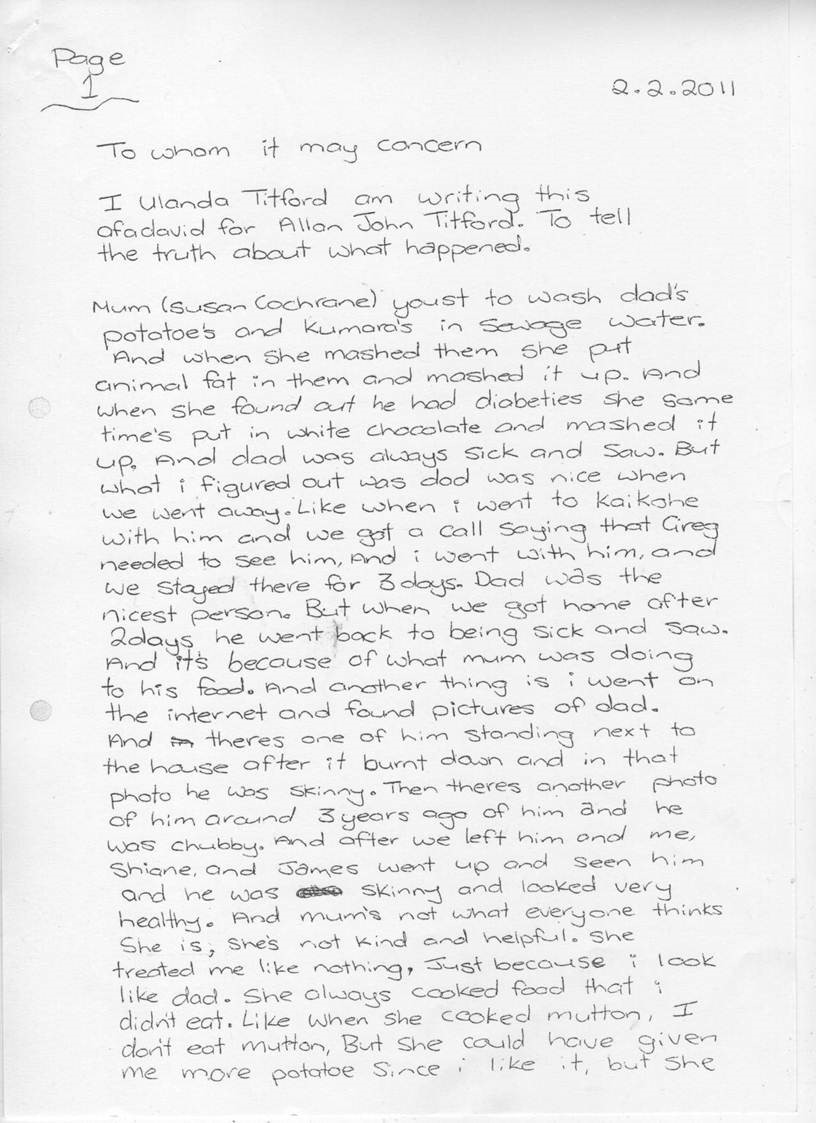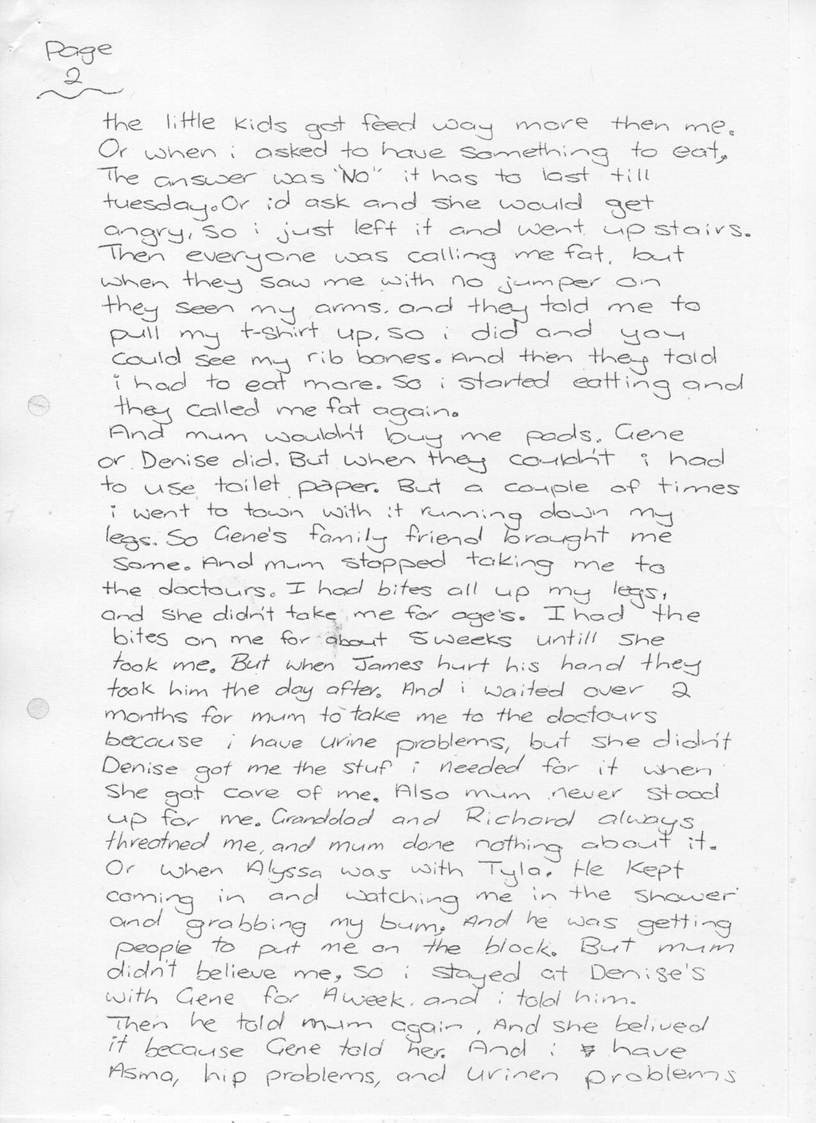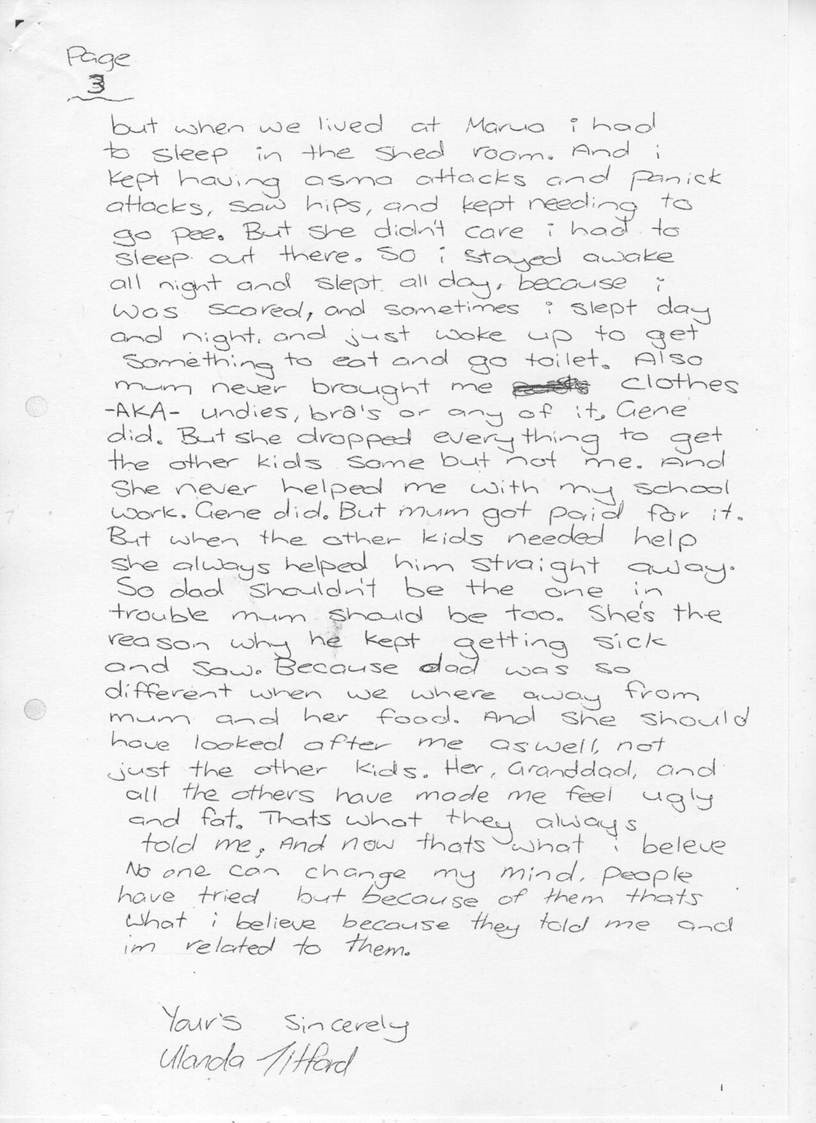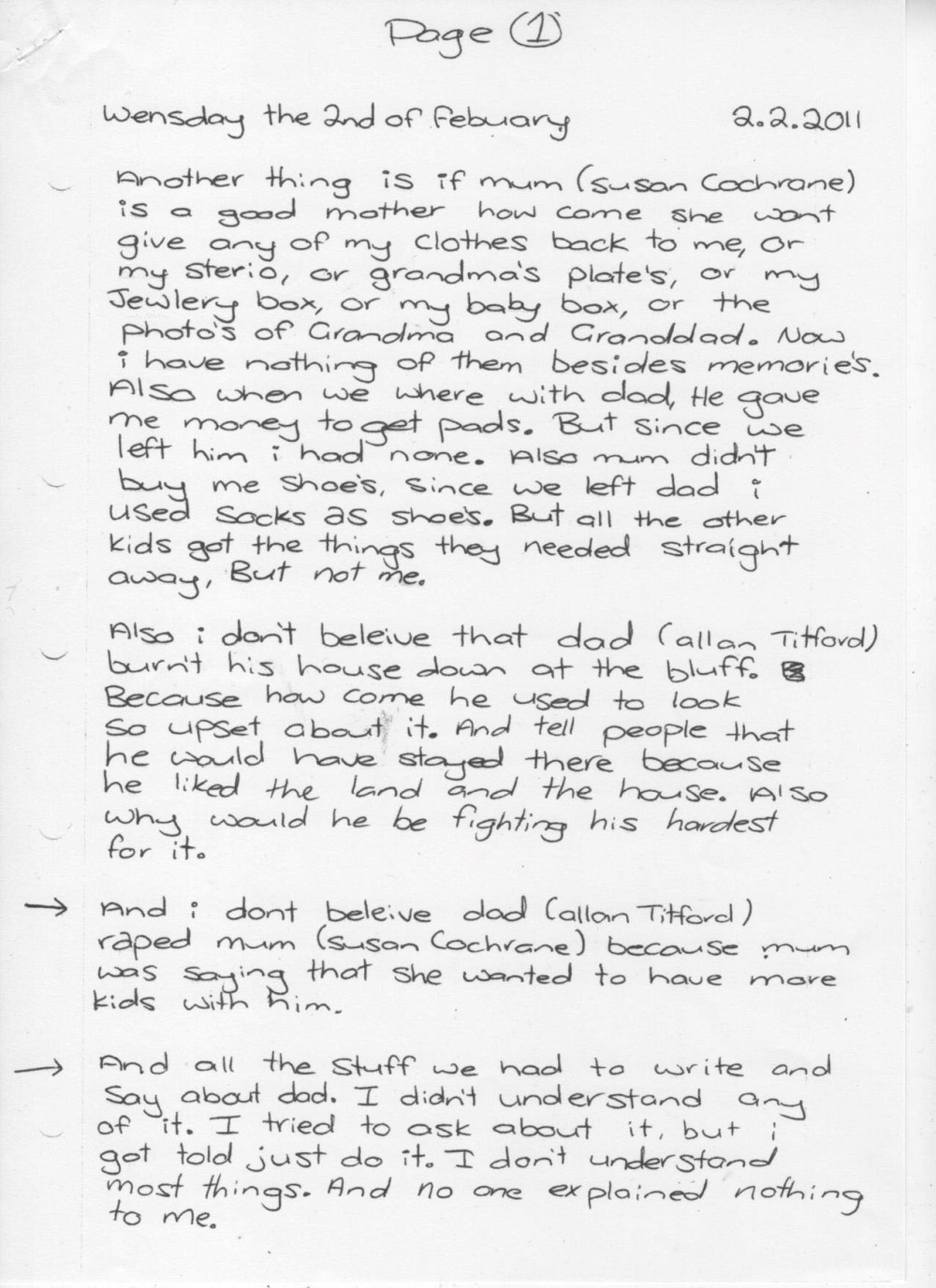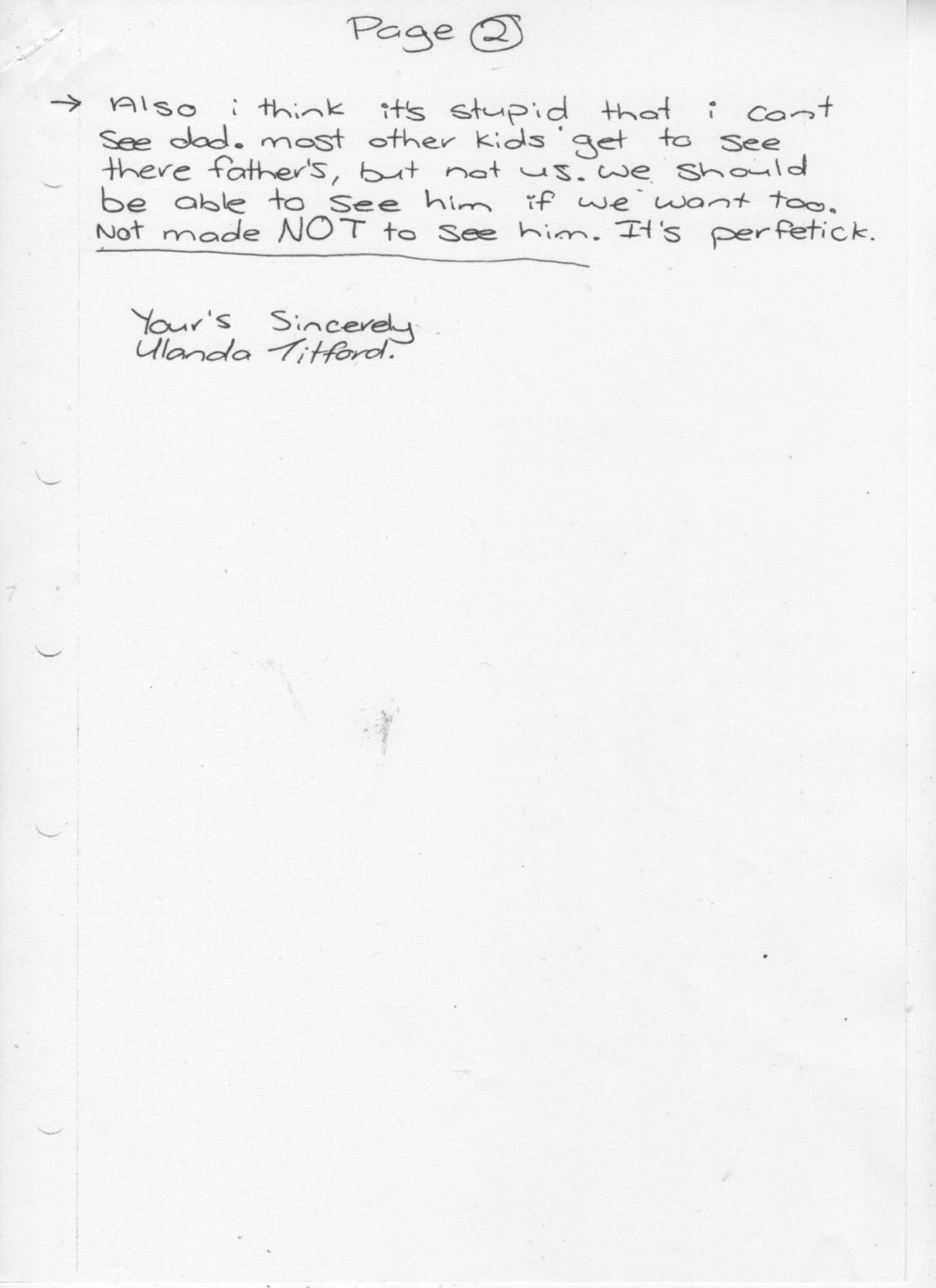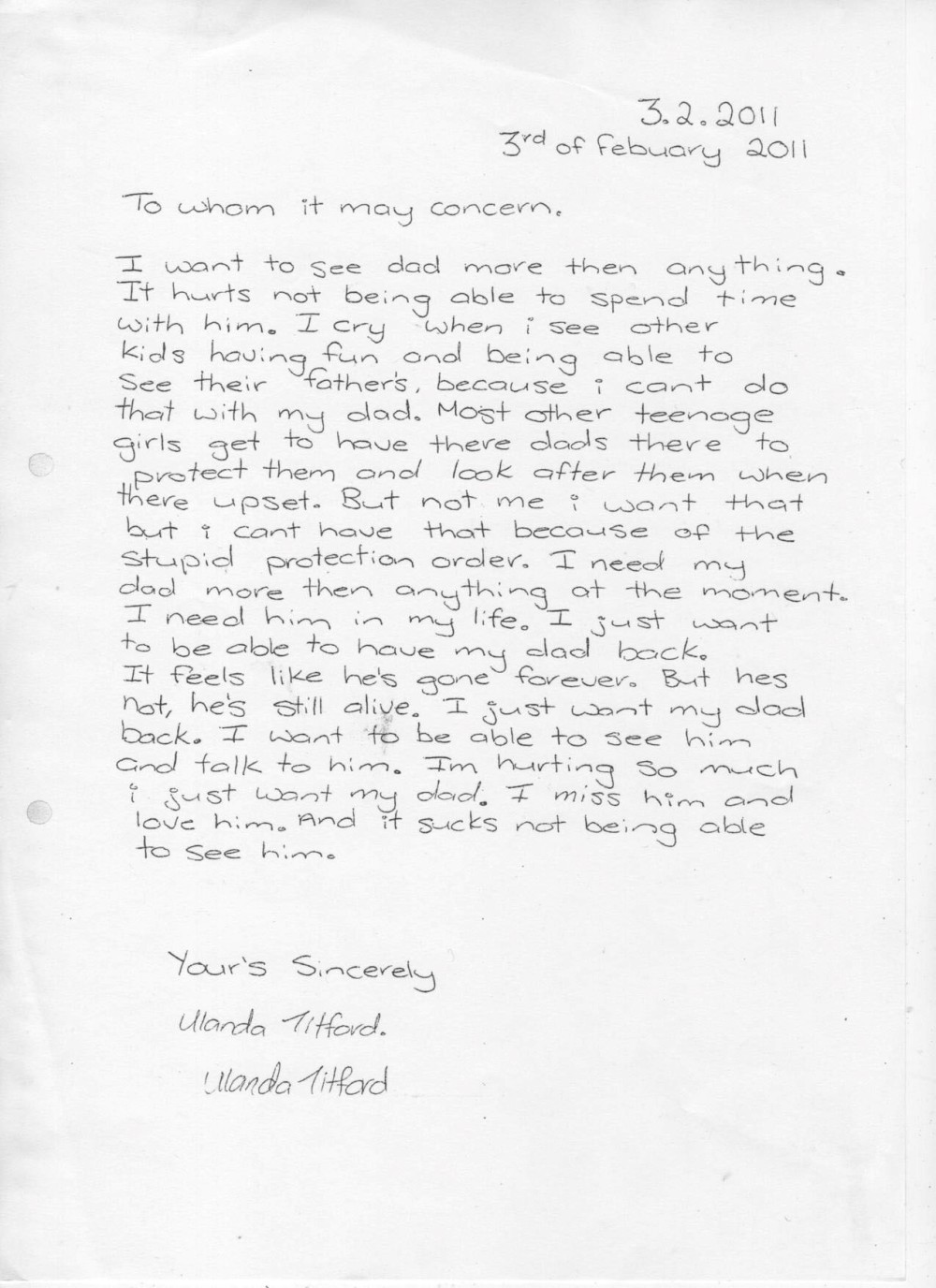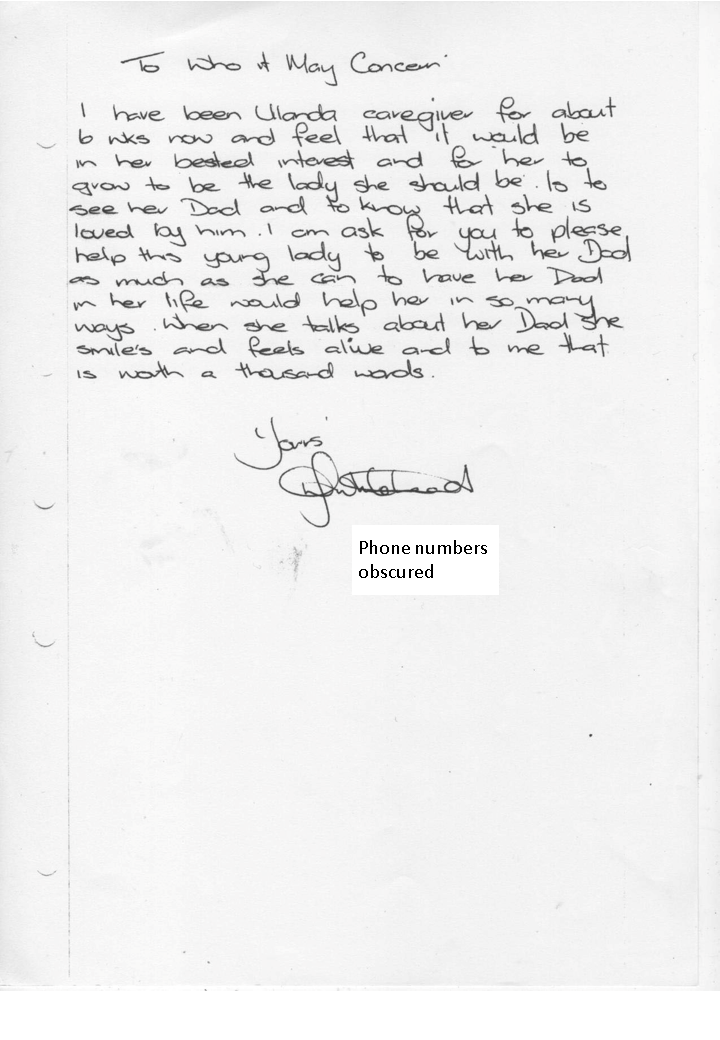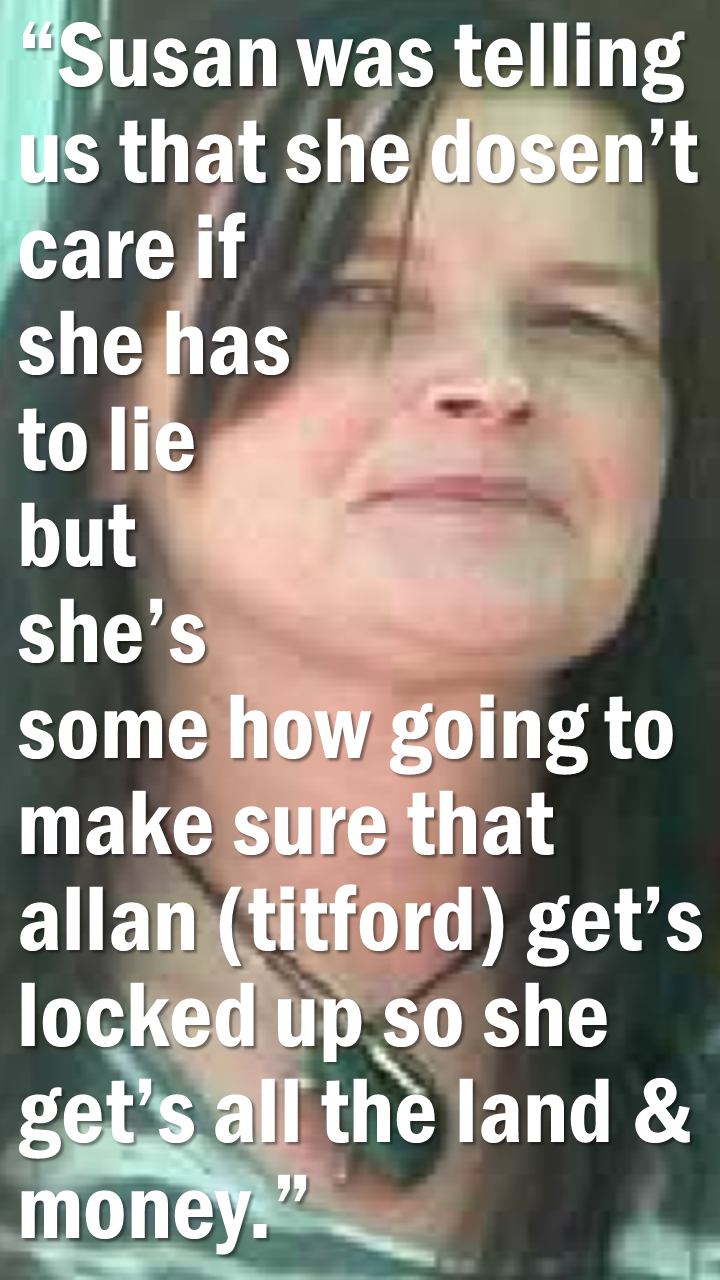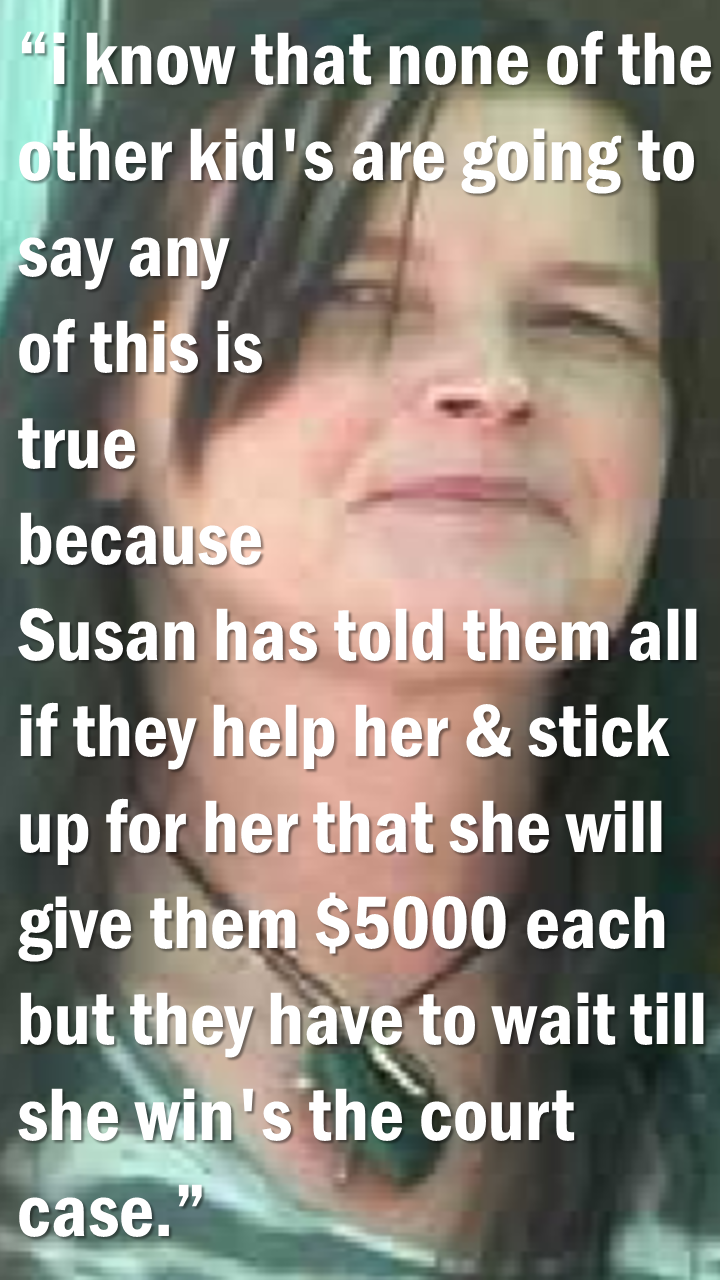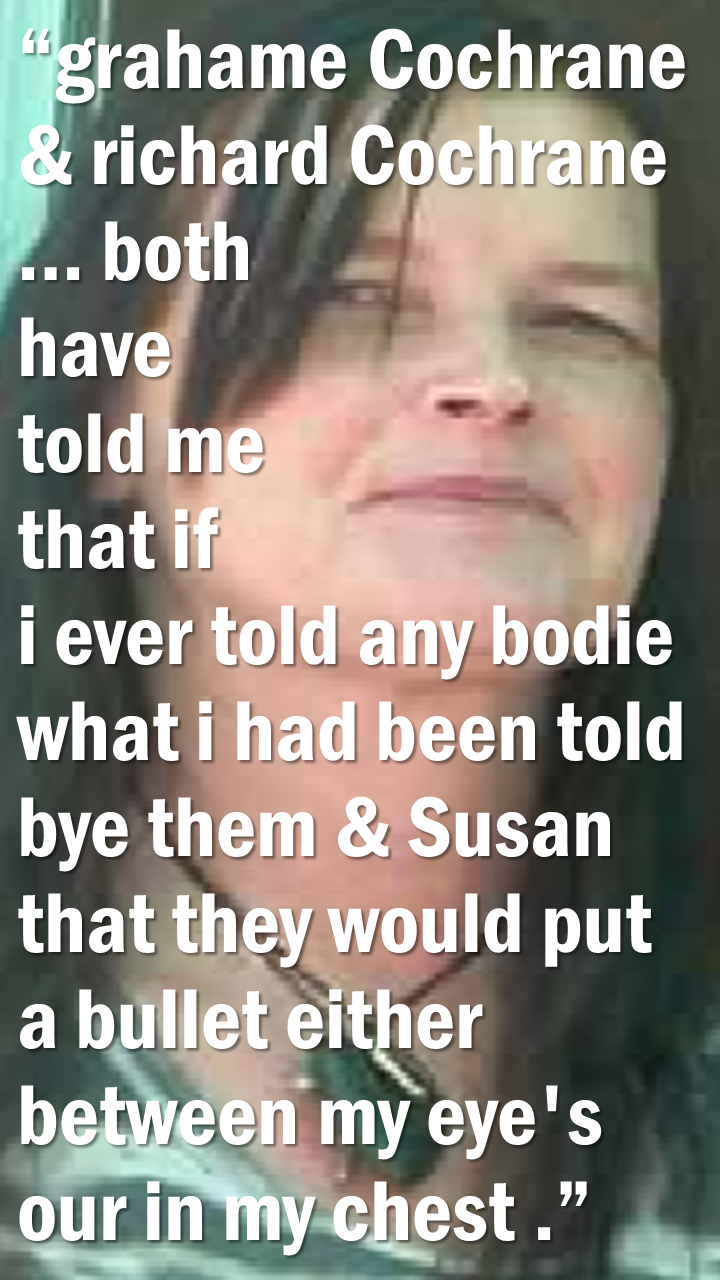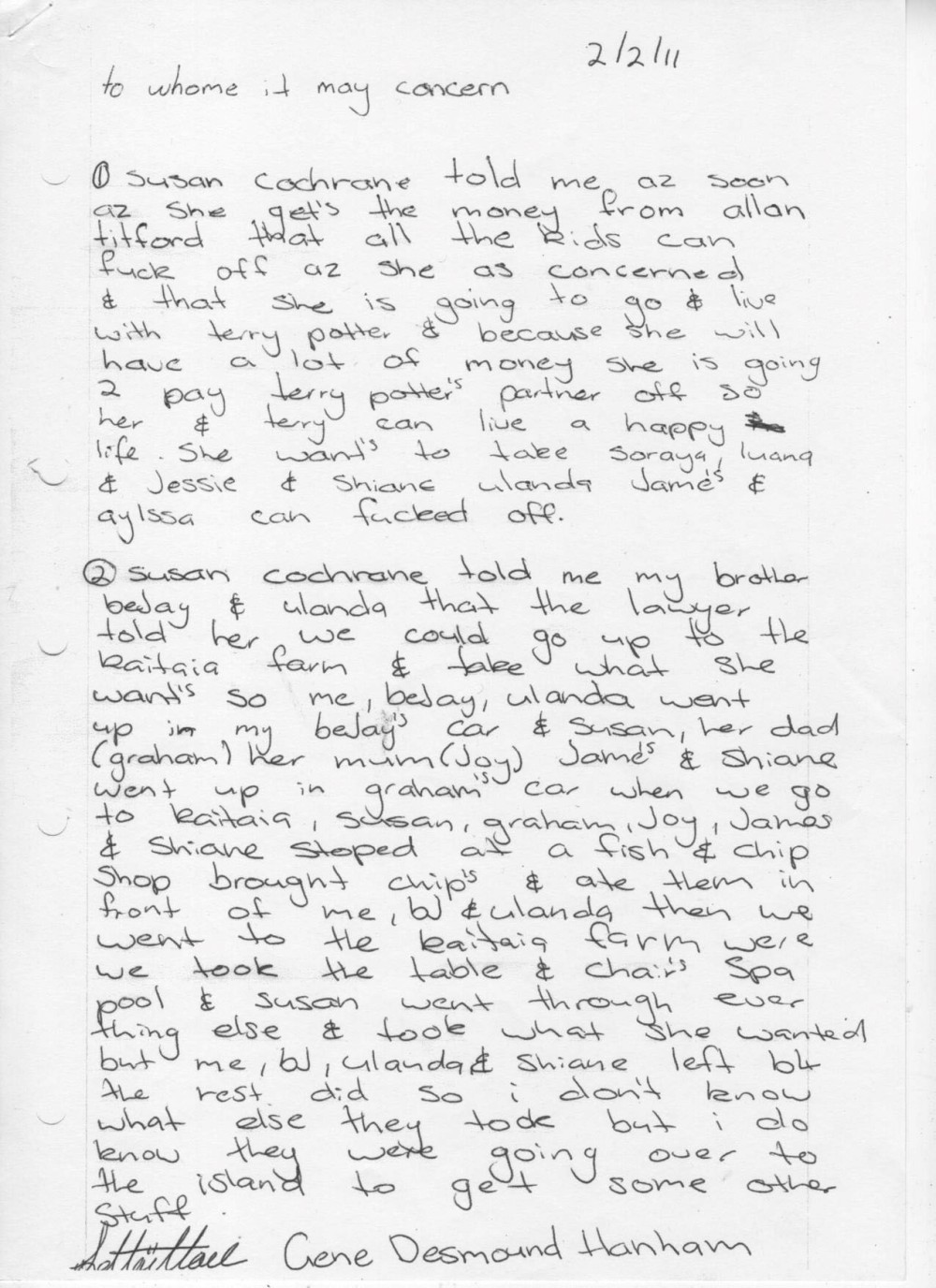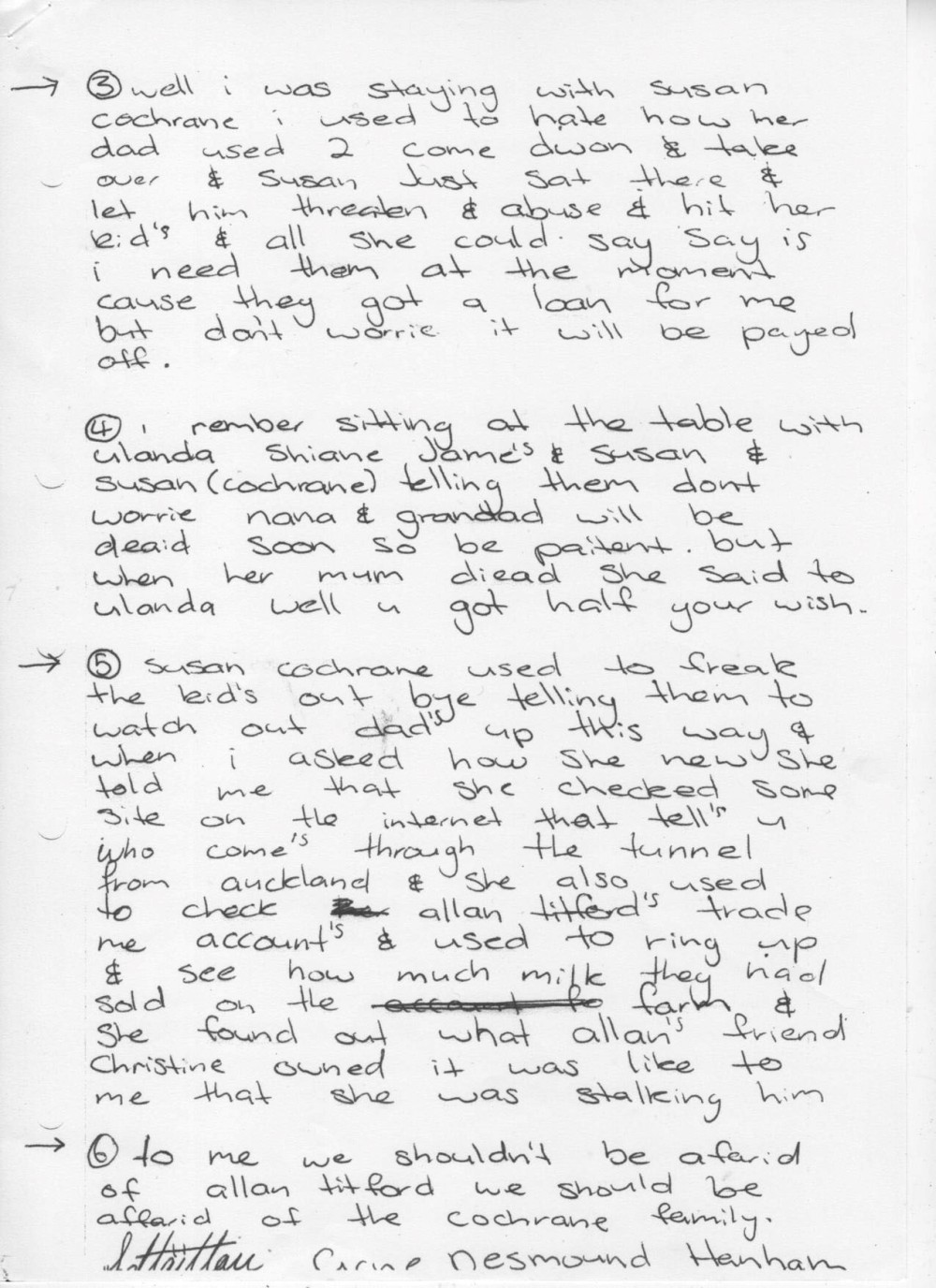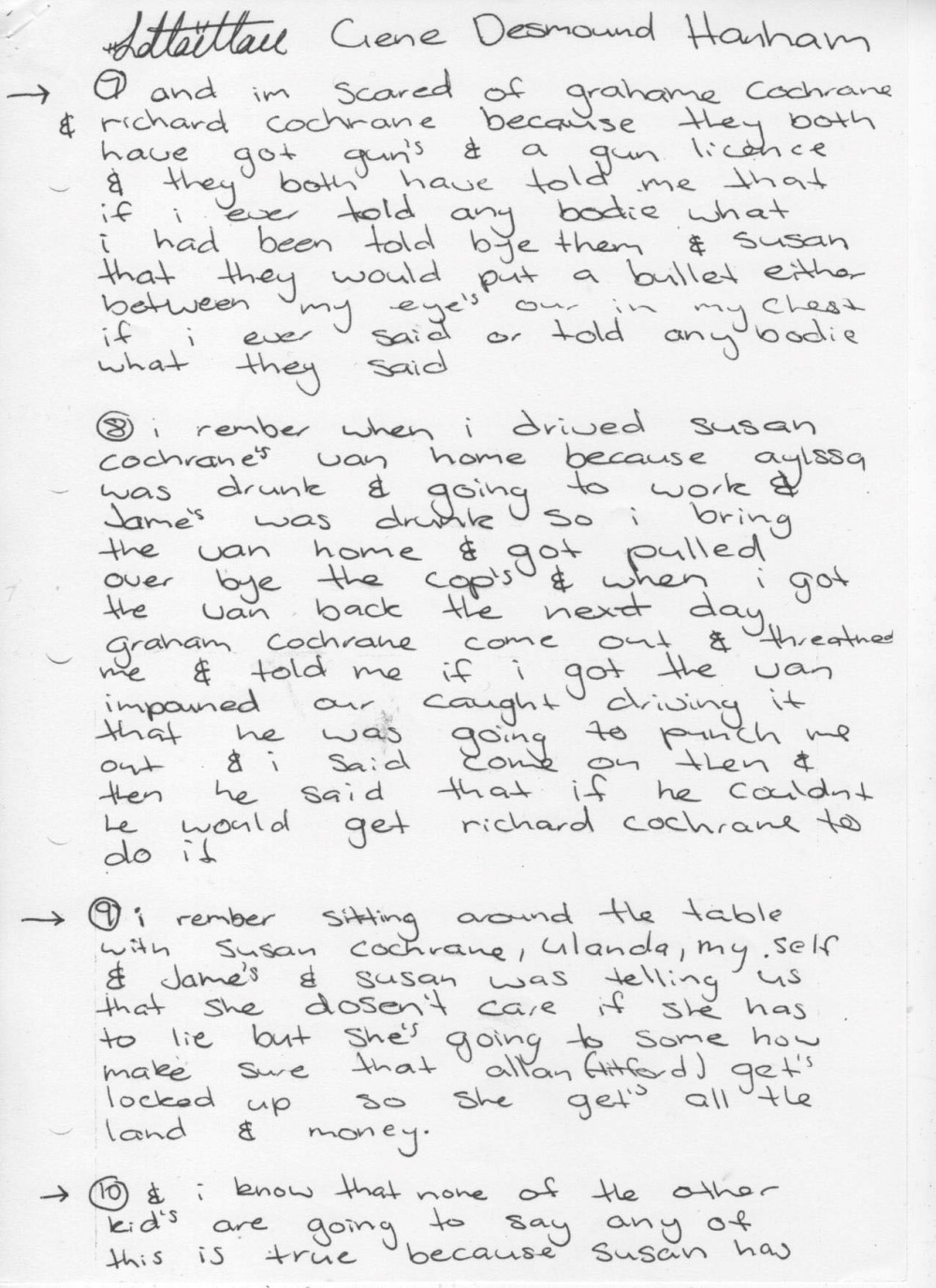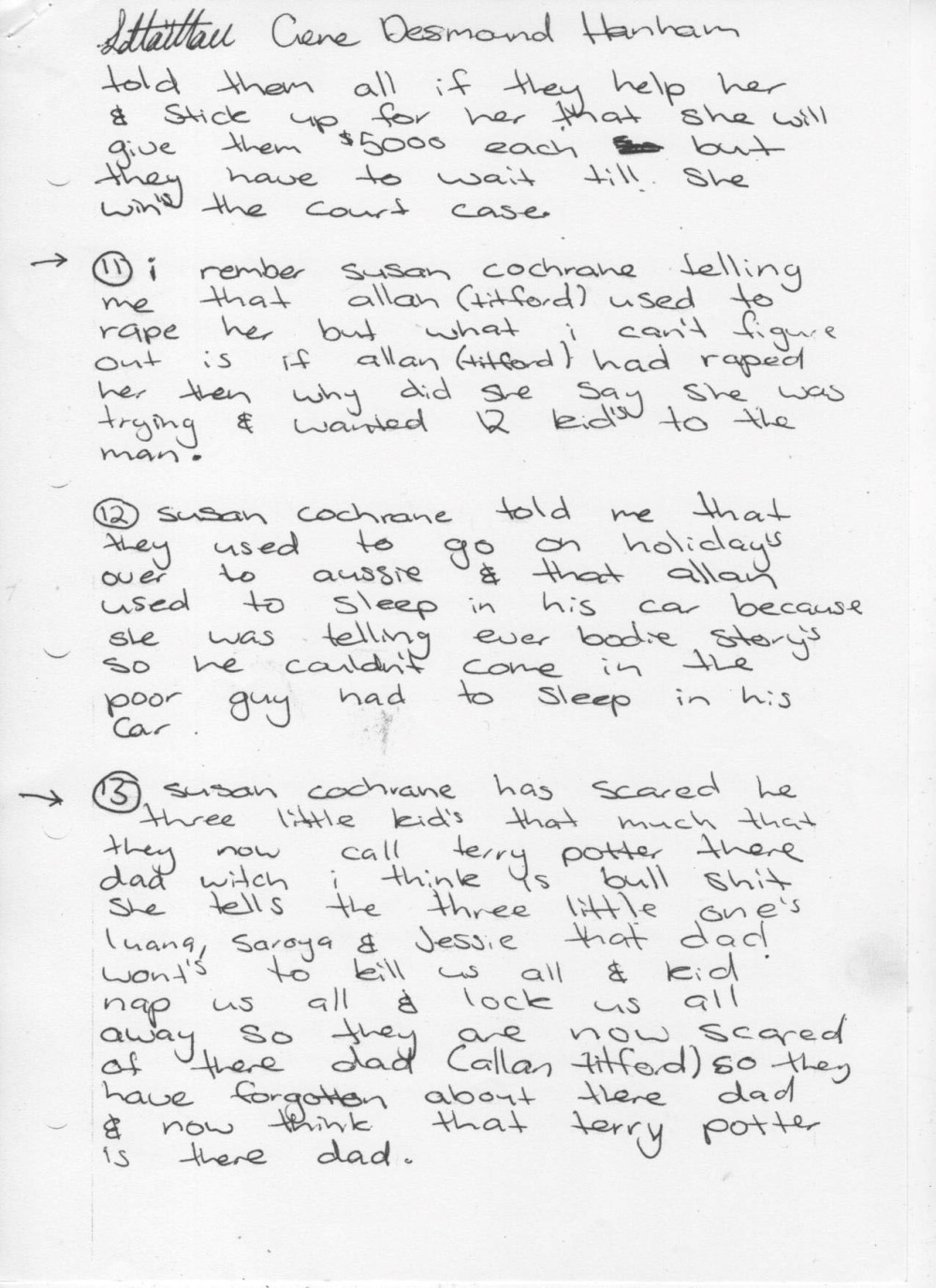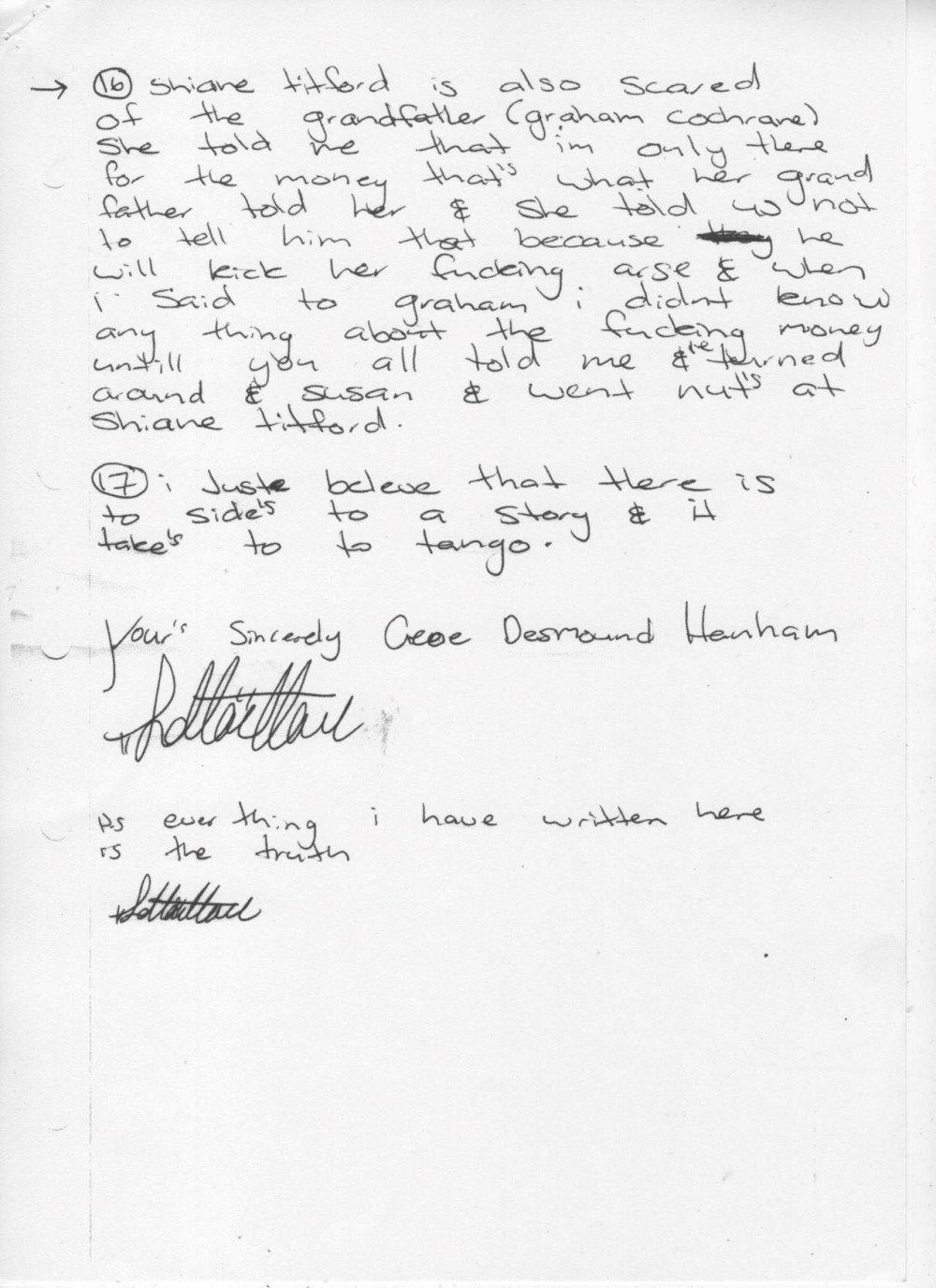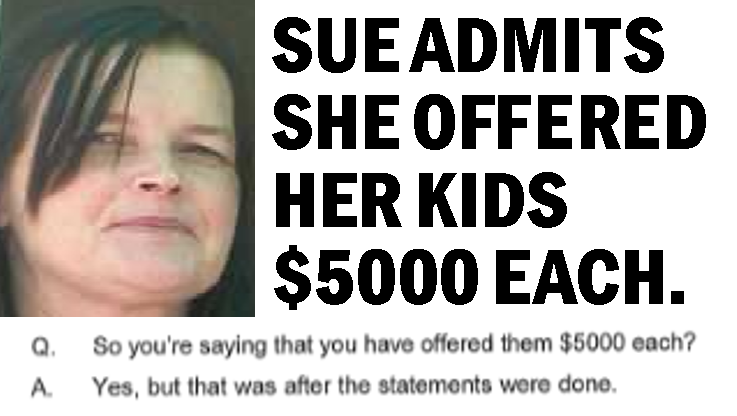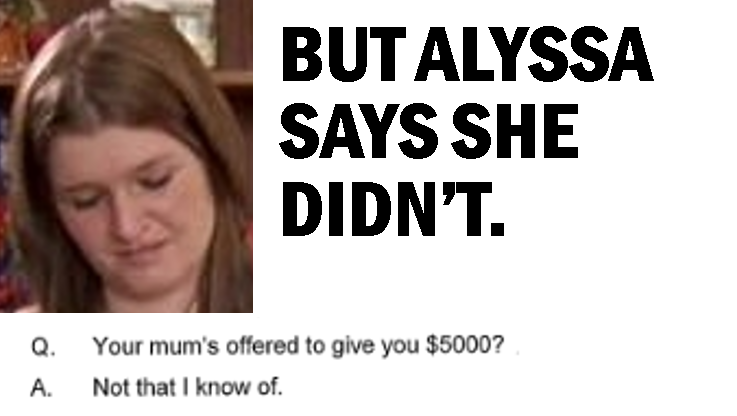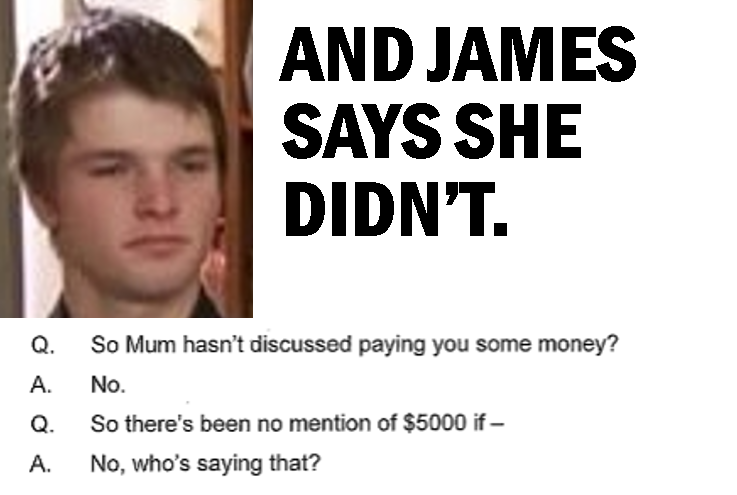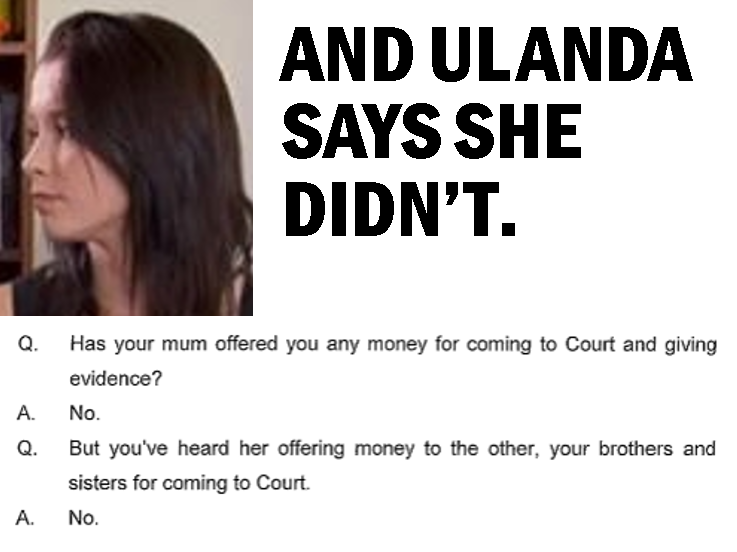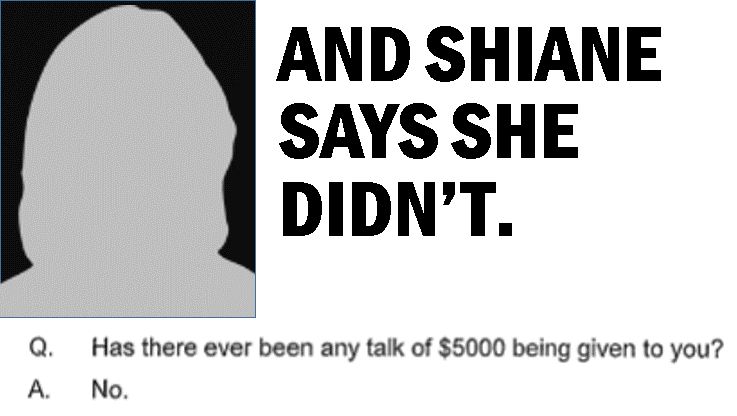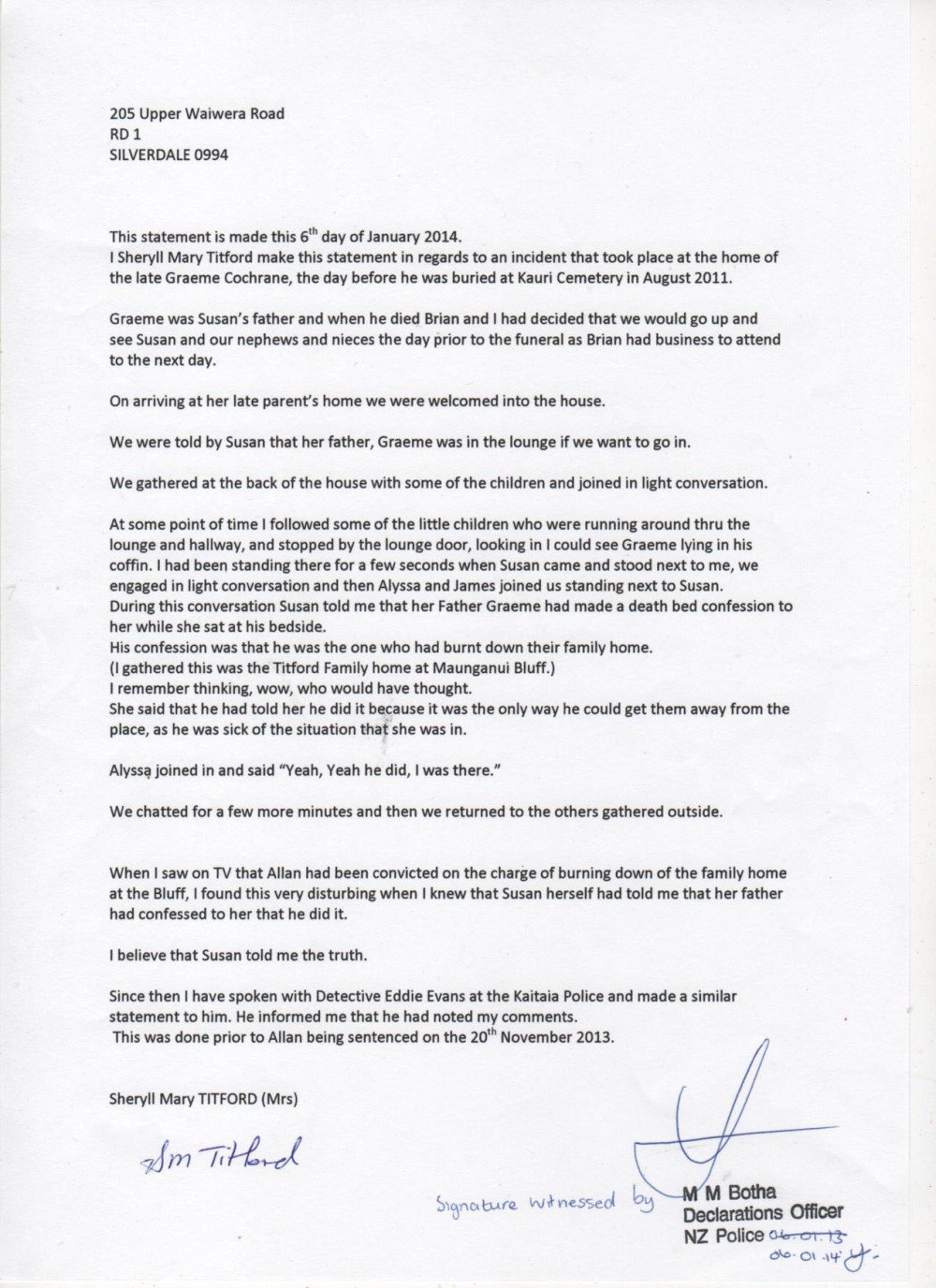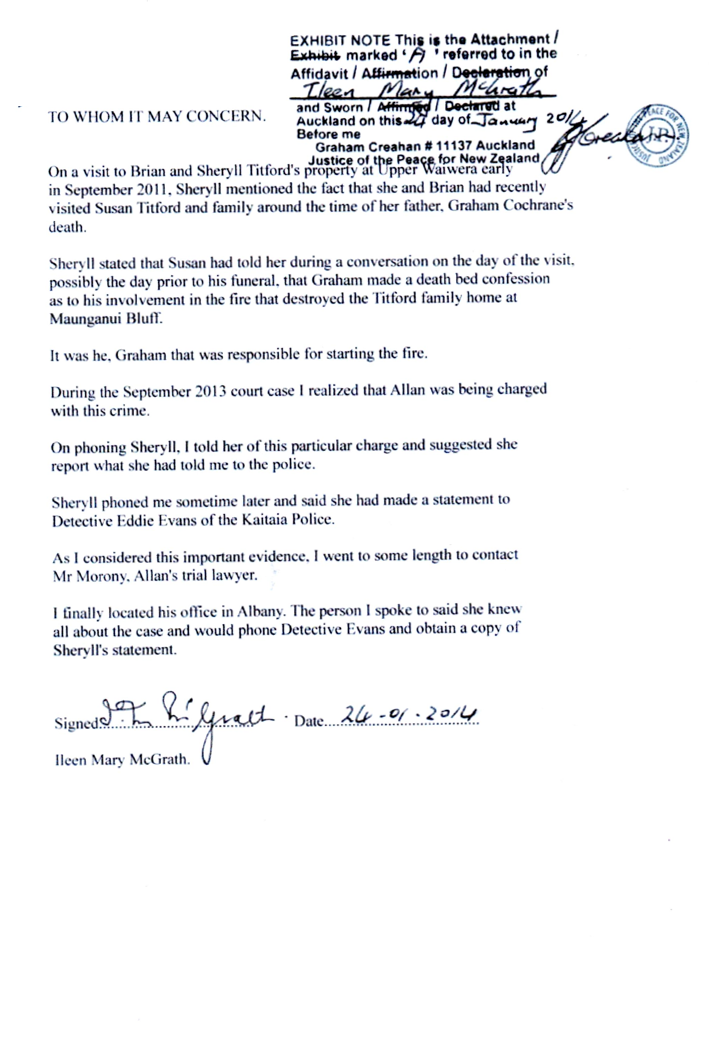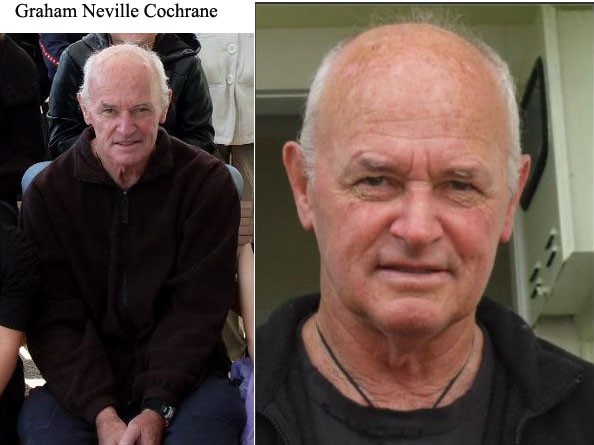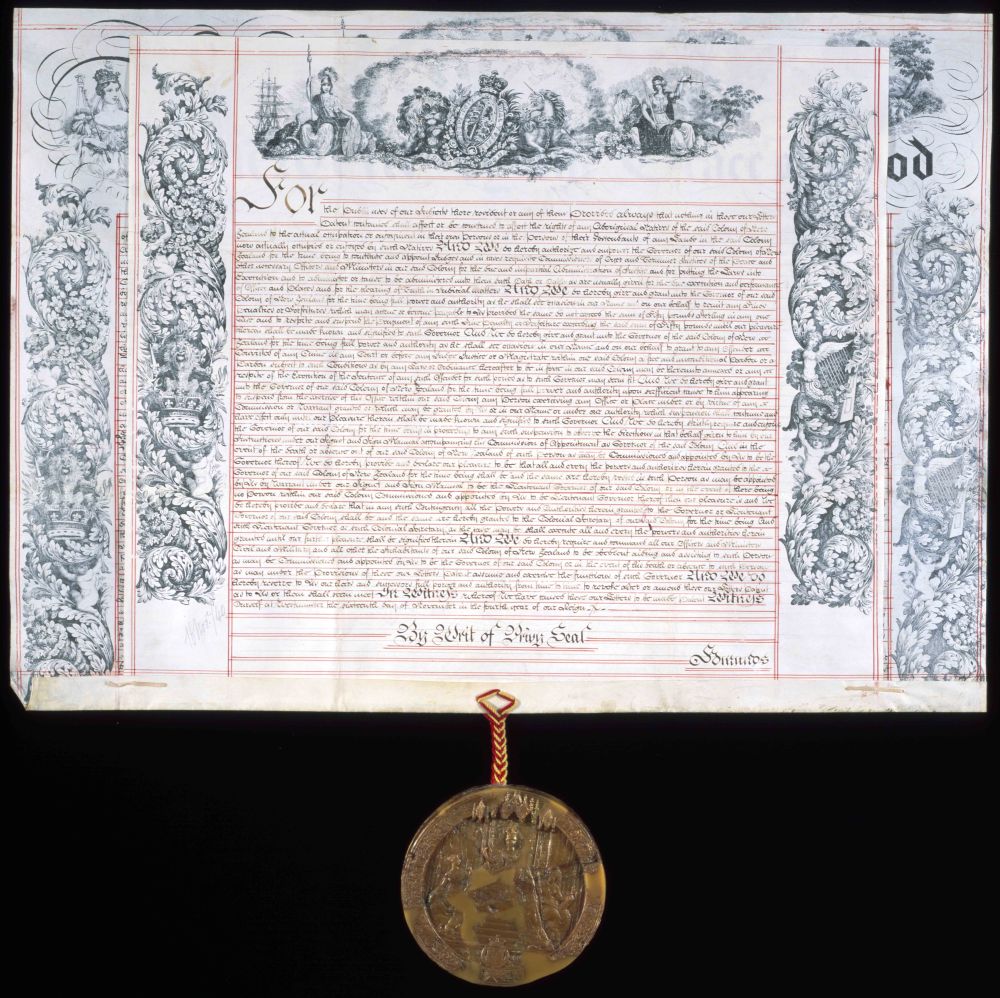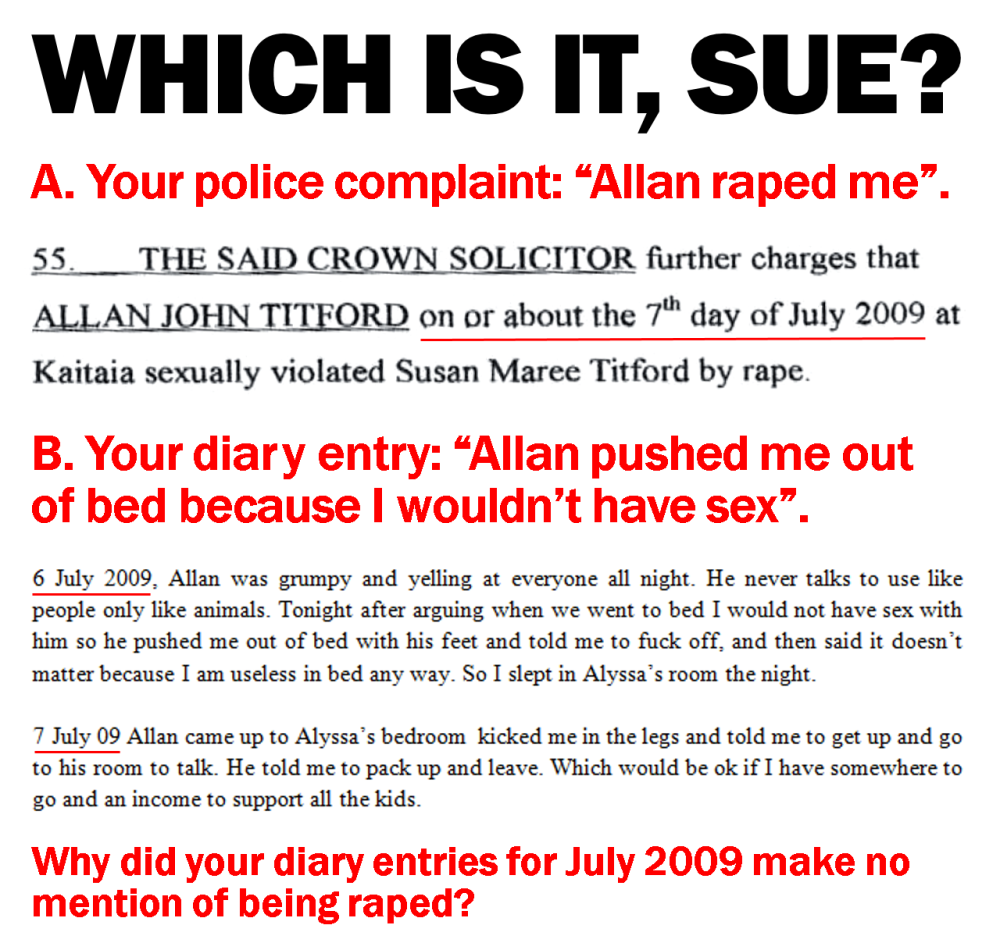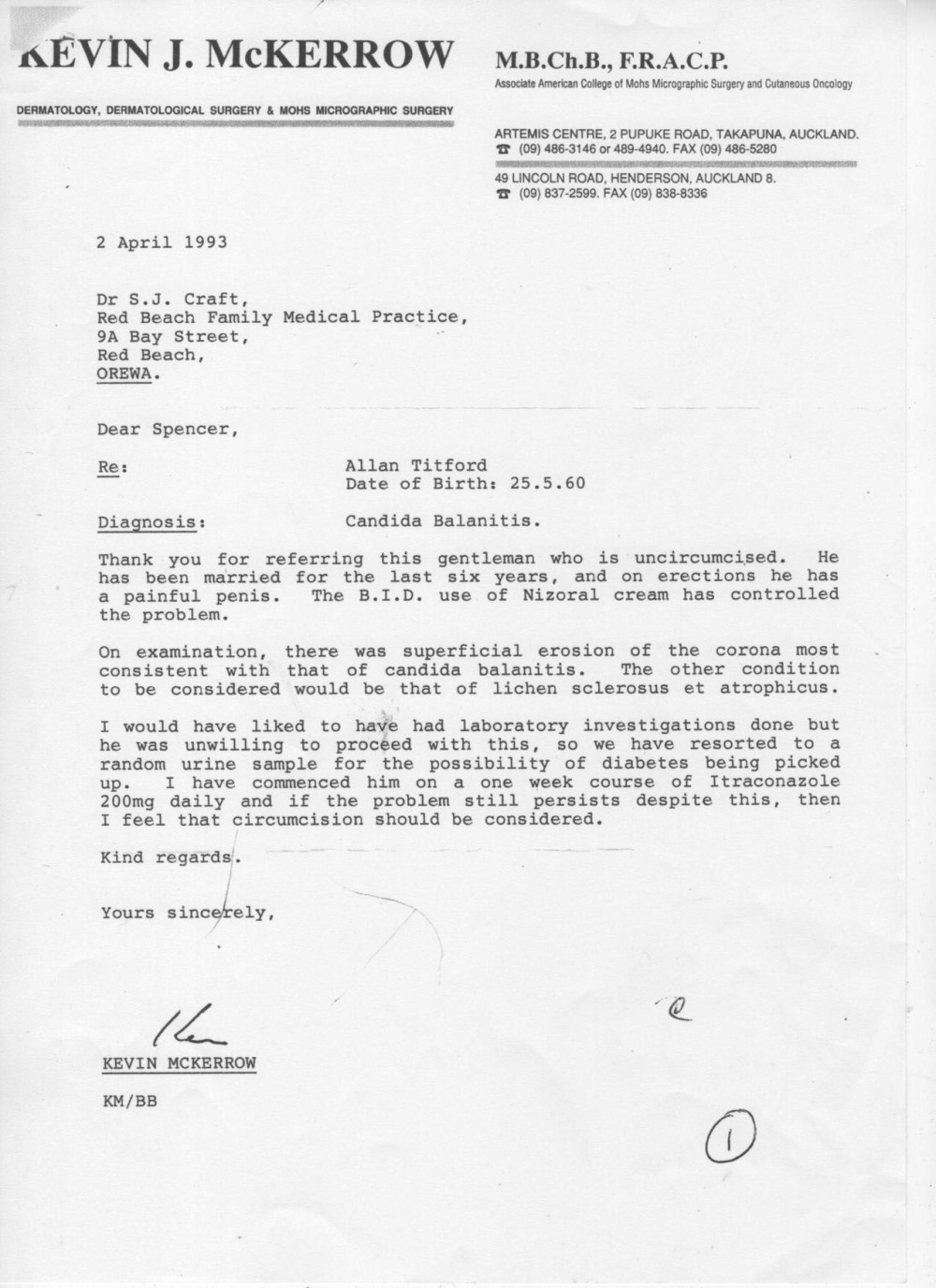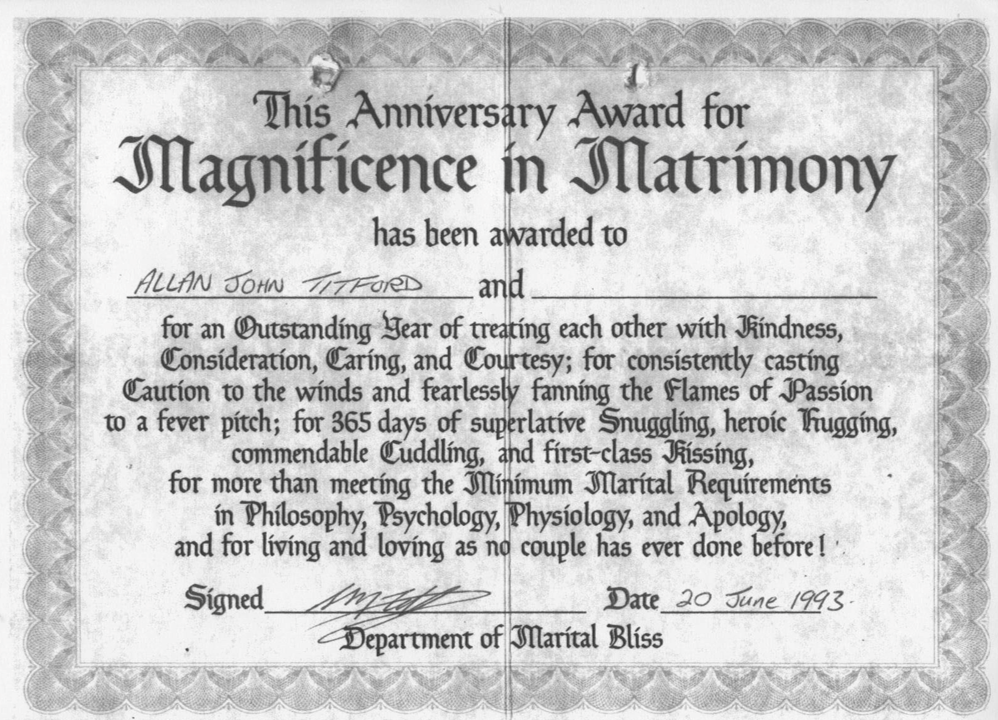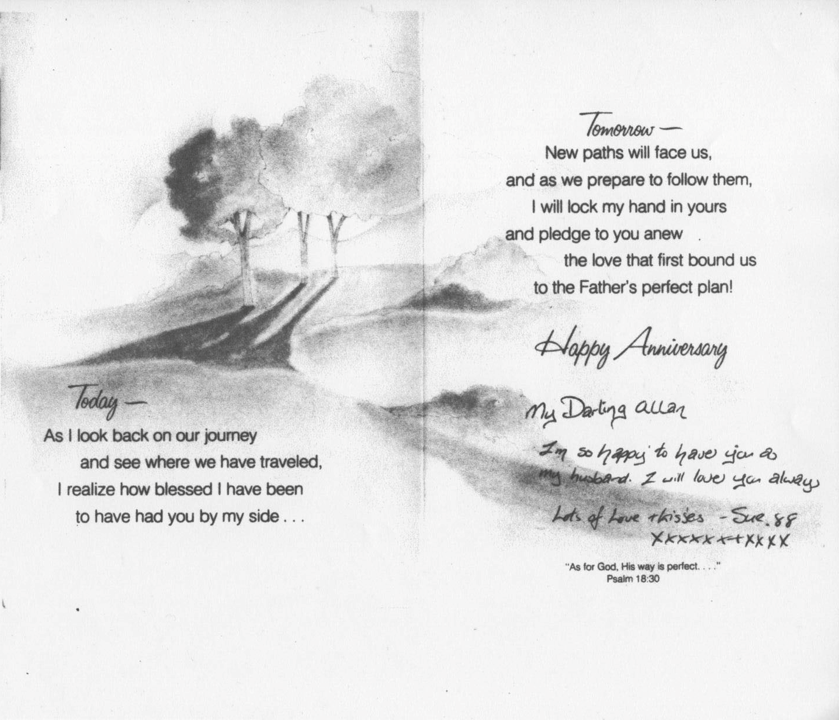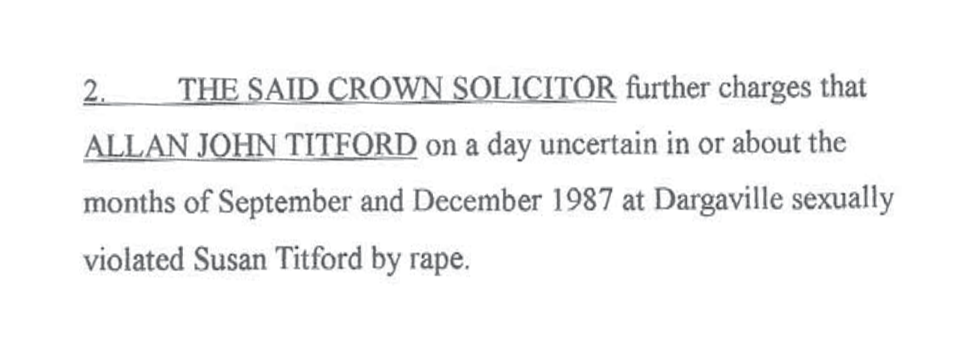What follows is an email and affidavit from longstanding friend of both Allan and Sue Titford, Martin Doutré.
The first line of Martin’s email refers to TVNZ’s Sunday programme of last week — a predictable state hatchet job, but one in which the children looked far from convincing.
Read this and learn why.
_____________________________
From: Martin Doutré
To: John Ansell
Date: Tuesday 3 December, 2013
Hi John,
If that was a sober and drug-free James on the [TV on Sunday] night, then he’s a hell of a lot dumber than he used to be. The lights have certainly dimmed significantly in 3 years.
Perhaps he thought he needed a bit of “Dutch courage” to face the TV interview ordeal. He did not look or sound like the James I knew so well over the years, but more like a zombie. He was utterly away with the fairies and spoke like a complete retard, slurring his speech and having obvious difficulty saying anything meaningful or coherent.
What happened was that, between about the beginning of 2006 onwards, Allan was really, mostly, an absentee dad, rarely at home.
From January 2006 through to mid-July he was mostly on the road with me and Ross Baker, following the Treaty 2 U propaganda roadshow around the country.
The same holds true for the summer to autumn months of 2007.
Susan and the kids had ways of letting him know that they liked it better when he was away, and consequently he was often over at the Kaikohe farm or down country looking at vintage cars or whatever.
For the most-part, Susan ran the farm and household, but for long spells outsiders were paid to come in and do the milking, like Mr. Flay, a neighbour on nearby Kumi Road, or various others.
Also, a digger contractor called Barry was working almost full time, for seemingly several years, on cutting miles of drains.
Allan did only one milking per day, in the afternoon around 3:30 pm. There was never, in my memory, any necessity for anyone to be up at 5 am and out in the milk-shed.
I stayed at the house many times over the years and everyone got up at the normal, expected hours on school-days. Susan got up the earliest and began rustling up breakfast for the kids and preparing school lunches, aided by the older girls.
The kids were out the door and down the drive to meet the bus just after 8 am or so. All were well dressed and scrubbed up, sporting flash, designer-type school bags. They certainly never looked like impoverished kids.
Alyssa, when she was about 15-16 claimed she was being bullied at school in Kaitaia and asked to stay at home and do her courses by correspondence school. A lot of the so-called bullying was, from memory, text-harassment that came through her phone.
Being a tall, strong girl I know she was capable of taking very good care of herself and, at one time, beat up a boy who was picking on James.
I’m quite sure the real reason she quit school is because she simply couldn’t be bothered going.
She enrolled in the correspondence school course and, for a time, did her lessons at the dining room table for an hour or two a day, which, from my memory, seemed to be sufficient to get through all the assignments.
James, who hated school and wanted to escape the daily drudgery of catching the bus, also managed to talk his parents into completing his education by correspondence.
His excuse for home-schooling was also bullying.
Allan, as I recall, was very much against the kids leaving school but, because of his very frequent absence from home and hearth, the older kids got their way by browbeating Susan into agreeing.
It would be interesting to go into their school records to see how many correspondence school assignments they bothered to complete.
If the onus was on anyone to monitor them and make sure the assignments were done, then that task fell on Susan, who was always there, whereas Allan was so-often absent for long spells.
Susan had, seemingly, full access to the bank account and spent large sums each week on food or domestic necessities.
This business about them all being slaves and working until 10 pm at night is rubbish.
The milking was finished by about 5 pm and Susan, Alyssa & James had the cows back in the fields and were cleaned up by dinner time.
The girls pitched in to prepare the evening meal and then everyone sat around the lounge eating dinner, with plates in their laps, watching TV for a few hours.
Of all the group, Susan’s hours on the job were the longest, mainly due to being the first up in the morning and the last to get to bed at night after the rest of the brood were bedded down.
She often did typing for Allan in the evenings or during the day and had a very full schedule, but also leisure time and long spells of playing electronic games with the kids or reading to them or looking at stuff on Trade Me with them.
There were also the endless nappies to change and babies to hold and cater for.
The daughters Ulanda and Shiane pitched in a lot taking care of the little ones.
Ross Baker and I agreed wholeheartedly that Susan had a very heavy, unenviable schedule, but a huge part of the burden related to her having (by 2009) seven children.
That was a lifestyle choice that she chose herself. She wanted seven kids.
I don’t agree that the lack of accomplishment by these older kids is solely Allan’s fault and the largest contributing factor for the failure falls on the kids themselves, who schemed to drop out of school and then couldn’t be bothered following a daily routine of doing their home assignments.
They certainly had ample time available to fulfil those assignments on a daily basis, but opted to do other things instead.
By 2011, Alyssa was well known for pushing drugs in the North, according to a digger-driver mate of mine, Ian Pyke.
By that time Allan had been out of the picture for 18 months or more.
Just before the split, Allan told me that Alyssa was going to do a course to enter the hotel or hospitality industry as a tour guide or the like, and he had aspirations and high hopes for her in that regard.
However, she didn’t have the self-discipline to follow it through, and decided to run wild and go badly off the rails instead when beyond the jurisdiction and control of her father.
She apparently settled for being a thief and drug user and pusher instead, if the reports from people in the know in the North are correct.
When she’s accused of things or caught out, she smiles or hides behind a smile … very strange … a real smiling assassin.
Best wishes,
Martin.
_____________________________
TO WHOM IT MAY CONCERN
I have been asked to make an account of events that transpired between Saturday 17 July and, ostensibly, 29 July 2010 related to my association and experiences with Tyler Jackson, Alyssa Cochrane (née Titford) and James Cochrane (né Titford).
As a result of these events and my subsequent devolution of critical and worrisome facts to Allan Titford (father of Alyssa and James), he phoned Susan Cochrane, his estranged wife and mother of Alyssa and James.
17 JULY 2010
At approximately 9:15 pm I received a phone call at home from Alyssa, asking for my assistance.
She was at a car stranded in the suburb of Glen Eden, Auckland.
I knew already that she, her boyfriend and James were in Auckland, as they’d asked my son Alain for money earlier in the day and had called by his flat.
He had refused to give them any more money as he’d already given James funds earlier in the week, when told that James needed gas money to get him and Alyssa home to Hikurangi.
James said in a text message, on the earlier occasion, that they had come down to Auckland seeking work and that there was a milking job going at Tokoroa to look at.
On this very frosty night of 17 July 2010, I called my son Gene to return from the city and pick me up, as we needed to tow James’s car home to safe circumstances.
We went to the fairly seedy location and found the stranded car at a BP service station.
We towed the car home to [MARTIN’S ADDRESS], arriving at about midnight.
Beds were made up at Gene’s place down the back of my farmlet, where the weary trio spent the night.
18 JULY 2010
We put James’s Nissan Laurel into a sunny spot and commenced working on it to find and check the fuel pump.
My son Gene tested all of the electrical connections to the fuel pump with a multi-meter and found them to be working, but the internals of the pump were dead.
Gene also drove Alyssa and Tyler to Kumeu to borrow money from one of Tyler’s ex-girlfriends.
James and I inspected the fuel pump on a spare Nissan car that I have, but found it to be too small to fit his much larger Nissan Laurel.
During the first day of staying at my place, Alyssa and Tyler told me how they’d been virtually forced out of the house at Hikurangi.
They enumerated their ongoing, intolerable domestic problems as:
- The constant interference in the family affairs of Susan’s father (Graeme Cochrane) and uncle (Richard Cochrane), who were at the house seemingly every day making demands and intimidating everyone or being very controlling.
- James complained that his grandfather or uncle threatened to beat him up on frequent occasions or were argumentative.
- Tyler complained that Susan, Graham and Richard didn’t like him and that he was made to feel very unwelcome.
- He also complained about the confrontational attitude of another man living at the house called Gene, who was about 26, but who had been sleeping in the same bed as Ulanda (Allan & Susan’s second eldest daughter), since she was just 13-years old.
- Tyler mentioned that he would never do such a thing, but that because Gene was Uncle Richard’s friend both Graeme and Richard turned a blind-eye to this statutory rape of a minor.
- Alyssa made a similar complaint to her great-aunt Aileen (Allan’s aunt) on the evening of 26 July 2010.
- Alyssa also complained to me about the confrontational attitude coming from Gene and Ulanda and the constant scrapping.
- After she was at my home for a day or so, she received a phone call from Ulanda stating that she and Gene were taking over Alyssa’s bedroom, and there was also some kind of altercation concerning Alyssa’s TV.
- Alyssa and Tyler said that Gene was a low-life who had stolen all of the heavy cast-iron wheels and other vintage cast-iron ornaments out of the landlord’s garden at the Hikurangi home and sold them for scrap for $20.
- Tyler said he had far more integrity than Gene, but that Susan and the others had turned against him, forcing him out and shunting him on.
During the day both Alyssa and Tyler convinced me that they were making a clean break and would begin a life together as farm workers, milking cows.
I knew that Alyssa had tremendous talent and training in that regard and assumed that Tyler was similarly trained-up and capable.
They represented themselves as an ambitious young couple trying to get a start in life, but encountering a few present mechanical-financial problems that were holding up the process.
I determined that I would help them get on their feet as best I could.
18 JULY 2010
Tyler asked me if he could work out a deal with me for a very nice, but deregistered, Nissan Avenir station wagon I had sitting in storage.
He said it would be perfect for their job-hunting around outlying farms, as they could sleep in the back.
James was running them around for the moment, but needed to get back to the North.
Tyler said he had worked as a car certifier and still had contacts in the industry that could do the certification.
I tentatively agreed, but would discuss the matter in more detail after thinking about it.
In the evening of 18 July 2010, Allan Titford called me, but I gave no indication that his children were at my home, as I had been sworn to silence by Alyssa not to tell either Allan or Susan of their whereabouts.
19 JULY 2010
Returned from work and gave Alyssa $20 for some basic supplies.
My son Gene was hooking up James’s car to haul it to a distant garage before it closed where it would be fixed by Tyler’s mate sometime later in the week.
Gene had already torn the guts out of his own car and clutch getting this very heavy Nissan Laurel home and I advised against it, especially in peak hour traffic.
All they needed was a fuel pump and the relatively easy repair could be done at home within a couple of hours once we had the parts.
Tyler purchased some parts through a mate, but when they arrived they were found to be wrong.
I took Alyssa to The Warehouse and bought her some urgently needed supplies, as well as other items.
I later got onto my digger and pulled my white 1995 Nissan Avenir up to the workshop in preparation of going over it mechanically and cleaning it up for Alyssa and Tyler.
We had started it up and it ran very nicely, but the sticking clutch cylinder needed replacement. We water blasted the car and put internal trim and fittings back in place. The little station wagon came up looking very nice.
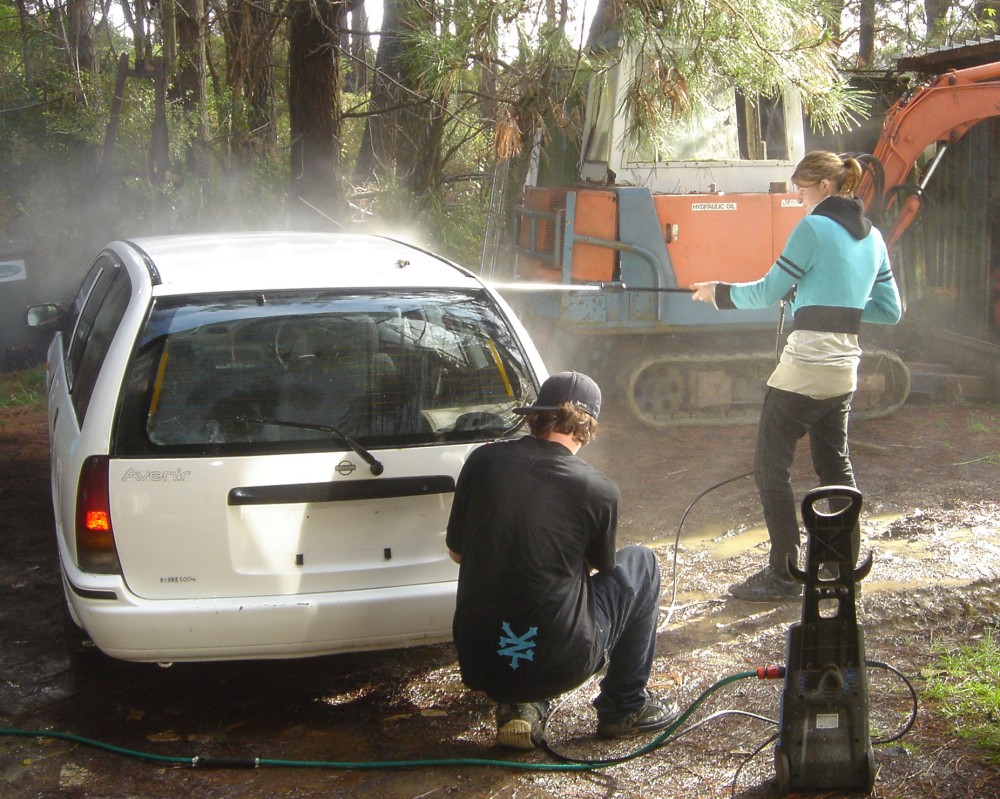
Alyssa water-blasts the 1995 Nissan Avenir car while Tyler works on the right tail-
light. The deal was that they could have the car on the basis that they get their own
certification for it, and then certify another car for me that I had on the property.
The value of the car I gave them, once certified, would be between $2000-$2500.
The weather was generally very cold and often wet, and I was concerned about how lightly clad both Alyssa and, especially, Tyler were.
Tyler arrived with a cough, which seemed to get worse with each passing day. Gene gave him a jacket to wear.
20 JULY 2010
Alyssa and Tyler did more tidy up work on the Nissan Avenir, while James removed the defective fuel pump from his Nissan Laurel.
After work I went and picked up a mechanic friend who had a multi-vac unit for sucking through the clutch fluid to get the Nissan Avenir going.
Barry Taylor completed the task of making the station wagon fully driveable.
He had, the year before, done substantial work on Alyssa’s Hyundai sedan, which she had sold to her mother.
21 JULY 2010
Took them to the ASB bank to get out money.
I’d stocked up food and drink supplies to keep them going, but was mystified as to why they were smoking so much, when they were so lacking in resources.
They said they wanted to deliver the Nissan Avenir car to the certifiers and Tyler had taken new brake pads from my spare’s stockpile and installed them.
22 JULY 2010
While fixing my own car in my workshop, I was approached by Tyler, Alyssa and James, who wanted to arrange for me to pick them up later and take them to Waiwera to get the replacement fuel pump for the Nissan Laurel.
I later picked them up at the local garage from where, they said, they’d sent the 1995 Nissan Avenir to AA Compliance Centre, Portage Rd, New Lynn.
Weeks later I was able to learn that they’d very deceitfully sold the beautiful little station wagon to a towing company for some paltry sum, simply to get cigarettes and enough cash to buy James’s fuel pump.
When I finally learnt this I was heartbroken.
Alyssa had, apparently, used her driver’s licence as ID to show the tow-truck driver that she was the owner of the car being sold.
Both she and James were fully complicit as accomplices in the utterly stupid disposal of this car, which they had neither paid for nor intended to pay for in the future.
To add insult to injury, the lying trio, under false pretences, then had me drive them to Waiwera, where they purchased a fuel pump using funds from a car that they had, essentially, stolen from me.
I was now under the very mistaken impression that my valuable “gift” to them sat over in Glen Eden awaiting compliance and, that in a few days, the other car I had would undergo the same process, as agreed upon.
23 JULY 2010
A very miserable, cold rainy day.
I came home from work to find that James and Tyler had failed to get the fuel pump working and, in the attempting various things, Tyler had very stupidly cut the wires leading to the air-flow meter sensor.
Not only that, Tyler had utterly smashed the electrical plug leading to the device, then biffed it in the mud.
We searched around and retrieved the smashed plug.
Gene and I worked for hours re-soldering the mutilated parts and Gene finally got the car going, but running rough, late in the night.
Earlier I had taken them shopping and bought them groceries.
I was now beginning to see how dysfunctional, chaotic and out of control these kids were.
In my diary I described them as butcher-mechanics.
24 JULY 2010
It was a Saturday and the Nissan Laurel ran but sounded overly grunty, as if it was almost drowning in fuel.
In the morning they loaded up the car and headed north, or so I thought.
As they drove away, I was grateful to see them depart, as the last week or so had been very taxing and tiring. At last, Gene and I finally had our lives back.
Later, I had a call from my son Alain. The trio were stranded again, with no money, at Glen Eden (they’d gone south & not north).
Alain drove to them and gave them cash for gas, but told them to never ask him for money again.
They limped their gas guzzling car to me and only just made it.
The reasonably short trip across the city cost about $20.
Because the sensor was badly mutilated, the car was now consuming huge amounts of fuel.
I was stuck with the trio again. Fed them a pork roast dinner. Tyler was very sick with the flu and a terrible cough. I made him up a batch of Maori medicine from the kumaraho plant, and this cleared the terrible congestion.
25 JULY 2010
It’s Sunday and Tyler had apparently arranged for a tow truck driver friend to come and pick up the now sabotaged and defunct car in the morning and deliver it to Hikurangi.
We made a supreme effort to tow the heavy car up our drive to the main road, where the transporter could load it.
I had to finally take the digger up to push the Nissan Laurel up the steep part of the drive and onto the highway.
The trio waited at the car all day, but no tow truck ever turned up. It was all nonsense.
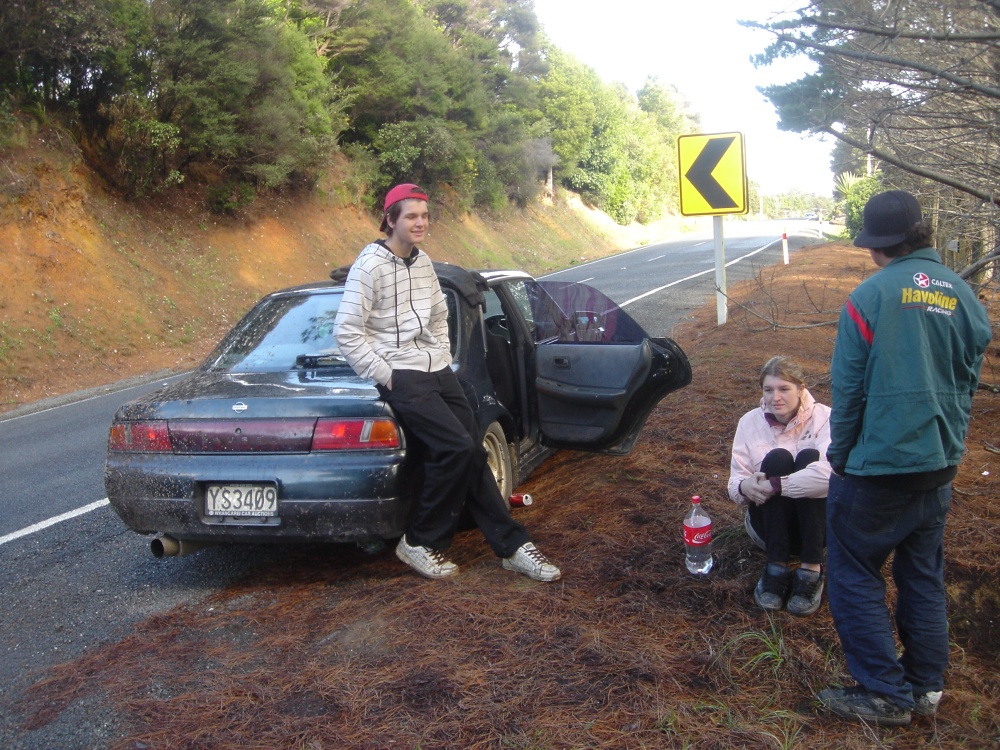
After a mammoth effort to get the car to the roadside for pickup, no tow-truck ever turned up.
They later came down for dinner.
Alyssa was in urgent need of more supplies, so I took her to the Warehouse and she stocked up, but also managed to bum $15 more off me at the service station for her much-needed cigarettes, saying she’d have money tomorrow and would pay me back then.
Of course, she had no such intention to do so and never did.
The Nissan Laurel spent the night on the roadside.
26 JULY 2010
I went to work in the morning, but had a break between classes where I could come home for a couple of hours.
Found the trio basking in the sun.
Tyler, said he’d like to buy a deregistered Subaru Legacy car, belonging to my son Alain, off us as he needed the motor for a car body he had over at Herald Island, near Whenuapai.
He said he’d already talked to my son.
I called Alain, who had abandoned the car at my farm and he said for me to do what I liked with it, as he had no further interest in the vehicle.
The car, although damaged, had an excellent motor in it that Allan Titford and I had hauled back from Matamata.
It also had a new clutch and pressure plate, a new gearbox and 4 new tyres, which I needed for another car.
Tyler offered $600 and I said I’d think about it.
I also said that I wanted to resolve one thing at a time, and we still hadn’t finalised the certification of the other cars.
I also said that if I sold it I would still want to keep the new tyres on it.
Later, as I hurried off to work, I passed the trio sitting in my kitchen, Tyler announced that his tow-truck mate, Junior, was coming to get the Subaru.
I said very emphatically, “NO! — the car is to be left where it is”.
Later I returned from work to find that the Subaru was gone.
The trio had also wandered off to Westfield Shopping Centre to buy stuff. (As I found out weeks later, with money obviously acquired by selling the Subaru to the tow-truck company.)
Again, apparently Alyssa used her driver’s licence to claim ownership of the car, so that the towing company were reassured that they could legally remove it from my premises.
I now knew what I was dealing with.
These were not the responsible, work-seeking individuals trying to make a positive start in life I had been led to believe they were.
Alyssa and Tyler, like Bonnie and Clyde were a couple of upcoming crims and James was little better than their getaway driver.
I was gutted that the Titford children, whom I’d known for years, would be capable of bare-faced lying to me to this degree.
But the true magnitude of the deception I wasn’t to find out until many weeks later.
For their defence in hauling away the Subaru against my expressed wishes, Tyler and the ever-deceitful others feigned surprise at my attitude, in saying, “Oh, but we thought you said it was alright to take it away”, which they knew was an absolutely falsehood.
I had been sworn to silence, and had kept the location of this triad in confidence from Susan and Allan Titford, as requested by Alyssa and James.
During the preceding week, multiple phone-calls and text messages had been sent to the trio by Susan, asking where they were and urgently requesting that James come home immediately for a farm-job that had been arranged for him.
With the theft of the Subaru, I was at the end of my tether and determined to terminate this drawn-out pantomime they were playing at my expense.
My son Gene said he’d take James home that evening to Hikurangi.
I said rather bluntly to Tyler and Alyssa to make up their minds what they were going to do — either come to Hikurangi with us or stay somewhere else in Auckland.
I left them to talk it out and loaded up James’s gear.
I called Susan and explained the situation, and that we were going to deliver James home late in the evening and possibly Alyssa as well.
She said she would wait up for us.
Tyler wanted to go to his mum’s place, supposedly over near Schnapper Rock Road, but wanted a very tearful Alyssa to go home to Hikurangi.
Both Gene and I had to work the next day and did not have the luxury of dilly-dallying while immature, love-struck brats made up their minds as to what they would do.
We attempted to drop Tyler at a video store near Schnapper Rock Rd, but he wasn’t going to let anyone know which house belonged to his mother.
Alyssa clung like a vine to him and wouldn’t get back in the car until Tyler forced her to.
He disappeared into the rainy night and Alyssa was hysterical as we drove away.
She attempted to exit the car at the lights and run off in the pouring rain to chase Tyler.
Thankfully the lights turned green while we were still rolling and she couldn’t exit.
She sobbed and yelled and it was evident there was no way we could go anywhere with her in such an out-of-control state.
I told Gene to drive home.
We’d lost a whole hour of travel time because of Tyler’s needs and Alyssa’s tantrum.
I called her Aunty Aileen, who lives in Brown’s Bay, and asked if I could drop Alyssa there.
She was very reluctant, but said yes after I explained the urgency of the situation.
Gene and I drove James home and dropped him off.
Susan and I had a talk and she gave me a number of revelations about Tyler and how he was using an alias name and had a record of convictions.
She wanted both Alyssa and Tyler to appear in the North, as the local police wished to grab and interview him.
Susan was trying to find out his real name, and was fairly sure she’d tracked it down, but would need to check more.
Susan also told me that Alyssa had been running wild, and had pretty much burnt all of her bridges with all of her friends by constantly borrowing money off them.
She had accrued large debts.
I was warned that Tyler was a very dodgy character and lied endlessly.
Susan also told me I would never see my cars again.
Before heading home, I requested some clothing for Alyssa, which I would drop by her great-aunt’s place.
Ulanda made me up 4 plastic shopping bags of items.
Gene and I were almost stranded in Whangarei when the alternator of the car failed. We later got it going again by revving the motor to red line, then headed out on the harrowing ride south.
It fully failed at Wellsford and we had to drive the last 40-miles on what power remained in the battery.
27 JULY 2010
I had just endured about 10 days of chaotic hell in trying to cater to the needs of this out-of-control trio, with at least two seasoned con-artists in the troupe.
I was tired at work, but got through the day.
I had called Aunty Aileen in the morning to say I had clothes for Alyssa, but Aunty said that Alyssa had only stayed there an hour last night.
She had been picked up by Tyler and some dodgy-looking mates in Brown’s Bay, where Aunty had been bullied into taking her.
At least the nightmare was over … or so I naively thought.
At about 10 pm, an hour after I had gone to bed, I received an urgent phone call from Allan Titford.
He had been called at home at Awanui by Alyssa, requesting help.
Because he was so far away and couldn’t render immediate assistance himself, he called me.
He said, “Alyssa missed her bus and is stranded at Westfield Shopping Centre. Could you please pick her up and give her a place to sleep for the night?”
I reluctantly explained to Allan that Alyssa, James and Tyler had stayed with me for the past ten days and made a short account of the sorry situation.
The main priority at that moment was to get Alyssa into safe circumstances, so I hung up with Allan and called her cell-phone number and Tyler answered.
I asked to speak to Alyssa and upon doing so I arranged to pick them from the Shell service station in Albany.
It was a bitterly cold night again and I found the two of them to be only very lightly clad, without decent warm jackets.
Tyler was very hesitant to get in the car and was hiding behind a pillar.
I finally said, “Make up your mind ’cause I’m leaving now”.
He climbed in and I drove them home in irritated silence, to a good bed and much-needed warmth. Why do these damned kids have to wait till such a late hour to get people scurrying after them?
I called Allan at Awanui and said that Alyssa was now in safe circumstances, but mentioned how I’d found her shuddering with cold, wearing only light attire.
I said that the two of them were in real danger of hypothermia out in the elements like that in the dead of winter.
I told him that Susan had said that Tyler is a very dodgy character, with a criminal record and using an alias. I had firmly concluded that Tyler was a compulsive liar and that everything spewed out of his mouth was false.
I still held mostly to the conclusion that Alyssa was just a stupid love-struck kiddie, who was staying dutifully loyal to her beloved.
I now know better.
28 JULY 2010
Alyssa and Tyler were getting a bus northwards at 10:30 am and Gene dropped them at the bus-stop.
Under utterly false pretences they’d had both Allan, as well as Susan, as far as I know, send down money for bus tickets that were never going to be purchased.
When I called by the Post Office in the late afternoon to mail off a package they were there and looked sheepishly surprised to see me.
I said, “I thought you were getting a bus at 10:30 am”?
Tyler mentioned how they’d missed that bus, but were now getting the 4:30 pm one … yeah right!
Later, at home my son Gene reckoned I’d be getting another call late tonight to come and pick them up, which proved to be prophetic.
I received a call from Alyssa at 9:30 pm saying that they’d missed the bus and what should she do?
I told her to call Tyler’s mother at Schnapper Rock Road and get some assistance from Tyler’s family.
Much later, Allan Titford called and we discussed the worsening situation of his daughter becoming a “street kid”.
Aunty Aileen wanted nothing more to do with Alyssa, especially chasing around after her in the middle of the night.
I asked Allan if his brother Brian, who lives just north of me in Waiwera, could take her in.
Allan then called Brian, who wasn’t interested in helping.
Allan called back and told me that there were no family resources of shelter in the offering.
I then called my son Gene and woke him up, then forewarned him of yet another nocturnal visitation.
I called Alyssa to find out her whereabouts. She and Tyler were outside Pak N’ Save beside Westfield Mall.
I headed down at midnight and found them standing near a security guard who was eyeing them closely.
Alyssa was smoking. They got into the car, out of the bitterly cold night, and I drove them home, pissed off by their out-of-control, ever-disruptive shenanigans.
29 JULY 2010
I didn’t have to start work at the university until midday, so prepared a letter-document, in the name of Tyler Jackson, addressed to the AA Compliance Centre, Portage Rd., Glen Eden detailing how the white Nissan Avenir car and Subaru were to be retrieved by Martin Doutré.
Tyler and Alyssa had continuously adhered to the lie that both cars were delivered to those premises by Tyler’s tow-truck mate “Junior”.
When Alyssa and Tyler appeared for their ride down the hill to the bus-stop, I confronted him with the document.
I told him to write down the names and phone numbers related to the individuals and companies that had removed the cars, as well as the present whereabouts of the vehicles and to sign it.
Alyssa looked very sheepish and Tyler became defensive and righteously indignant.
He nevertheless, wrote on the document, then crossed stuff out, as if very confused and under pressure after being sprung.
Gene and I drove them to Westfield Mall.
They got out of the car looking totally pissed off and angry at me and strode off without comment.
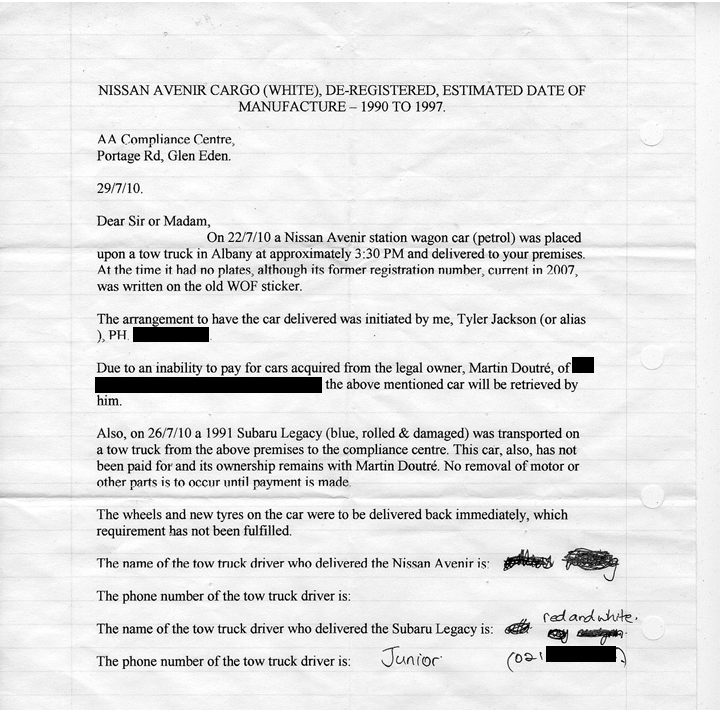
The document I tried to get Tyler Jackson (alias) to sign.
As it turned out, the cars never made it to AA Compliance Centre, Portage Rd, New Lynn and staff had no knowledge of them.
Also, the name that Tyler wrote for the towing company did not exist and the phone number given for his tow-truck driver mate was a fabrication.
Later on the same day I received a phone call from Tyler promising me profusely that he would honour his debt and commitment to me.
In the preceding days, I had primed Allan Titford about the potentially dangerous situation Alyssa had placed herself in.
Tyler Jackson was an unknown quantity, but seemingly had a criminal record for assault, if Susan was right about his real name.
She was going to tell the police the name she had found and have his identity verified.
It was in this critical atmosphere that Allan called Susan to find out what was going on and what to do about the dangerous situation involving his daughter.
I expected no less, as I was caught in the middle trying to deal with Alyssa’s problems, and had been systematically fleeced of assets in the process.
It was long past time for the parents to intervene directly and take full responsibility for the actions of their children, and I made this very clear to Allan.
By this point I’d had a gutsful.
29 JULY 2010
I made a call to Alyssa at about 8 pm to make sure she was in safe circumstances and had a place to stay that night. She assured me she was indoors and safe.
Much later that evening, I received a call from Allan Titford who said he’d called Susan to find out about Tyler.
He told me very emphatically that both Susan and he wanted me to lay a complaint with the police, against Tyler, over the theft of the cars.
I told him that I’d received a promise from the boy that he would honour his debt and that, inasmuch as I had only entered into the arrangement a few days ago, it was too premature to initiate a police complaint against the kid.
I told him that it might come to that later.
Allan then told me that if Alyssa became a bank robber it would be my fault.
He then yelled, “That’s the problem with this bloody country, everyone stands back”, then slammed the phone down in my ear.
I have not talked to him since.
For the next few weeks I remained in contact with Susan, and she kept me updated on her investigations.
She had been correct that Tyler’s real name as Anthony Matthew Lake.
She continued to have ongoing trauma in her dealings with Alyssa, including the theft of her car and later the theft of $1900, when Alyssa stole her credit card and maxed it out.
I have, however, stayed in fairly regular contact with Tyler (Anthony) who finally told me the full sordid story of what happened to my cars.
He has so far made two payments towards compensating for their loss.
30 JULY 2010
I got a phone call from Aunty Aileen that Allan had been arrested for calling Susan.
Late in the night of the 30th I commenced a letter to Susan, conveying my disappointment that she would have Allan arrested for calling her for information that would help him intercede in the worsening situation related to their daughter, Alyssa.
I sent the letter to Susan just after midnight on the 31st.
This is what it said:
Hi Susan,
I find it very sad that Allan might have to go to gaol for a long spell because he called you after I told him of the terrible plight that Alyssa was in.
When he first called me to seek my help in getting her to safety, out of the cold in the dead of night, he had no inkling as to what the true situation was. He just figured she was somehow stranded momentarily and needed help. Alyssa had called him, seeking his assistance.
I had been sworn to silence by them and told horror stories about how they’d been ejected from the home, etc., and how unfairly they’d been treated … ad nauseum … but it was dawning on me that they were totally dysfunctional and out of control.
The problem lay with them and no-one else.
I was very reluctant to tell Allan about the fiasco going on, but simply had to, as the situation was getting dangerous … with his daughter out in the dead of night in midwinter and so lightly clad that there was a real risk of hypothermia.
She had developed a bad cough and Tyler had never stopped coughing from day-one (the incessant smoking certainly didn’t help).
I had no other option but to fill Allan in on the seriousness of the situation. To have done otherwise would have been irresponsible by that point in time.
We had taken James home on Sunday night, but it was clear that Alyssa was not going to cooperate in getting herself back into safe circumstances and had thrown a hysterical, sobbing tantrum when we tried to drive her north with James.
After Tyler had disappeared into the night near Schnapper Rock Rd, she had attempted to exit the car at the lights, but we had kept the car moving.
I was obliged to get her to Aunty Ilene’s, as the only available, safe option. She’s an adult and has a legal right to make her own decisions, regardless of how stupid those decisions might be. I could not and would not force her to go north against her will.
As it turns out, and unbeknown to me, she only remained there at Ilene’s for an hour.
All of this I told to Allan and he said that the only thing he could do is call you to see what the full situation was and find out about Tyler, so that he had some idea on how to proceed.
Under the circumstances of Alyssa being on the loose and out of control, I considered that to be a very reasonable and welcome move, as I was caught in the middle.
Both Gene and I have had to shell out quite a bit, both in time and money to try to normalise the situation as much as possible, but it was well past time for the parents to confer on the matter between themselves, share information and come up with a mutually agreeable solution.
It disturbs me now to know that Allan has now been incarcerated on a “technicality”. I’ve always considered that there is the “letter of the law” and there is the “spirit of the law” and the reason for his call to you was well-intentioned, with Alyssa’s well-being in mind.
In saying this, I have not talked to Allan, but heard about him being arrested when Aunty Ilene called me just before work this morning.
I’m astonished that anyone would want to penalise him in this way for trying to intercede and help his daughter.
My last conversation with Allan was pretty much an argument over “calling the police and getting Tyler arrested for theft”. I considered I was being bullied into something too prematurely.
I have talked to Tyler and have received assurances that the white Nissan Avenir is going to be brought back here. Also, I’ll retrieve the Subaru if certain conditions are not met.
I’m going to give the young man a certain amount of time to fulfil his obligations, or, if he can’t, to return the goods and normalise the situation … before I seek to bring the wrath of heaven down on his head.
Both Gene and I tried to help the travelling trio because I was initially called upon by Alyssa to do so, but I have no inclination to suddenly become a henchman. I’ll deal with Tyler in my own way and time.
I’m sorry to hear that Alyssa and Tyler didn’t get on the bus. Maybe I’ll be getting a phone-call at midnight again.
Best wishes,
Martin
My only other direct contact I’ve had with the Titfords was to help James get his car, broken down and in storage at my place for over a month, going and underway on 2 September 2010.
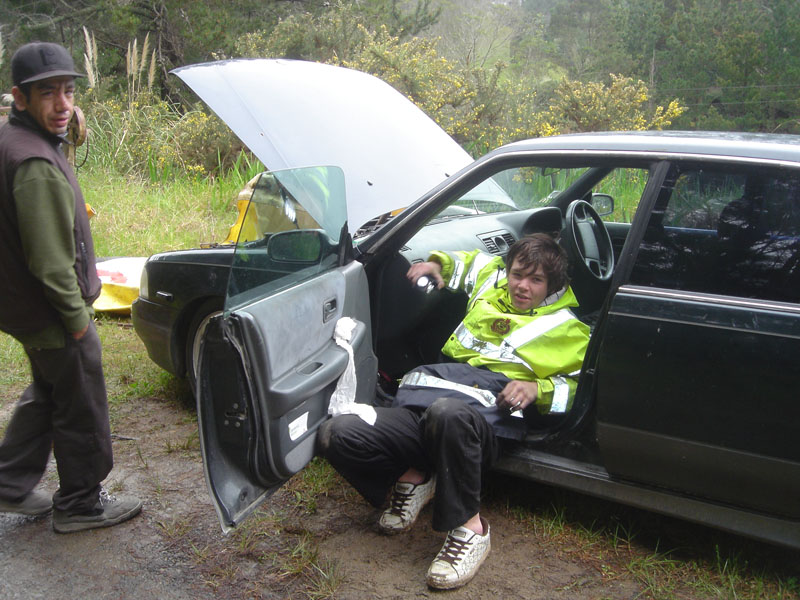
James, brought down from Hikurangi by Maori warden and friend, Daniel, to install a new air-flow meter sensor, so that the car could finally be driven home.
The new fuel pump in the car had been purchased using funds from the illicit selling of my very tidy Nissan Avenir station wagon to a tow-truck company.
If I were to pursue any action with the police for the prosecution of Tyler Jackson, it would also have to include Alyssa and James, who were complicit in the ongoing fraud and lies told to me.
IN SUMMARY:
I intimated to Allan Titford in several conversations between 27 and 29 July 2010 that he needed to sort out the mess and havoc that his kids were leaving in their wake. They were fast becoming chronic liars and deceitful con-artists.
Martin Doutré
These events were also directly witnessed by Gene Doutré and, to a lesser degree, Alain Doutré and Barry Taylor, as well as others who can be named.
